Posted by Powee Celdran
DISCLAIMER: Although this is mostly a work of fiction, it is largely based on true events and characters. It seeks to alter the course of actual events that transpired in the 9th and 10th centuries AD. This story will begin with events that happened in real history but will become fictional as it progresses.
Previous Story: Byzantine Alternate History Chapter VI- 9th Century
“Look, I’m giving you these rules, so that you will not leave the best advices and the public interest in the light of past experiments and filtered information.” -Constantine VII Porphyrogennetos, De Administrando Imperio
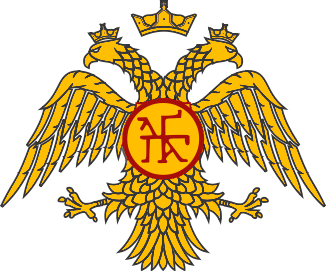
Welcome to the 7th chapter of the Byzantine Alternate History series by the Byzantium Blogger! Now before I begin this very lengthy article that will span more than a hundred years, I just have to say that I can’t believe I have now reached this far in my series basically being more than halfway through the 1,100-year history of Byzantium, truly a milestone indeed! Last time, in chapter VI of this 12-part series, I discussed a possible and highly popular what if scenario of the Byzantine empress Irene of Athens actually marrying the rising star of the time, the Frankish emperor Charlemagne in 802 which could have happened but never did. The previous story too talked about one large united Frankish-Roman Empire as a result of this said marriage that would be a European superpower like the Roman Empire of old and would be powerful enough to turn the tide against the Byzantine Empire’s two mortal enemies and greatest threats being the Arab Abbasid Caliphate in the east and the Bulgarian Empire in the north. Though this marriage would have been necessary only in reversing all of the Byzantines’ economic and military setbacks in the short-term, but in the long-term this union of both Byzantine (Eastern Roman) and Carolingian Frankish Empires would only be rather confusing as both halves of the empire (eastern and western) were of different cultures and religions to put it short, and the succession system would be even more complicated. Now since the alternate history scenarios featured per chapter in this series do not continue with each other, the said fictional marriage from the last chapter and the union of the two empires would not continue here, and again as each story in this series is a stand-alone, this chapter would again begin discussing real historical events which will have a twist as it progresses. True enough, this marriage between Irene and Charlemagne was not that necessary in order to reverse all of Byzantium’s setbacks, as about a century after this marriage was supposed to happen, Byzantium was long done with its dystopian-like Dark Ages period that the past 3 chapters were set in, and was now in its second golden age- the first one being in the 6th century under Emperor Justinian I the Great (r. 527-565)- and now here out of Dark Ages, the Byzantine Empire as the 9th century ends became a cultural and military power in Eastern Europe and the Mediterranean, and together with the Frankish and Bulgarian Empires, one of the 3 major powers of early medieval Europe as a whole. For almost 3 centuries, the Byzantine Empire plunged into a dark age where the empire rapidly lost a great amount of territory and was under attack by enemies on all sides forcing them to fight for centuries on the defensive whether against the Arab powers from the east or the Bulgars from the north, but in the second half of the 9th century, things would all of a sudden change for the Byzantines. The turn of the tide for the Byzantines in the latter 9th century however did not come out of the blue, rather it mostly happened because of the luck of having good geography as in the east, the powerful Abbasid Caliphate being too large to govern started dissolving with its authority becoming decentralized into smaller states or Emirates, and in the west the same thing too happened to the powerful Carolingian Frankish Empire of Charlemagne as part of Frankish tradition was to divide the empire among a ruler’s successors, thus these situations would give an advantage for Byzantium in the middle to rise again. The 9th century would see the Byzantine Empire slowly rise again into a dominant world power, while the 10th century which would be this story’s main focus would see the Byzantine Empire literally in its second golden age of cultural and military power that other powers would grow to respect and fear it, but despite the great power and influence the Byzantines would gain here, they were still far from being an undefeatable force, as they would still face some military defeats to the Arabs and Bulgars while their imperial authority would still be challenged by the Western world again in a “Cold War” like situation. Now since this series features one chapter per century, this one would primarily be set in the 10th century with Byzantium again reaching its peak of power and influence, but between the previous chapter and this one, there will be a massive time jump as the last chapter was set in the very early part of the 9th century. Despite the massive time jump here of over 100 years, there will still be a lot mentioned about the 9th century in this story’s background as the 9th century had a very crucial role in Byzantine history especially in shaping the second golden age in the 10th century as the 9th century saw the Dark Ages of the Byzantine Empire end, as well as the pointless issue of Iconoclasm or the breaking of icons, the dissolution of the Abbasid Caliphate in the east which allowed the Byzantines to turn the tide of war to the offensive against them, the spread of Orthodox Christianity from Byzantium to the Balkans wherein the Bulgars would finally become Christian, and the rise of the most colorful dynasty in Byzantine history which was the Macedonian Dynasty founded by Basil I the Macedonian in 867 in a rather violent away, and again Basil I was another of the Byzantine emperors who came from humble origins who would go from a peasant, to a stable boy and wrestler, to a bodyguard, and finally become the sole emperor founding a dynasty that would last for over 200 years till the mid 11th century, but the big question is if this Macedonian Dynasty really existed as Basil I’s son and successor was Leo VI who continued the dynasty through his descendants was believed to not be his son but the son of the last emperor of the Amorian Dynasty Michael III who Basil killed, and this story now will exactly do that in discussing the possibility of the Macedonian Dynasty not really existing but in fact still being the Amorian Dynasty of the 9th century. This dynasty whether you would stick to it being the Macedonian or go with the possibility of it being the Amorian Dynasty continued would feature colorful rulers whether they were from the bloodline of Basil I or were powerful generals from the wealthy landed aristocracy that married into it, and these colorful characters of this powerful dynasty from the 9th to 10th centuries in chronological order would include its founder being a wrestler of low birth who became emperor, a serious scholar, a vengeful drunk, an unlikely admiral with a great ability in ruling, an intellectual snob obsessed with court rituals, a fun-loving party-boy, a highly skilled but ruthless general without much political and diplomatic skills, and an overall perfect mix of a soldier and diplomat emperor. The 10th century then would be forever remembered for these characters but also because it was very action-packed and featured a lot of the political struggles and extravagance Byzantium would be remembered for and henceforth the word “byzantine” meaning complicated. At the same time, I also have to admit that the 10th century under the Macedonian Dynasty is my favorite period in Byzantine history and was the particular period that got me so into Byzantine history. This period too is one of the most popular- next of course to Justinian I’s reign in the 6th century- in the history of Byzantium that recently, a graphic novel Theophano: Byzantine Tale, which I also made an article about before, was set in this era with its lead character being Empress Theophano who shares the story’s title name, and Theophano too was one of the major players of the 10th century Byzantine golden age who comes in the middle and latter part of the century being as the novel suggested a woman of low birth who married into the imperial family first to the fun-loving party-boy emperor mentioned above which was Romanos II (r. 959-963) who was from the direct bloodline of the Macedonian (Amorian) Dynasty, and afterwards following his sudden death she would be married to the highly skilled but ruthless general mentioned above which was Nikephoros II Phokas (r. 963-969) who after marrying Theophano would become emperor. Basically, no matter how small Theophano’s part in the bigger picture would look like, she did indeed play a major role in continuing the Macedonian Dynasty by giving birth to two sons who would be emperors later on being Basil II (r. 976-1025) and Constantine VIII (r. 1025-1028), and it was Theophano who also served as a link between all the influential people of this era, while at the same time being an ambitious woman which was something quite unheard of then, she also gets some bad reputation as a seductress and murderer that the poisoning and death of her father-in-law Constantine VII in 959 and of her husband Romanos II in 963, and also for plotting the successful assassination of her second husband Nikephoros II in 969 are all attributed to her. The big twist for this story then would be in its latter half, where if Theophano who in real history only came into the imperial family by chance never got the chance to do so, how different would the history of Byzantium in the 10th century be if Theophano simply did not come into the picture and just lived a simple life away from the politics of the imperial family?
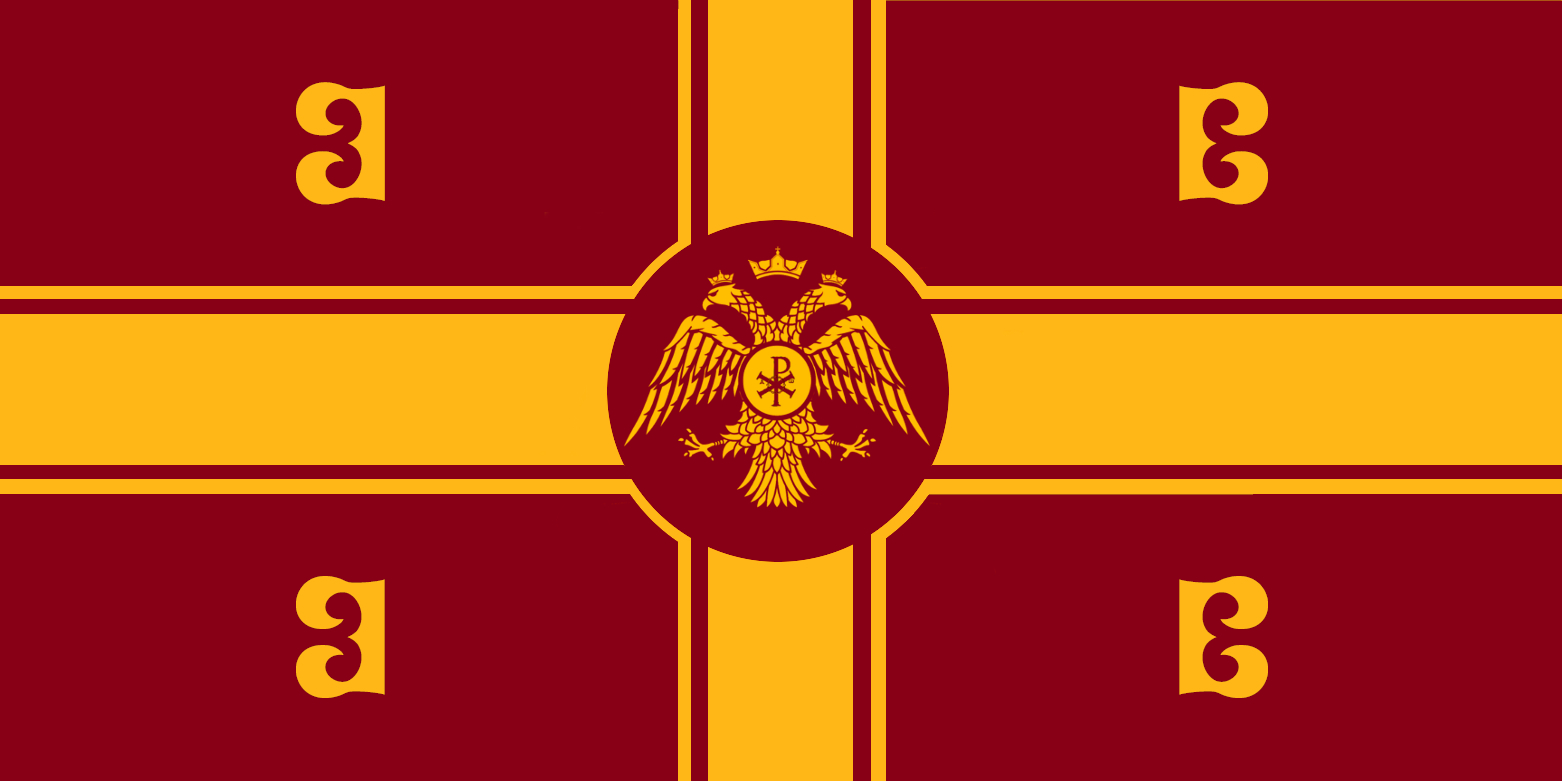
Follow me, the Byzantium Blogger on Social Media:
Instagram: @byzantine_time_traveller
Facebook: Byzantine Time Traveller
Youtube: No Budget Films
Twitter: @ByzantineTime
Deviantart: Byzantium-blogger55
Art Station: Powee Celdran Porphyrogennetos
Patreon: Byzantine Time Traveller
Note: Since this story is set in the 9th and 10th centuries after the fall of the Western Roman Empire, the Byzantine characters will be referred to as Byzantines, not Romans.
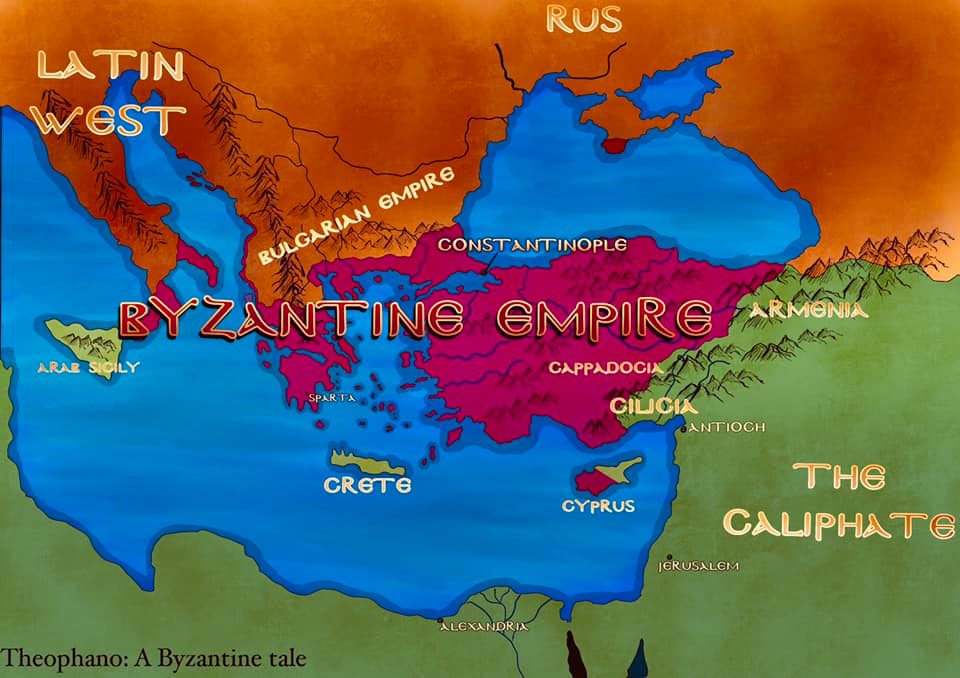
For this story, I am back again to basically writing it alone except that the major inspiration for this story’s alternate history plot is from the recent Byzantine era graphic novel Theophano: A Byzantine Tale (Instagram: @byzantine_tales/ Facebook: Byzantine Tales) by Spyros Theocharis (Instagram: @spyrosem) which I read very early this year and highly enjoyed that I even made an article reviewing the novel which included a fan casting for the Byzantine era characters for a potential film and a historical analysis of it, which I made before I even began doing this Byzantine Alternate History series.
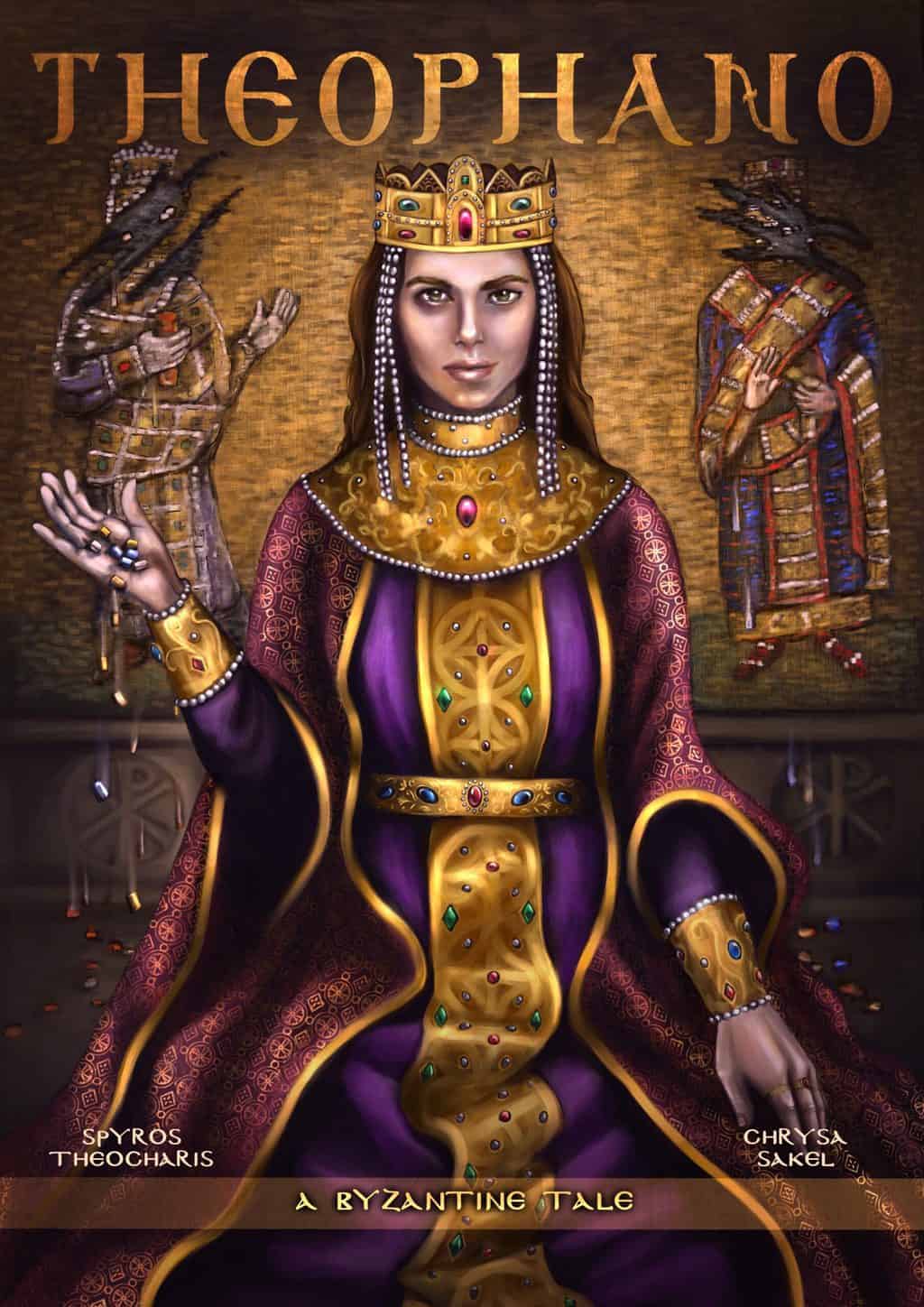
Now don’t get me wrong here as I did indeed totally enjoy the graphic novel and its plot, and because I enjoyed it and it has intrigued me a lot, I ended up involving its plot into my fan fiction series except without its lead character Theophano for the sake of experimenting which I usually do in this series, and for me this was also what I thought would be the best alternate history topic to feature for the 10th century. For those who do not know about this novel and want to know more about the real history of 10th century Byzantium, you can check their website linked here and order a copy of it, but for those who already know the story and want to see a different side of it without its lead character, this story here being chapter VII of my Byzantine Alternate History series will be exactly that. As I mentioned earlier, the Macedonian Dynasty era or Byzantine Renaissance from 867 to the end of the 10th century is my favorite era in all of Byzantine history as it was also the first era in Byzantine history that I read about 2 years ago which then suddenly got me so passionate about Byzantium, and although I already knew about Byzantium before by learning about Justinian I’s era in school, it was this particular period of Byzantium’s second golden age which I discovered by myself that got me so into Byzantine history, therefore this story that I am writing here will be an extra special one for me. The Theophano graphic novel too was a very great story basically because it was set in my favorite timeline in Byzantine history featuring some of Byzantium’s most colorful historical figures and intrigues coming to life, though despite Theophano taken out the picture thus altering the course of the said graphic novel’s plot, the well-made illustrations for the novel by Chrysa Sakel (Instagram: @chrysasakel) would still appear here as a visual guide to 10th century Byzantium and so would be the valuable primary visual source of this era the Madrid Skylitzes in which these illustrations would frequently appear here as well as its counterpart the Russian Primary Chronicle, and so would the artworks from various artists I know online that create Byzantine fan art including Ediacar, Amelianvs, Spatharokandidatos, Akitku, HistoryGold777, Ancientcitylullaby, FaisalHashemi, Marwan Musa, Oznerol-1516, and Justinianusthegreat. Now back to this story’s style, it will be very much like chapter III of this series which focused on Justinian I’s reign in terms of storytelling as like chapter III, this one will go with the flow of real history meaning that there would not be so much side stories, or more personal touches, or entirely fictional or highly embellished scenarios as the other chapters did, rather this chapter would be straight to the point sticking to historical events going in the same flow as they did in reality for the sake of conveniency as this chapter will cover more than a hundred years of story, but along the way there will be a number of changes to the narrative and the most significant one first being the Macedonian Dynasty actually being the Amorian Dynasty continued, and again in the latter half of this story when the character of Theophano herself is removed from the plot. In real history, Theophano came into the imperial family by chance when Romanos II as the imperial heir to his father Constantine VII chose her to be his wife, though it is still speculated whether Theophano (originally Anastaso) was simply a commoner from Greece and a daughter of an innkeeper who was rumored for her exceptional beauty that the imperial heir Romanos chose her to be his wife or that she came from a minor noble family, but the graphic novel goes with the first theory, and when married she gets herself involved in the toxic schemes of the imperial court. This story however will have a different take on Theophano by making it seem like she did not exist at all, and so the big plot twist here would be that Romanos II simply never heard about her, therefore he would never marry, but the rest of the story will simply follow the events of real history which means Romanos II like in reality would die in 963 very young after only 4 years in power and would still be succeeded by the Nikephoros II Phokas as emperor, except here he would not marry Theophano as she wouldn’t even be around and like in real history he would still be assassinated in 969 by his general John Tzimiskes wherein this story would end. At first, it may seem like Theophano did not really have any significant role, but later on she would as her son Basil II would become the sole emperor of Byzantium following the death of John I Tzimiskes in 976 and as emperor, Basil II would begin with a rough start but at the end would achieve the impossible of conquering the entire Bulgarian Empire thus becoming one of Byzantium’s greatest conquering emperors known as “Basil II the Bulgar-Slayer” making the Byzantine Empire be once again at its greatest extent of territory, but this would only be achieved in the next century. Since this story’s main plotline is only limited to the 10th century, while it was only in the early 11th century in real history when Byzantium reached its peak of power and influence covering a vast amount of territory again after the conquest of the entire Balkans, this story will squeeze in the full Byzantine conquest of the Bulgarian Empire into the 10th century before it ends as a way to give this chapter a dramatic conclusion, and therefore this means that Basil II was not really necessary for the conquest of Bulgaria as any other competent soldier emperor could have done it too, therefore I would also say Theophano’s part was not really of any significance considering her being Basil II’s mother. On the other hand, there was a lot of research put into this story and rewriting the course of Byzantine history, and I would have to thank the Youtube channels that feature Byzantine history in detail which are as usual Kings and Generals, Eastern Roman History, History Time, and Thersites the Historian, and of course my ultimate source the highly comprehensive History of Byzantium Podcast by Robin Pierson, and at the same time my Lego films from my channel No Budget Films set in this era will be featured here as well.
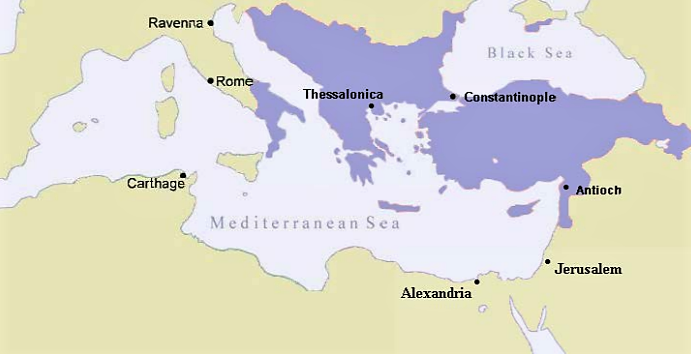
Watch this video below to learn more about the Byzantine emperors from the Macedonian Dynasty (from Hellenic History Series).
Before beginning the main part of the story itself, there is still some more I have to say about why the 10th century under the Macedonian Dynasty is my favorite period in the history of Byzantium, and this is not only because it is fascinating with colorful characters and that it was the first part of Byzantine history that I fully read about which got me into it, but it is rather also because it was THE century of the Byzantine Empire. Now what I meant about the 10th century being “the century” of Byzantium is that it was the century Byzantium would be remembered for, or basically its golden age the same way the Renaissance in the 15th century was for Italy, the 16th century for Spain, the era of Napoleon in the early 19th century for France, and the Victorian Era and Industrial Revolution in the 19th century for England which means for Byzantium it was its most eventful era, not necessarily meaning everything went their way but rather so much had happened with so many colorful characters and events, therefore making this era known as the “Byzantine Renaissance”, though on the other hand this era too happens to be quite insider being mostly only known to Byzantine history enthusiasts. For Byzantium, the 6th century under Justinian I the Great could also be considered Byzantium’s great moment, but then it did not last that long and it was also only under one emperor, and on the other hand, Byzantium was still a Roman superpower unlike here in this chapter set in the 10th century, the eventful era for the empire was not under just one emperor but a whole dynasty of colorful rulers and here too Byzantium was growing into its height of power and influence as a culturally and linguistically Greek empire in the Middle Ages but of course still the Roman Empire (Basileia ton Rhomaion in Greek) in name. This chapter will exactly show how Byzantium was the cultural and military power of the 10th century as the extensive military conquests would feature heavily here wherein the powerful Byzantine army did not just fight to defend their borders anymore but gain the upper hand to launch attacks deep into Arab territory in the Middle East where the Byzantines had not ventured to in the past 3 centuries therefore regaining a large amount of lands they lost in the past, while at the same time Constantinople as the imperial capital was the “desire of the world” with advanced technology and imperial extravagance in art and architecture while the empire itself had a very organized ruling system despite all the civil wars, ambitious aristocratic generals, court intrigues, scheming eunuchs, and corruption behind it all, though all of this combined whether good or bad would still make Byzantium what it really is. Of course, what also made the 10th century a very interesting time were the colorful yet checkered rulers of Byzantium including the usurping and not so well-educated admiral Romanos I Lekapenos (r. 920-944), the highly cultured intellectual Constantine VII Porphyrogennetos (r. 945-959), the tough and ruthless military emperor Nikephoros II Phokas (r. 963-969), and the more or less perfect soldier-diplomat emperor John I Tzimiskes (r. 969-976) who all had a part in shaping the golden age of the Byzantine Empire, thus all these characters will be featured heavily here. Now the word “Renaissance” means a “rebirth of something” and for Byzantium the 10th century would see its rebirth or rather revival as a superpower after almost 3 centuries of being in the dark having to fight for its survival, and to set the stage for the main storyline of the 10th century, this chapter will go back to Byzantium in the 9th century under the Amorian Dynasty (820-867) where the dystopian-like Byzantine Dark Ages ended and its Renaissance began. The Amorian era would be discussed in this story’s background to discuss how the Byzantine Renaissance began with the turning of the tide of war against the Arabs to the offensive as well as to give a background to the bloody politics of the Byzantine court. It was also in the time of the Amorian Dynasty particularly in the reign of its last emperor Michael III (842-867) when the unlikely founder of the Macedonian Dynasty Basil I rose to power and it was he who killed Michael III and began the Macedonian Dynasty but as mentioned earlier, when looking into the matter carefully, it seems like the Macedonian Dynasty never really happened except for Basil I’s reign (867-886) as his son and successor Leo VI (r. 886-912) is said to have been the illegitimate son of Michael III the Amorian, and true enough even historians sometimes agree to this meaning that the well-known Macedonian Dynasty that ruled for almost 2 centuries until 1056 was actually not the Macedonian Dynasty but the Amorian Dynasty continued. For the sake conveniency however, historians still refer to Leo VI as Basil I’s son and part of the Macedonian Dynasty and so are his descendants, but this story for the sake of creating a plot twist will go with the speculation of Leo VI being actually Michael III’s son and not Basil I’s, so the Dynasty here despite being known as the Macedonian Dynasty is actually the Amorian Dynasty continued, therefore this story will refer to Leo VI not as Basil I’s son as well as not a Macedonian but an Amorian and so would his descendants. In this chapter, the story of Byzantium will get even more exciting yet crazy as it will cover a lot of interesting events including a long war against the Bulgarian Empire under its tsar Simeon (r. 893-897), the continued war against the Arabs except this time with the Byzantines finally gaining the upper hand, religious debates and controversies still continuing, the spread of Orthodox Christianity from Byzantium to the Balkans, endless court politics and rivalries with the eunuchs involved, ambitious generals setting their eyes on the throne, and the tensions with Western Europe again brewing in the same old “Cold War” situation as before and here despite Charlemagne from the previous chapter gone, there will be a new Frankish ruler like him to challenge the authority of Byzantium which would be the first Holy Roman emperor Otto I the Great (r. 962-973). On the other hand, this chapter will also cover Byzantium’s northern neighbor the Bulgarian Empire a lot, as well as new people from the north coming in to the picture either to help or harm the Byzantines and these will include the nomadic Magyars and Pechenegs, as well as the Rus or Norsemen that would establish the Kievan Rus’ Empire in what would be medieval Russia. Now since this chapter will cover a long amount of time spanning more than a hundred years, it would be told in a fast-paced action-packed documentary style which at some points would be something like a mockumentary in tone as this chapter would somewhat be a parody to the Theophano graphic novel, therefore would have in some parts a sarcastic tone as we skim through the years and events.
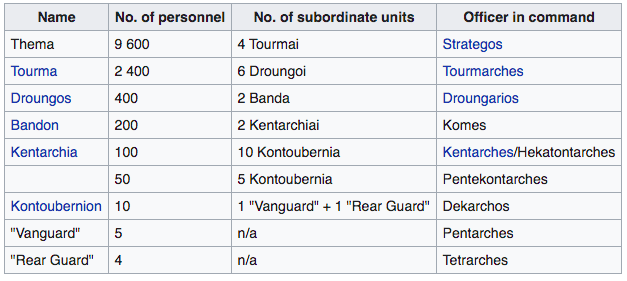
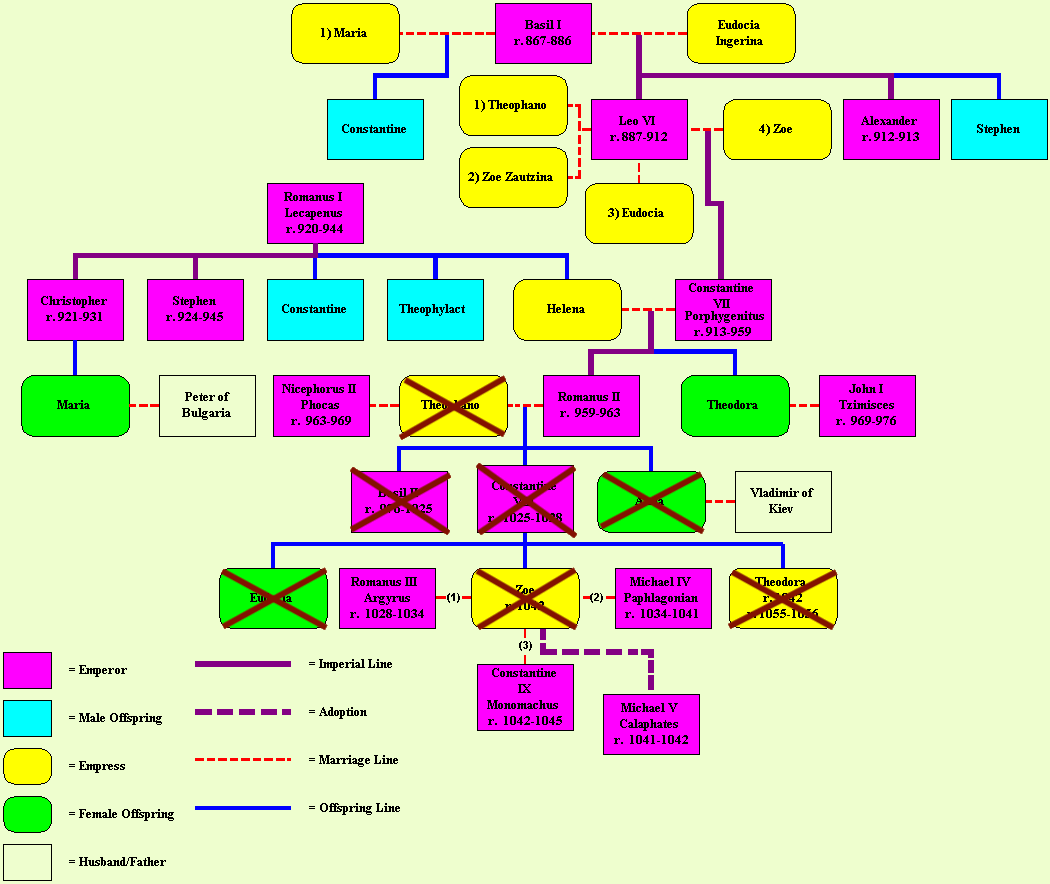
Related Articles from The Byzantium Blogger:
A Review/ Analysis/ and Fan-Casting for Theophano: A Byzantine Tale
Around the World in the Byzantine Era Part I (300-1000AD)
12 Turning Points in Byzantine History
A Guide to the Themes of the Byzantine Empire
Lesser Known and Would be Byzantine Emperors (695-1453)
Ethnic Origins of the Byzantine Emperors
10 Inventions from the Byzantine Empire
The Major Players of this Story’s Byzantine Renaissance Epic:
Emperor Leo VI “the Wise”- Byzantine emperor (886-912); image found in the main story itself
Zoe Karbonopsina- Byzantine empress and empress-regent, wife of Leo VI; image found in the main story itself
Constantine VII Porphyrogennetos– Byzantine emperor (913-959), son of Leo VI and Zoe; image found below
Alexander- Byzantine emperor (912-913), half-brother of Leo VI
Nikolaos Mystikos- Patriarch of Constantinople (901-907/ 912-925)
Simeon the Great- Tsar of the Bulgarian Empire (893-927)
Romanos I Lekapenos- Byzantine admiral turned emperor (920-944), father-in-law of Constantine VII
John Kourkouas- Byzantine general, supreme commander of the eastern forces under Romanos I
Helena Lekapene- Byzantine empress, daughter of Romanos I, wife of Constantine VII
Bardas Phokas the Elder- Byzantine general of the powerful Phokas clan
Romanos II- Byzantine emperor (959-963), son of Constantine VII and Helena
Joseph Bringas- Palace eunuch and advisor of Romanos II
Basil Lekapenos- Palace eunuch and advisor, son of Romanos I
Nikephoros II Phokas- Byzantine general and emperor (963-969), son of Bardas Phokas the Elder, “Pale Death of the Saracens”
Leo Phokas the Younger- Byzantine general, younger brother of Nikephoros II, son of Bardas Phokas the Elder
John I Tzimiskes- Byzantine general and emperor (969-976), nephew of Nikephoros and Leo
Sayf al-Dawla- Arab Emir of Aleppo (945-967)
Polyeuctus- Patriarch of Constantinople (956-970)
Otto I the Great- King of East Frankia and Holy Roman Emperor (936-973)
Zoe Porphyrogenita- Daughter of Constantine VII and Helena, Byzantine empress and wife of Nikephoros II and John I in this story
Sviatoslav I “the Brave”- Grand Prince of the Kievan Rus’ (945-972)
Bardas Skleros- Byzantine general, and eventual emperor in this story
Bardas Phokas the Younger- Byzantine general, son of Leo Phokas the Younger

Background Guide: Byzantine characters (blue), Bulgarians (dark orange), Arabs (green), Franks (gold), Rus (dark red).
Part I.
Prologue- The Amorian Dynasty and the Rise of Basil the Macedonian, the Wrestler Turned Emperor (811-886)

At some time in 811 was born the future emperor Basil the Macedonian to peasant parents in the Byzantine Theme of Macedonia near the city of Adrianople, though its name can be misleading as this Theme was not in Macedonia itself but in Thrace. Though Basil was born a peasant and known as the Macedonian, he was in fact not a Macedonian but in his father’s side an Armenian descended from the Arsacid Dynasty that ruled Armenia (12-428AD) as well as a descendant of the first Byzantine emperor Constantine I the Great (r. 306-337), if you would believe the fabrication made about Basil’s lineage made during his reign later on, but in this story’s case his noble lineage would be true. In his mother’s side, Basil was either of Slavic or Greek descent- and possibly even a descendant of the famous Macedonian ruler Alexander the Great (r. 336-323BC)- which would still remain unclear but the known fact is that Basil’s father from Byzantine Armenia before Basil was born was resettled into the Theme of Macedonia which was part of the imperial policy to balance ethnic groups across the empire and integrating them with others to prevent a strong sense of unity that could lead to ethnic rebellions. Basil’s early life is not known but it is said, which would be true in this story was that his mother once had a dream wherein a saint told her that her son Basil would one day become emperor no matter how impossible that seemed as they were from a very simple family, but Basil took this prophecy very seriously believing it was his destiny. Some sources though put Basil’s birth at around the 830s but also in the Theme of Macedonia hence his nickname “the Macedonian” while other sources say that as a child, he was taken into the Bulgarian Empire up north as captive returning to Byzantine Macedonia in the 830s, but this story would simply stick to Basil born in 811 and nothing eventful happening in Basil’s early life except for the prophecy of him becoming emperor. Now let us have a recap of the events in the 9th century which the previous chapter mentioned as well and here let’s begin with 811, the year of Basil I’s birth which was also the same year the Byzantine emperor Nikephoros I the Logothete who overthrew Empress Irene (r. 797-802) in 802 died at the Battle of Pliska against the Bulgarian forces of the Bulgarian ruler or khan Krum leading to a severe defeat for the Byzantine forces whereas the dead emperor’s skull was turned into Krum’s drinking cup. Nikephoros I though had a son named Staurakios who fought in this battle and survived but badly injured from it that in only 2 months he abdicated from ruling as emperor as by becoming paralyzed, he could not rule properly therefore he retired as a monk dying the next year and had passed the throne to his brother-in-law Michael I Rangabe (r. 811-813) who as emperor had no military experience that in 813, he lost against the Bulgar forces of Krum when his forces deserted him.
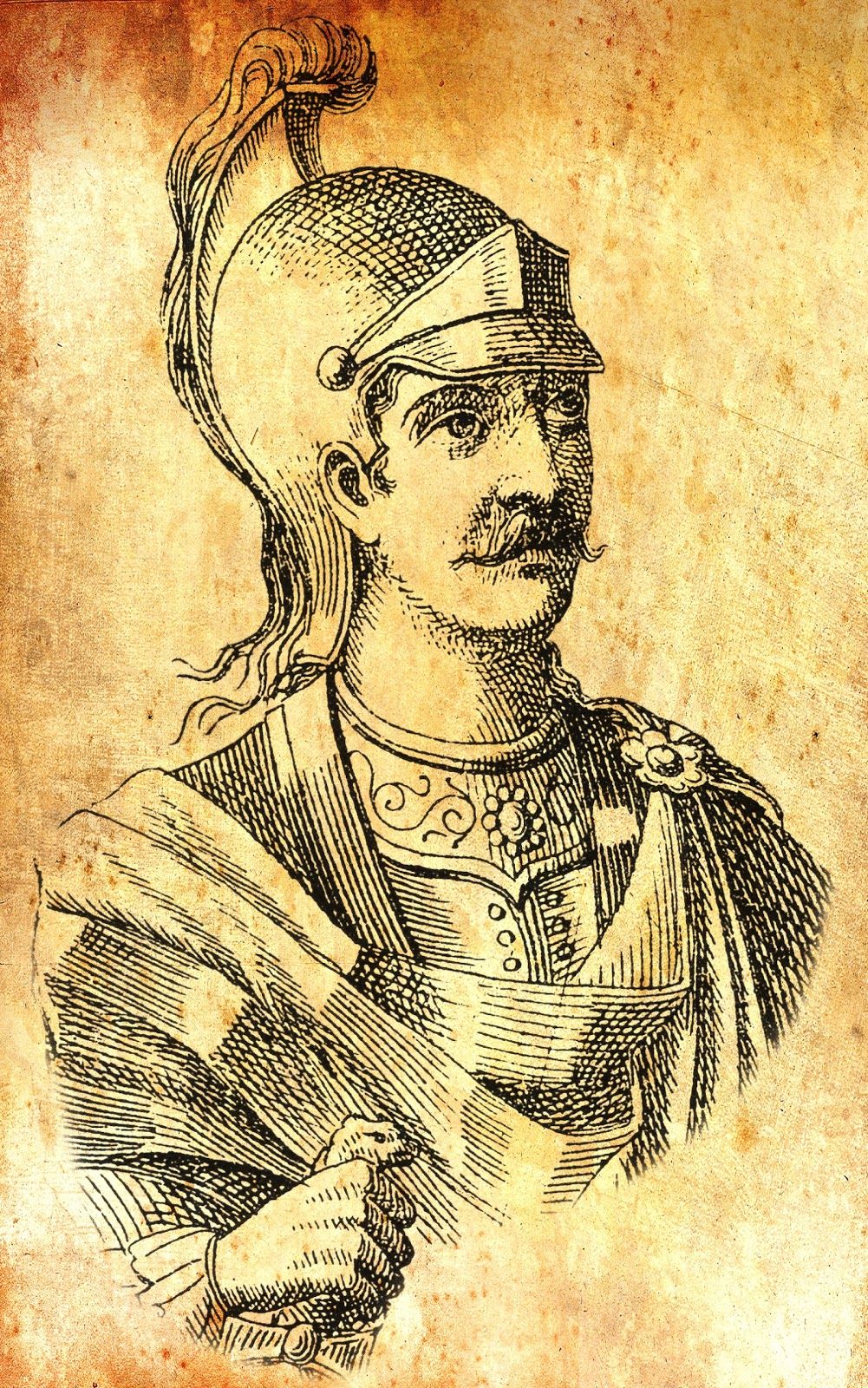
Not wanting a bloody end, Michael I abdicated and again retired to become a monk and would live up to 844 while the throne was passed to Leo V the Armenian (r. 813-820) who was the same general that deserted Michael I, and as emperor Leo V brought back the old policy of Iconoclasm or the breaking of religious icons which was thought to have ended back in 787 if you remember from the previous chapter, though Leo V was not entirely serious about it but rather only used returning the policy for political reasons to please his soldiers that supported him as they were still hardcore Iconoclasts. Under Leo V though, the Bulgarian threat to Byzantium disappeared when Khan Krum died in 814, however Leo V did not rule long enough and establish a dynasty as in Christmas of 820 an unlikely coup happened when his friend and trusted general Michael the Amorian turned on him and killed him during the Christmas Mass, thus Michael II the Amorian was proclaimed emperor.
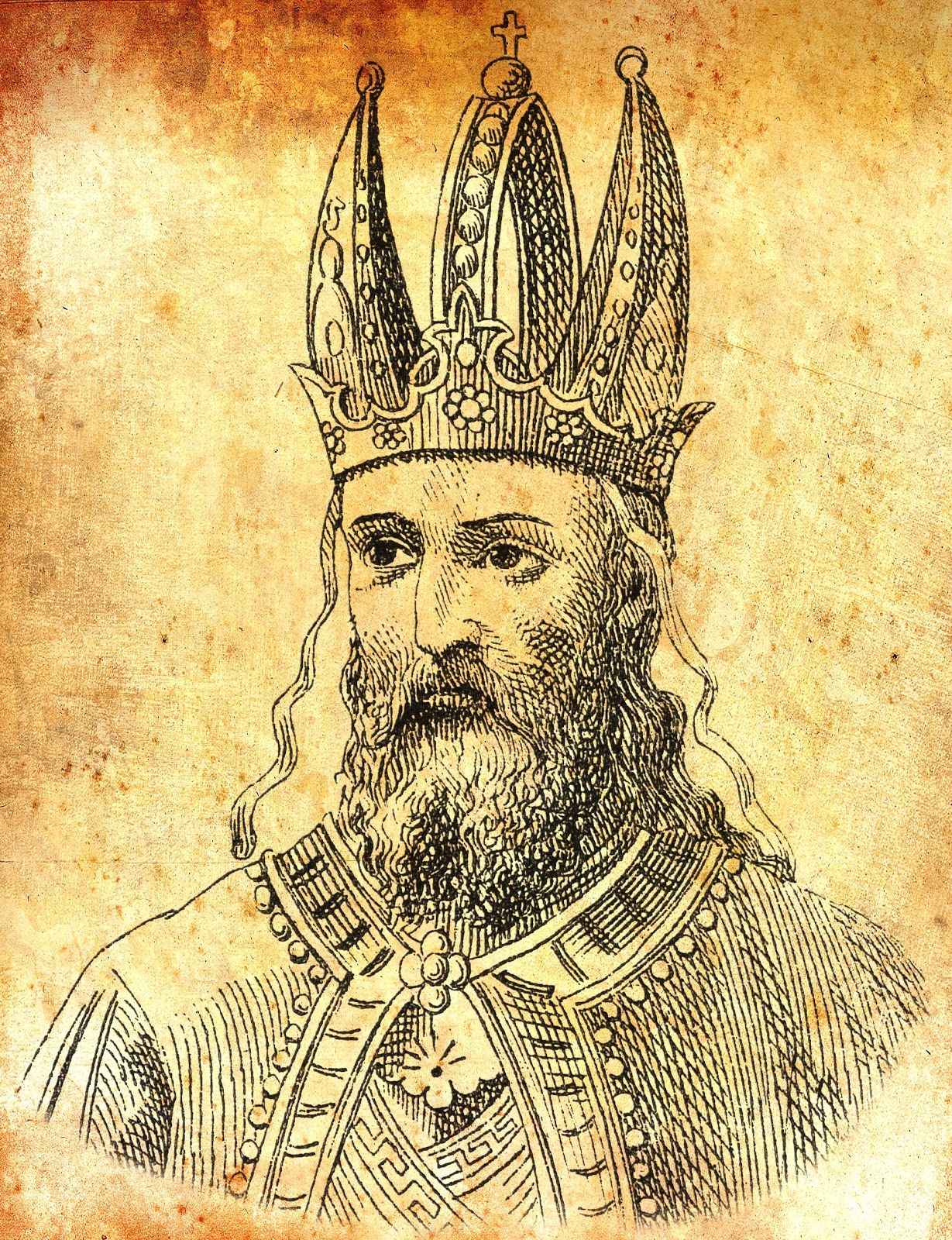
Michael II to justify usurping the throne tried to pretend like he had nothing to do with Leo V’s murder, and as emperor he was an able ruler except he lacked education and class, but so did he lack legitimacy that his other general friend together with Leo V which was Thomas the Slav in 821 rose up against him starting a full scale civil war that was as damaging to Byzantium the same way a foreign war would be, and this civil war lasted for 2 years until Thomas was defeated, had surrendered, and was executed in 823 but despite winning a victory, it was a very costly one for Michael II as he ended up burning a big portion of the Byzantine fleet which Thomas controlled, and losing a major part of the fleet opened up some regions of the empire to foreign invasion. In 824, the entire island of Crete fell to Arab pirates from Spain who were exiled from the Umayyad Arab Muslim state that controlled most of Spain known as Al-Andalus or rather the Emirate of Cordoba as this group rebelled against the authorities there but failed thus turning to piracy in the Mediterranean, and without a Byzantine fleet to stop them Crete fell to these pirates thus creating the Emirate of Crete which would then be a major thorn for the Byzantines’ commercial activities in the Mediterranean from here on as Crete was a very strategic area in the Mediterranean. However, not only Crete had fallen as in 827 Byzantine control of Sicily would begin to slip out when the army of a new Arab power in North Africa known as the Aghlabids first invaded, and here would start the Arab conquest of Byzantine Sicily. Michael II who founded the Amorian Dynasty then died in 829 and would be succeeded by his 24-year-old son Theophilos who unlike his father was very educated and cultured and despite being a Byzantine, he greatly admired the arts, sciences, and general culture of the Islamic Arab world, most especially that of the Abbasid Caliphate based in Baghdad as Theophilos’ idol was the sophisticated and powerful Abbasid caliph Harun al-Rashid (r. 786-809) who had been mentioned significantly in the previous chapter.
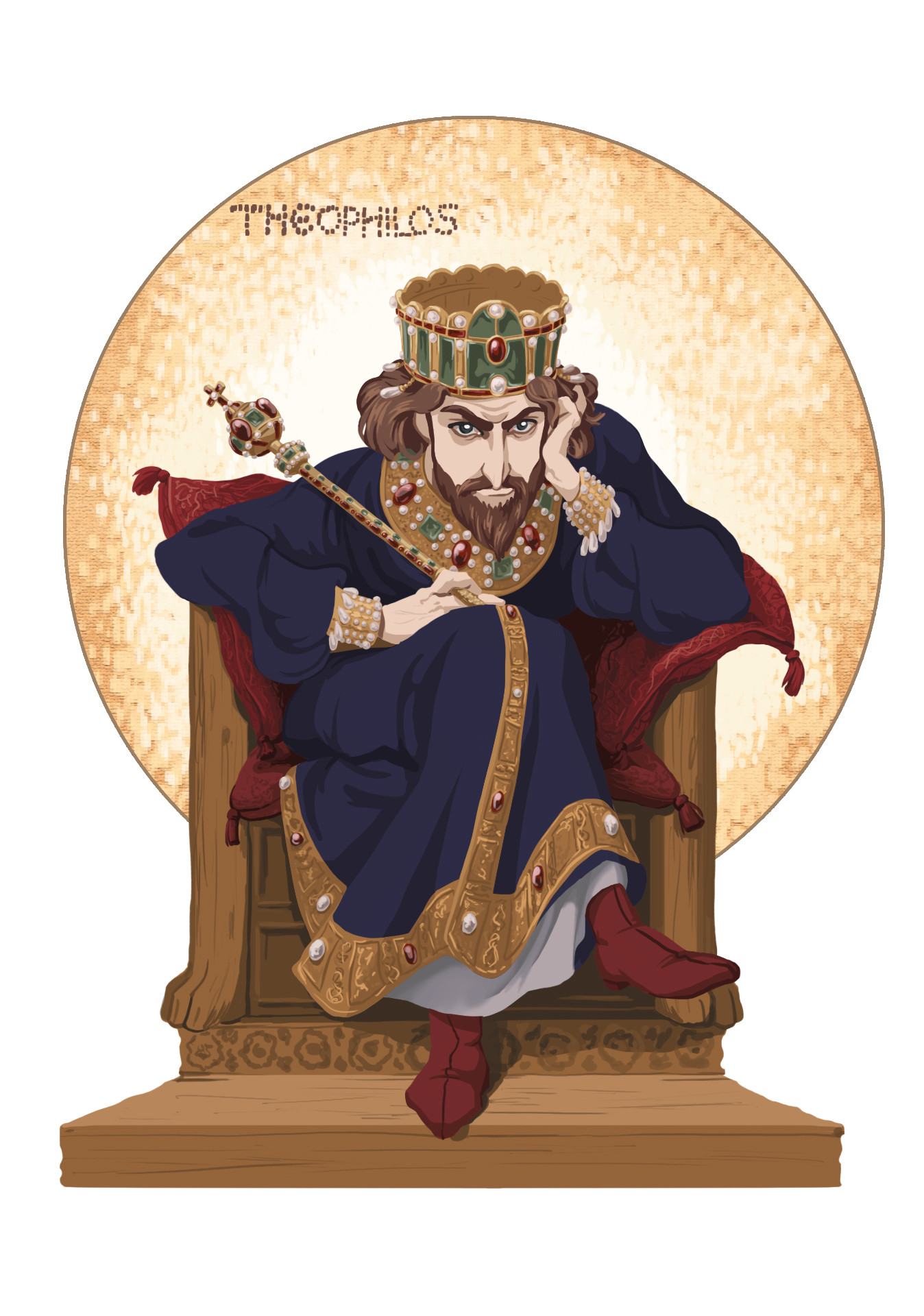
Though Theophilos greatly admired the Abbasid Caliphate in cultural aspects, he was also threatened by them therefore he was committed to fight them in battle which he spent most of his reign doing, and had ended either winning some victories but losing great defeats as well such as at the Battle of Anzen in 838 wherein Theophilos led the army himself but ended up losing leading to the Abbasid forces penetrating deep into Byzantine Asia Minor and sacking the city of Amorion, the capital of the Anatolic Theme, the empire’s most powerful Theme or military province, but surprisingly this would be Byzantium’s last major defeat to the Arab caliphate. Back in Constantinople, Theophilos was a great patron of the arts and sciences doing just as his idol Harun al-Rashid did with his capital Baghdad by using public funds to construct several luxurious palaces and learning centers, and his patronage of art and science would kick-start the Byzantine cultural Renaissance, but at the same time he was also a supporter of Iconoclasm like his father Michael II and Leo V before him, though not an extreme one as Theophilos only did it to please his powerful Iconoclast allies in the army, and little would he know that he would be the last Iconoclast emperor whereas his wife the empress Theodora was a strong Iconophile or supporter of religious icons and their veneration.

Meanwhile, the threat of the Arabs was still at large as in 841 the Abbasid caliph Al-Mu’tasim launched a massive naval expedition intended to attack Constantinople but it failed as Al-Mu’tasim died in early 842 and so did Theophilos from dysentery, and here he would be succeeded by his son Michael III who was only 2-years-old therefore ruling at first under the regency of his mother Empress Theodora, the powerful eunuch Theoktistos, and his uncles Bardas and Petronas who were his mother’s brothers. The first act of Michael III as emperor, although carried out by his mother was in finally ending the issue of Iconoclasm wherein a Church Council in Constantinople was held in 843 which then declared Iconoclasm a heresy while the Iconoclast Patriarch of Constantinople John VII Grammatikos was removed from office by force and replaced by the Iconophile Methodios I who would also serve as the young emperor’s regent. This kind of regency council would only be the first one mentioned in this story as it is about to become a standard in Byzantine politics, and so would be eunuchs running the government, but another standard that would be set following the end of Iconoclasm was a rebirth in the arts as after all those years of icons being destroyed making art look plain, the art scene of the Byzantine Empire especially in religious paintings found in churches would be ever more impressive than before as a way to make up for all those years these images were being destroyed for no useful reason.

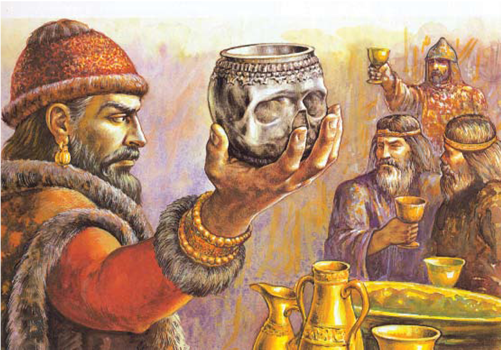
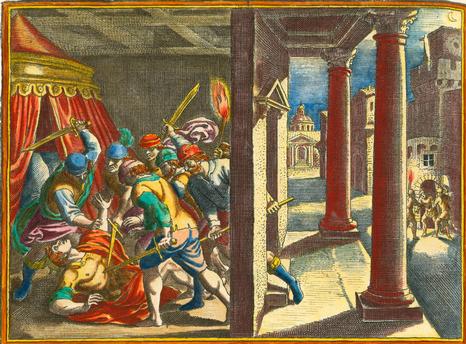
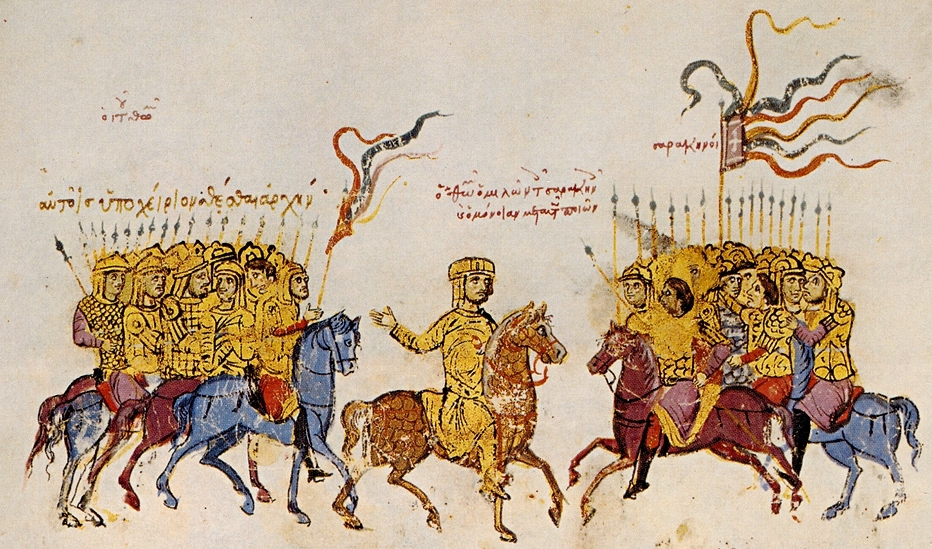
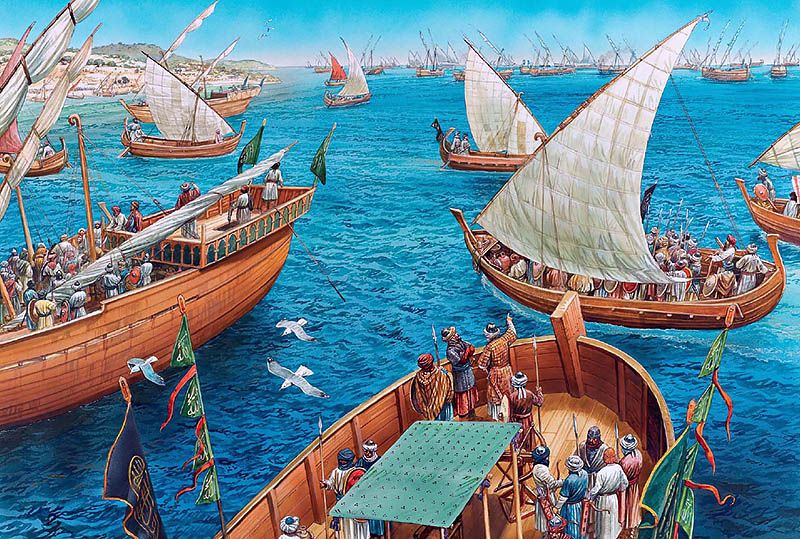
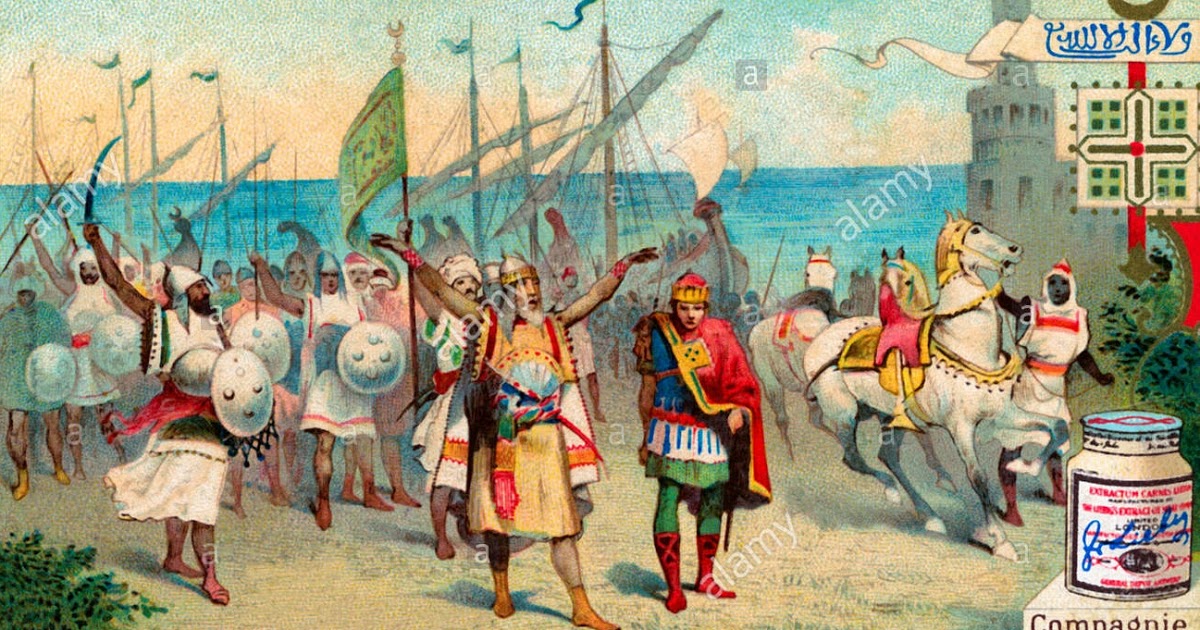

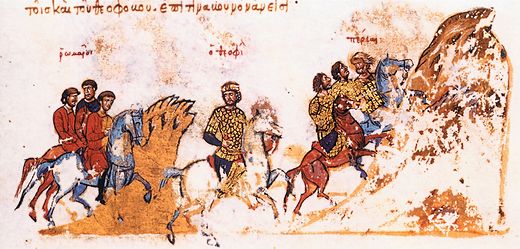

With the issue of Iconoclasm done for good and the power of the Abbasid Caliphate in the east suddenly no longer a threat following the decentralization of their state, as well as with the same kind of dissolution of the powerful Frankish Empire in the west to smaller kingdoms, it seemed like all was well for the Byzantines to kick-start their Renaissance or golden age thus ending the dystopian like Byzantine Dark Ages. Though Iconoclasm had finally come to an end, it was not really the end as soon enough new religious debates and controversies would emerge with one being now the issue over whether the Church should be run by highly spiritual officials or secular ones and another one being the rise of a heretical Christian sect known as the Paulicians in Asia Minor, which although had been around in Eastern Asia Minor and Armenia since the 7th century. As a heretical sect of Christianity, the Paulicians rejected some books of the Old and New Testament and preached against private property and at first, they seemed to be harmless until they had grown to become a political movement in the 9th century.
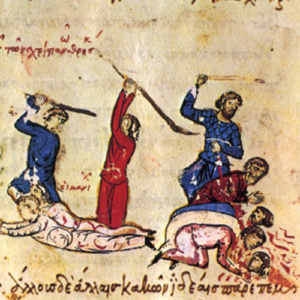
Theodora as the empress-regent and a strongly Orthodox Christian was heavy on persecuting the heretical Paulicians by force that in less than 2 years into her reign as her son’s regent, about 100,000 Paulicians were brutally put to death under her when they refused to acknowledge their errors and convert to Orthodoxy. The surviving Paulicians fled east to Armenia and to the Arabs, and later their leader Karbeas would establish the independent Principality of Tephrike (today’s Divrigi, Turkey) in Eastern Asia Minor with the help of Umar al-Aqta, the Arab Emir of Melitene which was one of the semi-independent states or emirates formed in the border between Byzantium and Abbasid Caliphate as a result of the Abbasids’ decentralization in recent years, and now this new Paulician state would pose a threat to Byzantium. At the same time as the Principality of Tephrike rose, the eunuch Theoktistos who was basically in charge of the empire here made the first attempt to recapture Crete from the Arab pirates there which although failed and in 847, the Patriarch of Constantinople Methodios I died and here the eunuch Ignatios, son of the former emperor Michael I Rangabe thus a grandson of Emperor Nikephoros I who was his mother’s father became the new patriarch, although Ignatios was a highly spiritual person who was against the Church being involved in secular matters, thus here begins the ongoing debate over Church leaders being spiritual or secular which would play a big role in this story.
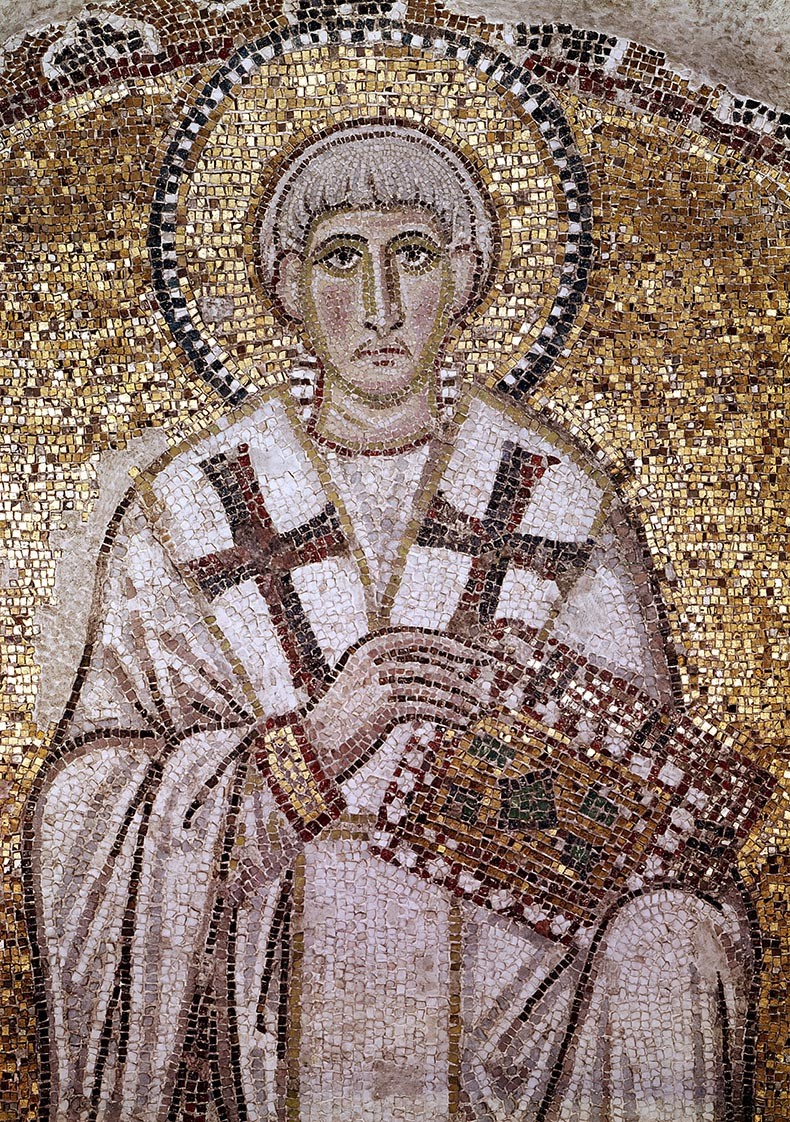
Now under Theodora and the eunuch Theoktistos, the empire seemed to be operating well especially since it suddenly acquired a lot of wealth some time back in Theophilos’ reign when a large source of gold was discovered in the empire’s Armeniac Theme in Asia Minor, and it so happened too during the regency of Theoktistos that the Byzantine fleet went as far as sailing to Egypt- which the Byzantines had not done in over 2 centuries- and attacking the Arab held port of Damietta there in 853 to punish the Arabs for their naval raids on the empire. By 855, Michael III had now come of age being 15, and he distrusted both his mother and Theoktistos relying a lot more on his uncles Bardas and Petronas, and a lot of Michael’s issues with his mother and eunuch regent had to do with the usual case of being forced to marry someone he did not like rather than his beloved mistress Eudokia Ingerina.

Michael III however supported by his uncle Bardas succeeded here, and Theoktistos was then arrested and executed while the empress Theodora was banished to a monastery for life, which here would be the first of many incidents like these. From 855 onwards, Bardas was the effective ruler of the empire as Michael III was still young and at the same time not really a responsible ruler as he prioritized entertainment, partying, horse riding, and drinking with friends over the empire, and it was around this time in 857 when the young Michael III would meet the future emperor Basil the Macedonian who had apparently come to Constantinople some time back. A lot of the information about Basil the Macedonian coming into Constantinople and making a name for himself remains to be of legend but would be true in this story’s case as an alternate history story, which means that here Michael III would first meet Basil in the palace’s horse stables with Basil nothing more but a stable boy.
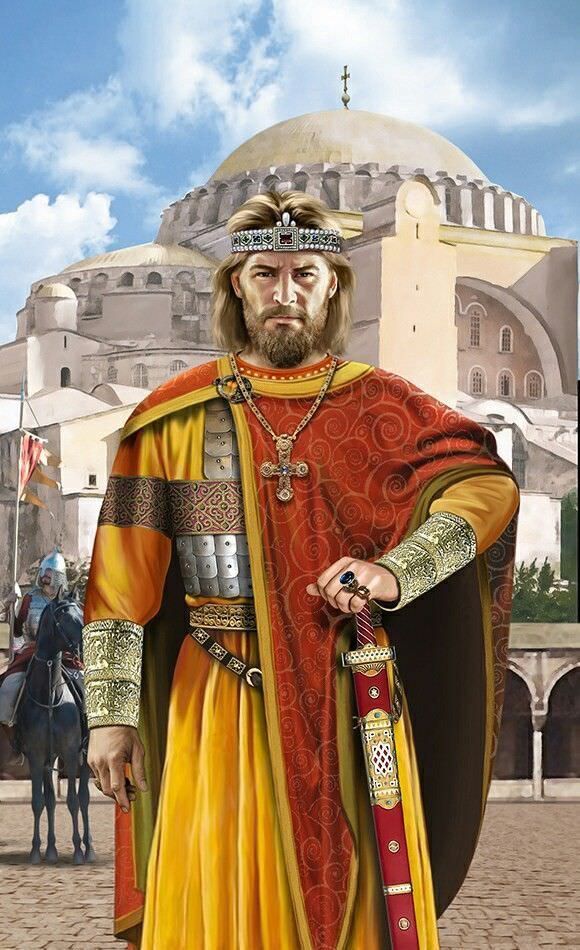
Here in 857, the massive 46-year-old Basil would out of the blue impress the emperor when being able to tame a horse nobody could tame but him as he had an ability to communicate with horses, and again sometime later Basil would prove his strength as a wrestler when the emperor himself saw Basil wrestling against and defeating the undefeatable Bulgarian champion in a wrestling match with ease, and because of his great strength and unusual abilities, Basil would soon grow to become a favorite of Michael III who would immediately make Basil his bodyguard or personal protector and chamberlain known as the Parakoimomenos in Greek, which although was a position assigned for eunuchs. On the other hand, the emperor’s uncle Bardas would do quite a pretty good job in actually managing the empire, and it was under him that the Renaissance of learning and culture would rise as he invested heavily on constructing learning centers, palaces, and richly decorated churches, though he was also a strongly secular person who in 858 forced the reigning patriarch Ignatios to resign wherein Bardas would replace him with his friend the scholar Photios who was a secular person with no religious background as Bardas saw that a politician was needed to be in charge of the Church of Constantinople.
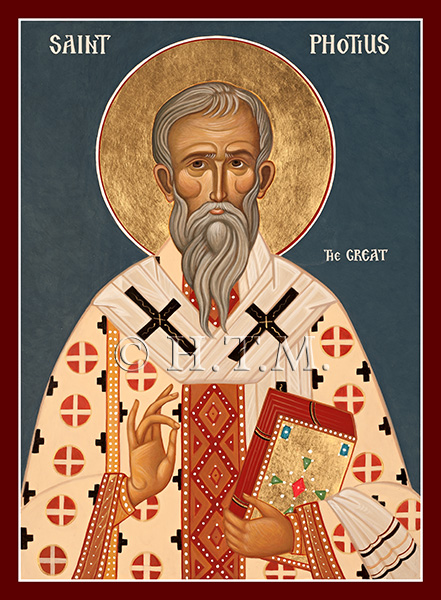
After becoming a priest in only a week, Photios quickly became Patriarch of Constantinople, though his appointment would cause a lot of tensions and again with the Patriarch of Rome or the pope in the west Nicholas I who had also just been elected as pope in 858 and apparently had backed Ignatios, thus here begins the Photian Schism which dealt with the issue of whether the emperor was to appoint or fire the Patriarch of Constantinople or if it was the job of the pope to do it, thus again making it another heated situation in the rivalry between the Orthodox Church in the east and Catholic Church in the west where again it had to do with the pope wanting to assert his supremacy over the Church of Constantinople and the other Churches which included Antioch, Jerusalem, and Alexandria whereas all the heads of these Churches were in fact intended to be equal. Now it would seem that a lot of the reasons for the Byzantine Renaissance to kick-start was due to Bardas’ administration and investments to grow Byzantine culture and literacy, but the rising Byzantine Renaissance was also due to military victories, and as Bardas was basically responsible for the cultural revival, his brother Petronas was responsible for the military resurgence as in 856 in his campaign against the Paulicians of Tephrike, he happened to go as far east even crossing the Euphrates River in Eastern Asia Minor striking deep into Arab territory being the first to do so in more than 200 years, thus returning to Constantinople with many Arab prisoners of war.

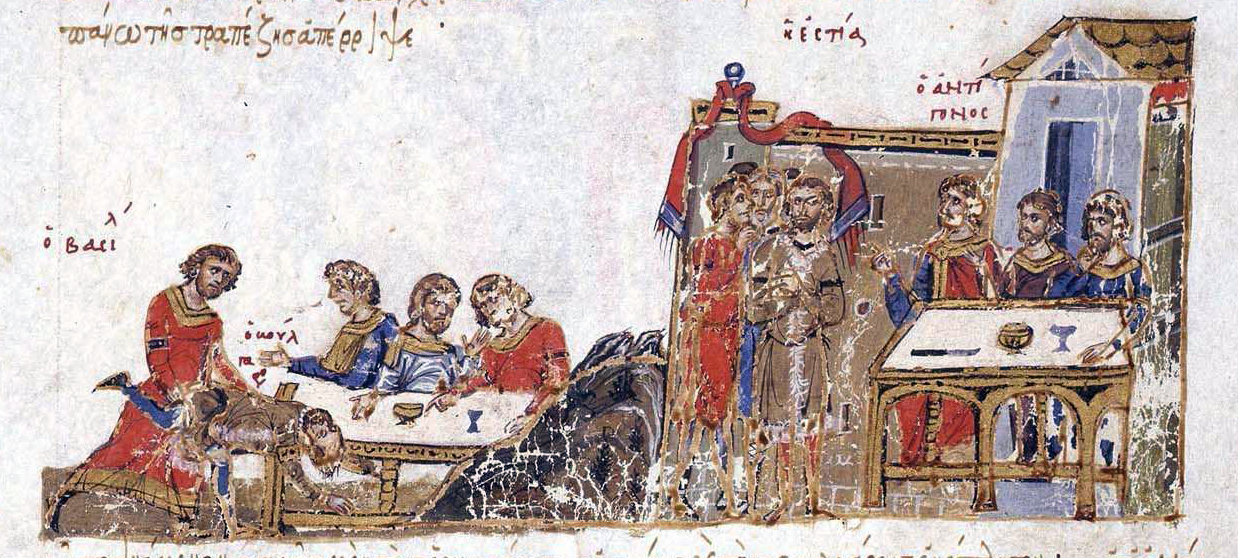
Though things seemed to be going in favor for the Byzantines when it came to expelling Arab raiders from their eastern frontiers more so with the power of the Abbasid Caliphate in decline thus creating smaller Arab emirates and small Georgian and Armenian Christian principalities along the border of Byzantium and the Caliphate, there happened to be a new unknown enemy that would attack Constantinople directly for the first time in 860 while Michael III himself was away in the east battling the Arabs.
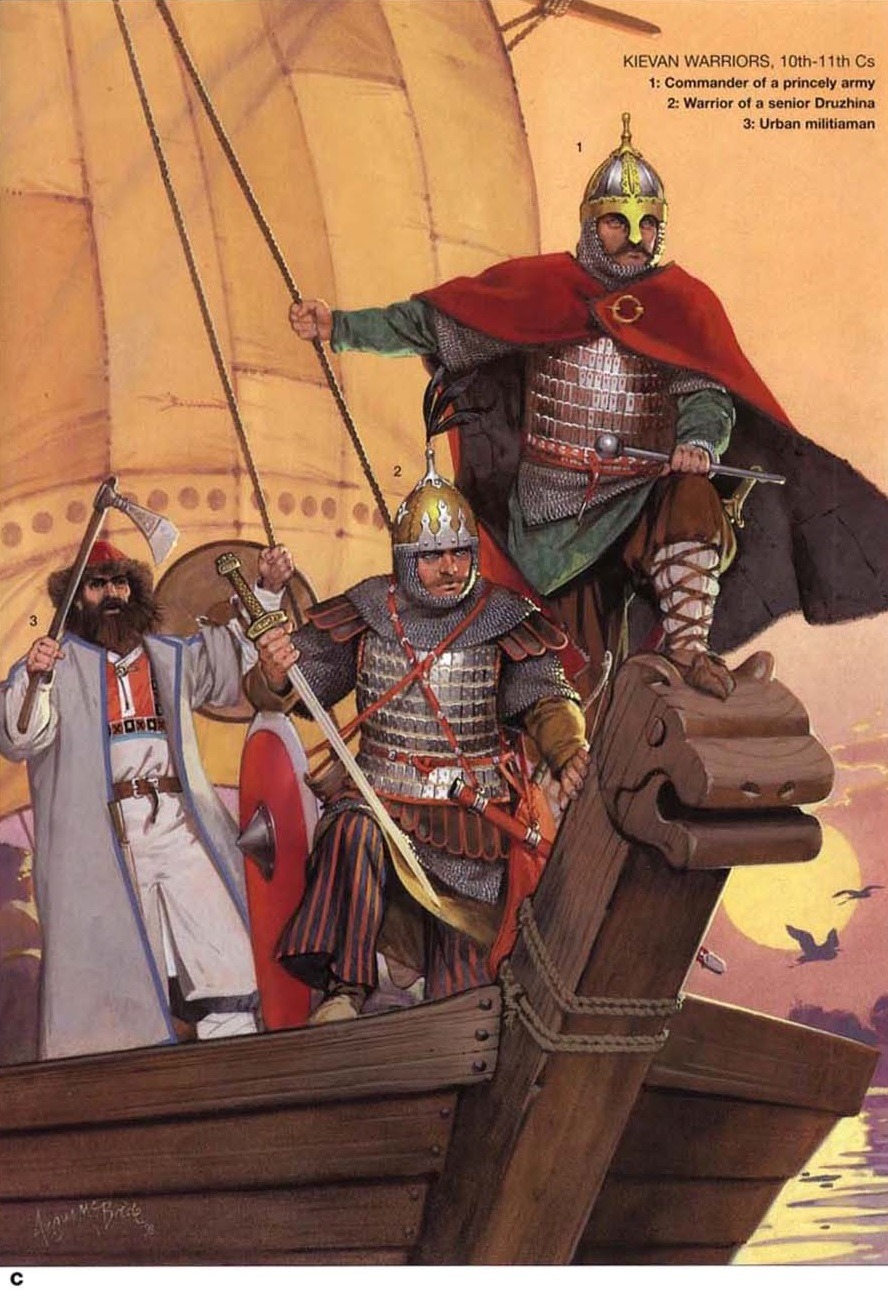
Here in 860, this unknown enemy that attacked Constantinople or at least its suburbs with their longships was the newly forming state of the Kievan Rus’ or basically the predecessor state of Russia, and these people back then were basically Norsemen from the eastern part of Scandinavia (modern day Sweden) better known as Varangians rather than Vikings, as Vikings refer more to the Scandinavians from the west (Norway and Denmark) that would come to attack Western Europe while the Varangians from Sweden led by a chief named Rurik would be the ones to sail into Russia and Eastern Europe. As you may all know that the 9th century over here was the era of the Vikings and this included the Varangians who like the Vikings in the west seeing their native land was too cold and overpopulated to farm in, they searched out for land to colonize, and here the Varangians sailed across the Baltic Sea into the rivers of Russia where they would establish trading colonies like Novgorod and Kiev and integrate with the local Slavic population there before establishing their own state there and then sailing out into the Black Sea to Constantinople. The Varangian warriors here better known as the Rus however did not really intend to besiege Constantinople but just lay waste to its suburbs and loot treasure in typical Viking fashion, and after they carried out their raid, they simply left the area when Michael III came back.
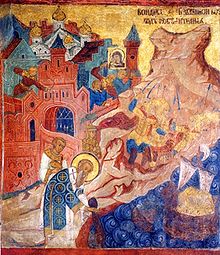
The Byzantine people however would never forget the fear caused by these warriors as their large sizes, messy hair and beards, and drunken behavior greatly intimidated them, though Patriarch Photios claims that the Rus departed because of divine intervention. When doing an investigation on the Rus’ attack, it turned out that it was indirectly caused by the Byzantines as back in Theophilos’ reign, he helped the still remaining Khazar Khanate in Southern Russia which was a long-time Byzantine ally construct the Fortress of Sarkel along the Don River which later blocked the Rus’ fleet from coming out to the Black Sea to trade, and in revenge for the Byzantines for helping build this fort, the Rus chose to attack Constantinople just to teach Byzantium a lesson. With this attack by the Rus, Photios decided that it was time to make a firm stance in converting the people up north to Christianity as a way to create allies rather than enemies, although Photios was actually doing this as part of the ongoing competition with the Church of Rome, and just like in the 20th century Cold War between the USA and Soviet Union where both were at race to beat each other into blasting off to space, here the Byzantine Empire and Papacy had their own Cold War in a race with each other on which of them would be first to convert the still Pagan Slavs and the still Pagan Bulgarian Empire up north, and apparently the Byzantines won it being first to convert the Slavs as Photios sent two missionaries deep into Central and Eastern Europe.
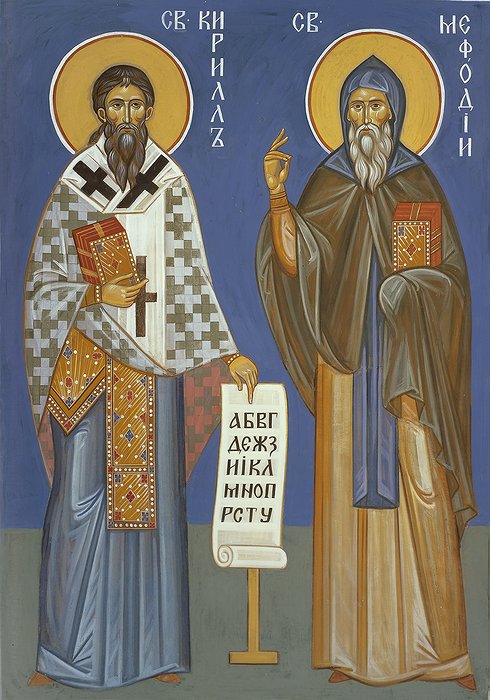
These two Byzantine missionaries Photios sent were the Greek brothers Constantine (renamed Cyril) and Methodius who had known the Slavic language therefore making it easier to spread Orthodox Christianity by preaching it in the people’s native Slavic language, and these brothers would end up spreading Orthodoxy to what is now Serbia, Croatia, Hungary, Czech Republic, Slovakia, Ukraine, and Russia, and despite the political agenda of Photios in converting the people of these distant lands just to beat the Church of Rome in doing so, these brothers would be forever remembered as saints, and their greatest legacy was in leading to the creation of the Cyrillic Alphabet named after the younger brother St. Cyril which would be the alphabet of many Slavic countries up to this day including Russia, though this would be more of a different story altogether. Back in the empire, Michael III would happen to be too trusting of the people that worked with him like his uncle Bardas who in 859 was promoted to the rank of Kouropalates or “Head of the Palace” and even Caesar in 862, though in 863 Michael himself led a military campaign together with his other uncle Petronas against an invading army of Abbasid Arabs and forces of their satellite Emirate of Melitene allied with the Paulician forces of Tephrike under Karbeas, and here at the Battle of Lalakaon in Paphlagonia (Northern Asia Minor), the Byzantine forces led by Petronas won a decisive victory over the Abbasids and their allies while the Paulicians’ leader Karbeas too was killed here. This victory thus happened to be the turning point wherein the tide of war against the Arabs truly switched to the offensive for the Byzantines, and this would be the reality for the Byzantines from here on, yet in the following year (864) something else went in favor for the Byzantines and this was with their northern neighbor, the Bulgarian Empire as their ruler Boris I finally chose to convert to Orthodox Christianity thus making Bulgaria fall under the Church of Constantinople and under the Byzantine sphere of influence.
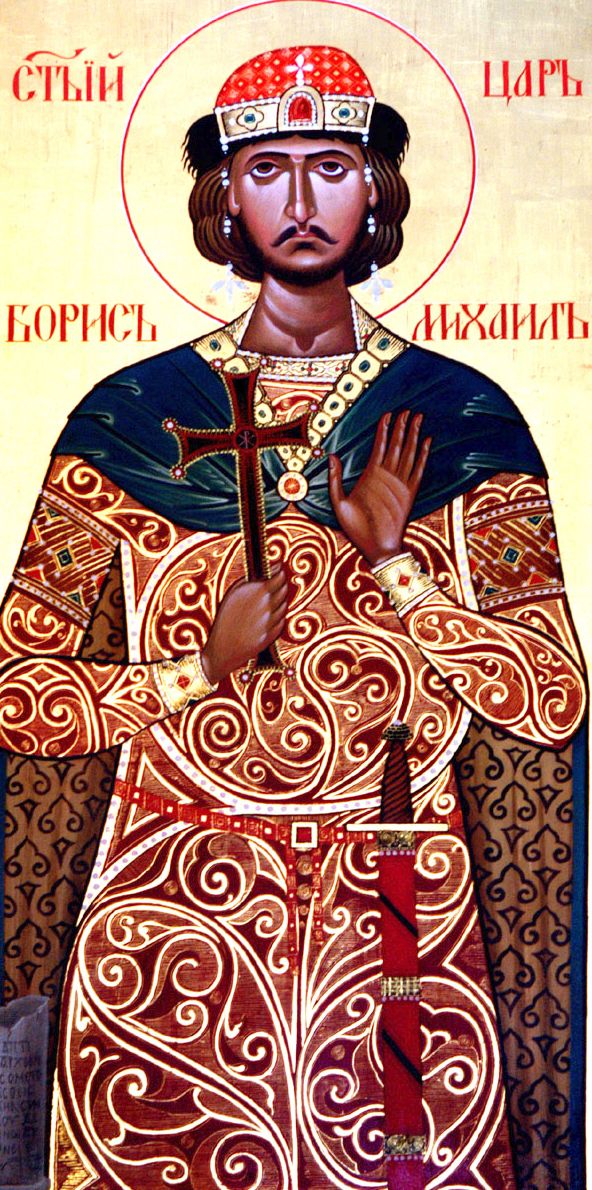
The reason now for Boris I to accept Orthodox Christianity was most certainly because he was pressured to do so according to the History of Byzantium Podcast, and I would agree with it too as Bulgaria here was surrounded by two powerful Christian Empires pressuring them to convert which were the Orthodox Byzantines in the south and the Catholic Carolingian Franks in the west and between both, Boris chose Byzantine Orthodox basically because Constantinople was closer to him and when being baptized as a Christian in the Bulgarian capital of Pliska, he changed his name to Boris-Michael using the name of his godfather, the Byzantine emperor Michael III who although was not at his baptism. As for Michael III, despite so much successes happening in his reign, he really had nothing to do with it, but no matter how irresponsible he was as a ruler who did not really give a care about anything, he had competent people behind him such as his uncles Bardas and Petronas as well as Patriarch Photios while Michael was busy partying with his friends that one time according again to the History of Byzantium Podcast, he participated in the chariot race in the Hippodrome himself and once played around with his friends dressing up in stolen clerical outfits dancing around in the streets of Constantinople as if he was mocking the clergy. Michael had also grown closer to his bodyguard Basil as the years passed which also helped Basil rise up the ranks that soon enough Michael as an act to keep his longtime mistress Eudokia Ingerina closer to him as he was still married to his wife that he did not love, he had Basil divorce his first wife Maria despite them already having a son named Constantine, thus having Basil marry Eudokia as Michael wanted to still keep her closer to him, and Basil was in fact the closest person to him.
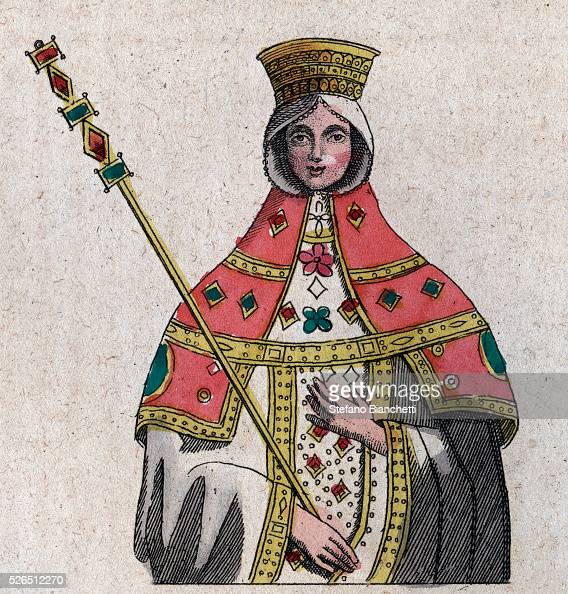
Unfortunately, the people in the government that Michael put all his trust to would not last long enough as in 865 his uncle Petronas had died, and in 866 when Bardas was preparing for another attempt to retake Crete from the Arab pirates, Basil would show his true ambitions and here he falsely accused Bardas of plotting against Michael to take the throne from him, and Michael as usual easily fell for this lie and had Basil execute Bardas which Basil successfully did, thus Basil replaced Bardas as Caesar and then even as co-emperor, though the expedition to retake Crete never happened. In 866 as well, Eudokia would give birth to her first son named Leo and his birth was celebrated with races in the Hippodrome, but it was unclear on who his father actually was whether it was her husband Basil or her lover Michael III, but this story would go with Michael III the Amorian as Leo’s father as Michael was closer to Eudokia more than Basil was, and being unable to have children with his first wife, he thought that he could use Eudokia to continue his dynasty by having sons with her. Basil on the other hand was still ever more eager to rise up to power as when already getting a taste of it, he could not stop and this meant wanting to be able to achieve the most powerful position of the empire, which was that of emperor. One night in 867 as Michael III with Basil and Eudokia were at a dinner in a palace in the Galata District of Constantinople found across the harbor of the Golden Horn, with Michael as usual drinking to get wasted, hence his nickname “Michael the Drunkard”, Basil used Michael’s drunkenness to his advantage, and so he went to Michael’s bedroom and broke the locks of the door and escaped to the Imperial Palace in the main part of the city. Michael being so wasted was carried to his bed, but some hours later as the door’s lock was broken by Basil, assassins sent by Basil rushed into the room and stabbed Michael to death. Now because of this, it can be said that Michael III’s personality of being too trusting of others too much led to his downfall especially when putting trust in someone like Basil who happened to be a murderer with his own imperial ambitions. Following his assassination, Michael was quickly buried in a small church across the Bosporus wherein only his mother Theodora and sisters were allowed to attend his funeral, though later this year (867), Theodora too would die.

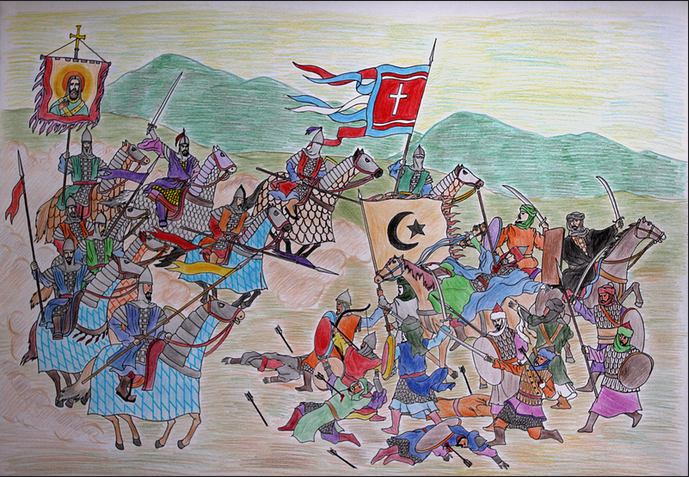
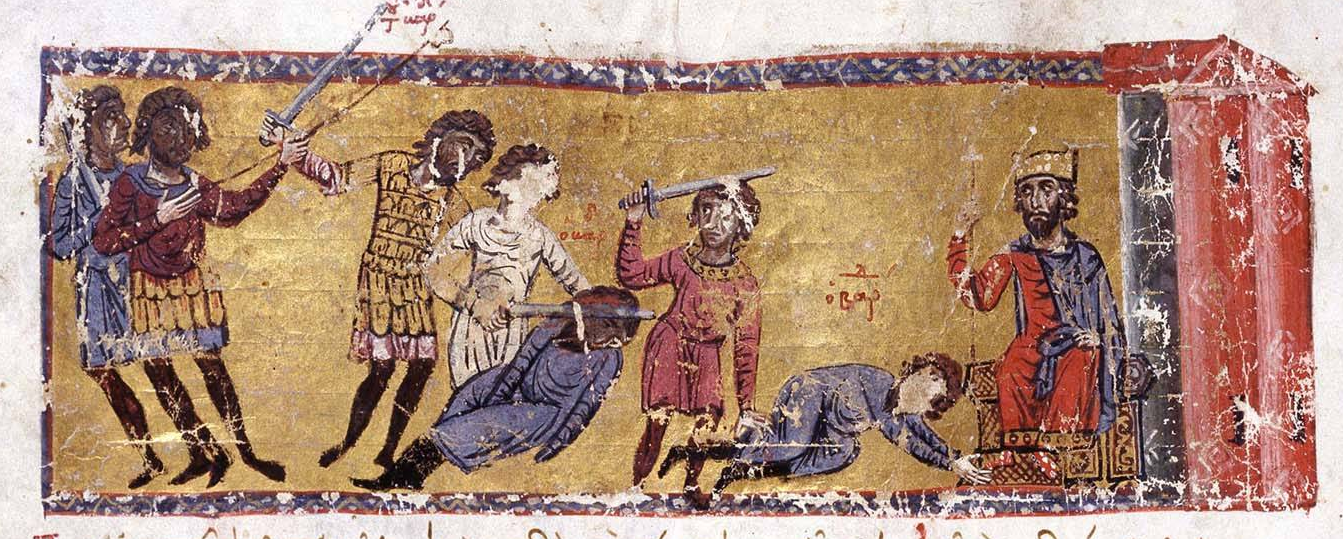

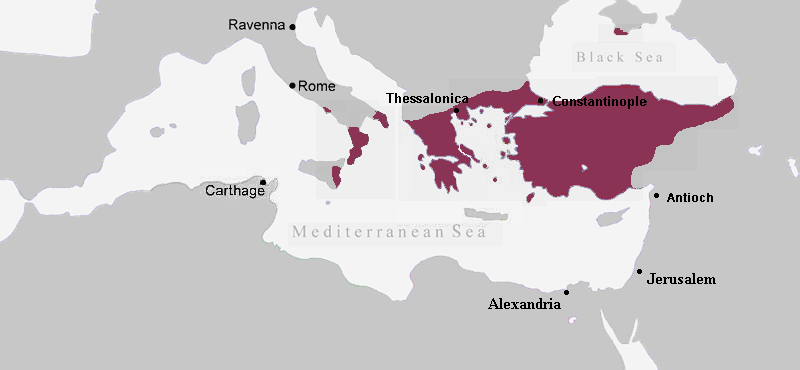
Here in 867 following the assassination of Michael III, Basil I the Macedonian at age 56 after just 10 years of knowing the previous emperor was now the sole emperor of the Byzantine Empire. The situation happened to be quite embarrassing here as a simple peasant turned horse tamer and wrestler who not only had no formal education but in fact was an illiterate person became the sole ruler of the empire, but despite being illiterate and uneducated, he was very intelligent and this was how he was able to find the right moment to usurp power and kill off Michael III, though everyone really just saw Basil as a man of great size, height, and physical strength, and nothing more.
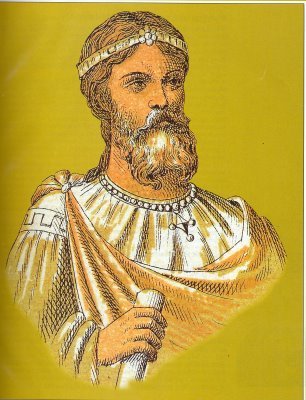
In order to justify killing Michael III, Basil told everyone he was just doing this to save the empire as Michael III true enough was an irresponsible drunk who could not be trusted as if he continued ruling alone with his uncles Bardas and Petronas gone, then all the hard work that was previously done to improve the empire would easily be wasted away. However, Basil was not the first to take the throne this way as just 47 years earlier in 820 Michael III’s grandfather Michael II did just that by killing off Leo V in the Christmas Mass, therefore Basil I’s murder of Michael III seemed justifiable and nothing new to the people of Constantinople and the army, but also Basil’s usurping of power would also be justifiable as he was getting rid of the corrupt Amorian Dynasty which is what Basil’s biography written by his grandson, who will appear later would say about him. On the other hand, Basil also wanted to show that he did not really kill off the Amorian Dynasty by telling everyone basically that his son with Eudokia which was Leo was actually Michael III’s, which in this story would be true making Leo an Amorian. Now just after becoming the sole emperor or Basileus of the empire, Basil I despite knowing very little about Church politics would show his hidden ability in politics when suddenly firing Photios from his position as patriarch and replacing him with the former now 70-year-old patriarch Ignatios who back in 858 was fired by Bardas and by firing Photios, Basil was actually doing this as an act to be in good terms with the new pope in Rome Hadrian II who was just elected in 867 too and with Photios who was at odds with the Papacy removed, the pope in Rome and Byzantium would be in good terms again, and now with Photios fired ends the Photian Schism. Now when it came to ruling, Basil I wanted to show his subjects he was a devout Christian unlike his predecessor Michael III who was the opposite being quite disrespectful to his faith and debauched in lifestyle which shocked his subjects, but also to show that he was a just usurper rather than a bloody killer, Basil acted as a strong protector of the poor and lower classes from corrupt eunuchs and tax officials considering that he came from the lower class, though a lot of Basil’s reputation as this type of ruler was mostly exaggerated in his biography by his grandson.

On the other hand, Basil was also trying to make an image of himself as the new Emperor Justinian I the Great (r. 527-565), the greatest Byzantine emperor so far, and to imitate Justinian I Basil carried out the ambitious project of recodifying Justinian I’s Corpus Juris Civilis itself or Code of Laws for the empire, and although Basil was illiterate, all he could do was commission the recodification of Justinian’s laws and its translation into Greek, and this new edition of Justinian’s code of laws would be known as the Basilika, though not named after him as its title actually means “Royal Laws” in Greek, and this would be the code of laws the Byzantines would use till the end of their empire. Like Justinian I, Basil also carried out ambitious construction projects, although a lot of others before including the Magnaura school which taught astronomy, geometry, and philosophy was already established by Bardas previously, so basically what Basil would do was to build a church that would rival Justinian’s 6th century Hagia Sophia cathedral in grandeur, and this church built by Basil I was the Nea Ekklesia in the Imperial Palace Complex which although was not as large as the Hagia Sophia near it but had the innovation of having 4 domes surrounding a higher inner dome, thus being the first Byzantine church in this new style. Its interiors would then have some of the finest frescos and mosaics in a new style that emerged in this era following the end of the Iconoclast period. Like Justinian I as well, Basil I also came from humble origins except Justinian was highly educated while Basil still remained illiterate even deep into his reign that he would only use a mark rather than his signature in signing documents. Just like emperor Justinian I again, Basil I would also have some interest in restoring Byzantine rule to the west in which no emperor prior to him did since Constans II (r. 641-668) 200 years earlier- the lead character of chapter IV of this series. Basil I would show his interest in wanting to restore the Byzantine west in 870 when he allied himself with the current Carolingian Frankish emperor Louis II, the grandson of the Frankish Empire’s founder Charlemagne (r. 768-814) in fighting off Arab attacks in Southern Italy which happened to be successful as in 870 the Byzantine fleet in the Adriatic Sea was able to defeat an Arab fleet and afterwards annex the Dalmatian Coast (in today’s Croatia) as part of the Byzantine Empire in order to protect it thus making Dalmatia a Theme, while the city of Bari in Southern Italy which previously fell to the Arabs in 871 fell under Louis II, though after Louis’ death in 875 the Byzantines would take back Bari. Now the successful general who would be responsible for these victories in Italy was the Cappadocian Greek noble Nikephoros Phokas the Elder, though it would be his grandson mentioned later who would be the more famous person with the same name. At the same time as Basil I busied himself fighting wars in the west, the Paulicians of Tephrike in Eastern Asia Minor again came back into the picture and this time a much bigger threat under a strong leader named Chrysocheir who succeeded Karbeas as the Paulician’s leader, and in 872 Basil himself personally led the army determined to crush the Paulician heretics in battle once and for all. When confronting the Paulicians in Eastern Asia Minor at the Battle of Bathys Ryax, Basil himself almost lost his life if not for one of his soldiers being the Armenian peasant Theophylact Lekapenos saving his life here, but at the end of the day the Byzantine forces still won the battle and Chrysocheir himself was killed while the entire Principality of Tephrike would be annexed into the empire, though the city itself would only be fully conquered and destroyed in 878. Back in Constantinople, Theophylact would be promoted to be a member of the emperor’s elite guard or Tagmata but he would have no so such ambitions, although his son who would later appear would. Now with the Paulicians fully removed as a political power, the remaining Paulician believers would be forced to settle in other parts of the empire to prevent them from starting another rebellion, and many Paulicians would end up fleeing north into the Balkan heartlands.


On the other hand, it seemed like Byzantine missionary activities were successful in Christianizing the Balkans that Photios being a politician needed to be restored as patriarch and so when the 80-year-old Patriarch Ignatios died in 877, Basil reappointed Photios as patriarch who at the same time would also be the teacher of Basil’s sons. The rest of the events however would turn out disappointing and even sad for Basil in the next years as first in 878 Syracuse which was the main city of Byzantine Sicily would fall to the Arabs, and in 879 Basil’s son and co-emperor Constantine with his first wife Maria suddenly dropped dead, therefore he had to make his youngest son with Eudokia Ingerina which was Alexander as co-emperor, and Alexander certainly was Basil’s son with Eudokia as he was born in 870 long after Michael III died which is why Basil favored Alexander more than Leo who was actually Michael III’s son, but on the other hand Basil saw Constantine’s death as divine punishment for killing Michael III.
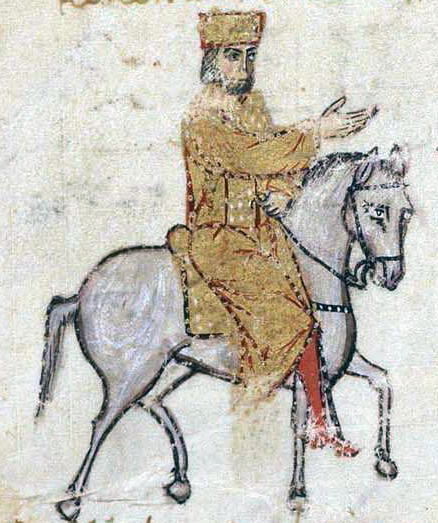
In 880, there would at least be some success for the Byzantines as Nikephoros Phokas the Elder was able to recapture much of Southern Italy from the Arabs but in 882, Basil would be depressed again as his wife Eudokia had died and by being more depressed, Basil would become even more paranoid as the years would go by especially with Leo who he never believed was his son anyway that Basil would in some occasions physically beat Leo basically for no clear reason except that Leo was nothing like Basil who being very manly enjoyed hunting and sports while Leo was a serious scholar who enjoyed books, and true enough Leo too did not see Basil as his real father and obviously- in this story’s case- Leo looked nothing like Basil who was large in size with a rough face, but rather Leo looked more like Michael III being thinner and shorter with a finer face. At one point, Basil even suspected Leo of trying to kill him to avenge his father Michael III’s death when Leo was discovered holding a knife even if he had no harmful intention with it, though Basil being paranoid had Leo put in prison for this, though it caused public rioting as Leo was actually loved by the public.

Basil however thought of blinding Leo but was persuaded to not do it by Patriarch Photios, while one story which would be true here says that a parrot sang to Basil telling him to spare Leo but Basil not listening killed the parrot by breaking its neck, although feeling guilty for killing the parrot, he still released Leo from prison here in 886 after a 3-year sentence and restored him as co-emperor. Now in the summer of 886 after getting some relief, the now 75-year-old Basil spent some leisure time going hunting in the woods in the Asian side of Bosporus, but when hunting he ended up losing his hunting party getting stranded in the woods alone when a stag all of a sudden grabbed Basil’s belt with its antlers thus pulling him off his horse and dragging him for 16 miles through the woods as the story goes. Some hours later, the injured Basil was found by a man who cut him loose but still paranoid, Basil had the man killed for holding a knife in front of him and 9 days later, Basil would die on August 29 of 886 in his hunting lodge from the injury caused by the stag after a 19-year reign. Here, he died at least going such a long way from peasant to emperor who left behind many extravagant palaces and churches in Constantinople, and more importantly a full treasury, but little did he know that he was the first and last of his Macedonian Dynasty.
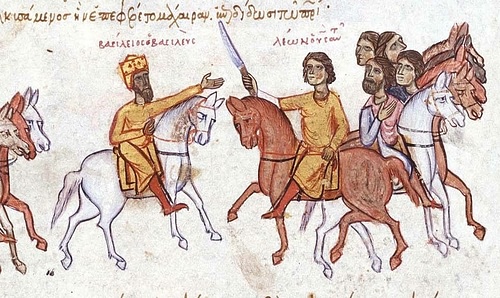

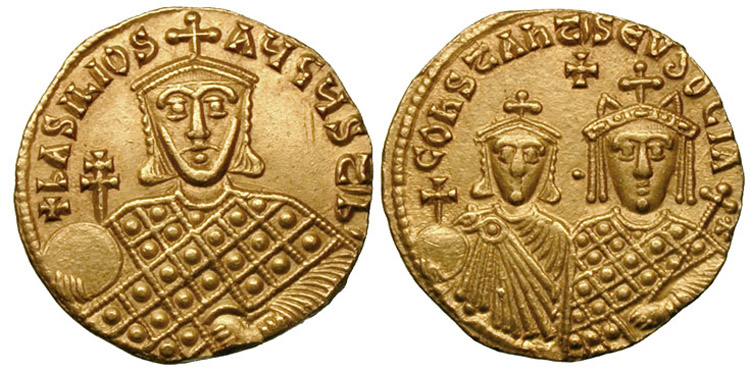
Watch this to learn more about Basil I’s life and reign (Jabzy).
Leo VI the Wise, A Serious Scholar but a not so Successful Ruler (886-912)

After Basil I’s death, Leo VI known as “the Wise” came to the throne before turning 20 and despite him not actually being Basil’s biological son, he still became emperor as he was Basil’s legal son and the eldest surviving one. Basil I’s death caused by a hunting accident on the other hand sounded very suspicious, and it may have seemed Leo was involved in it as at Basil’s deathbed, one of Leo’s closest advisors was present which was Stylianos Zaoutzes, and it could have been him that poisoned Basil, but this cannot be entirely proven.
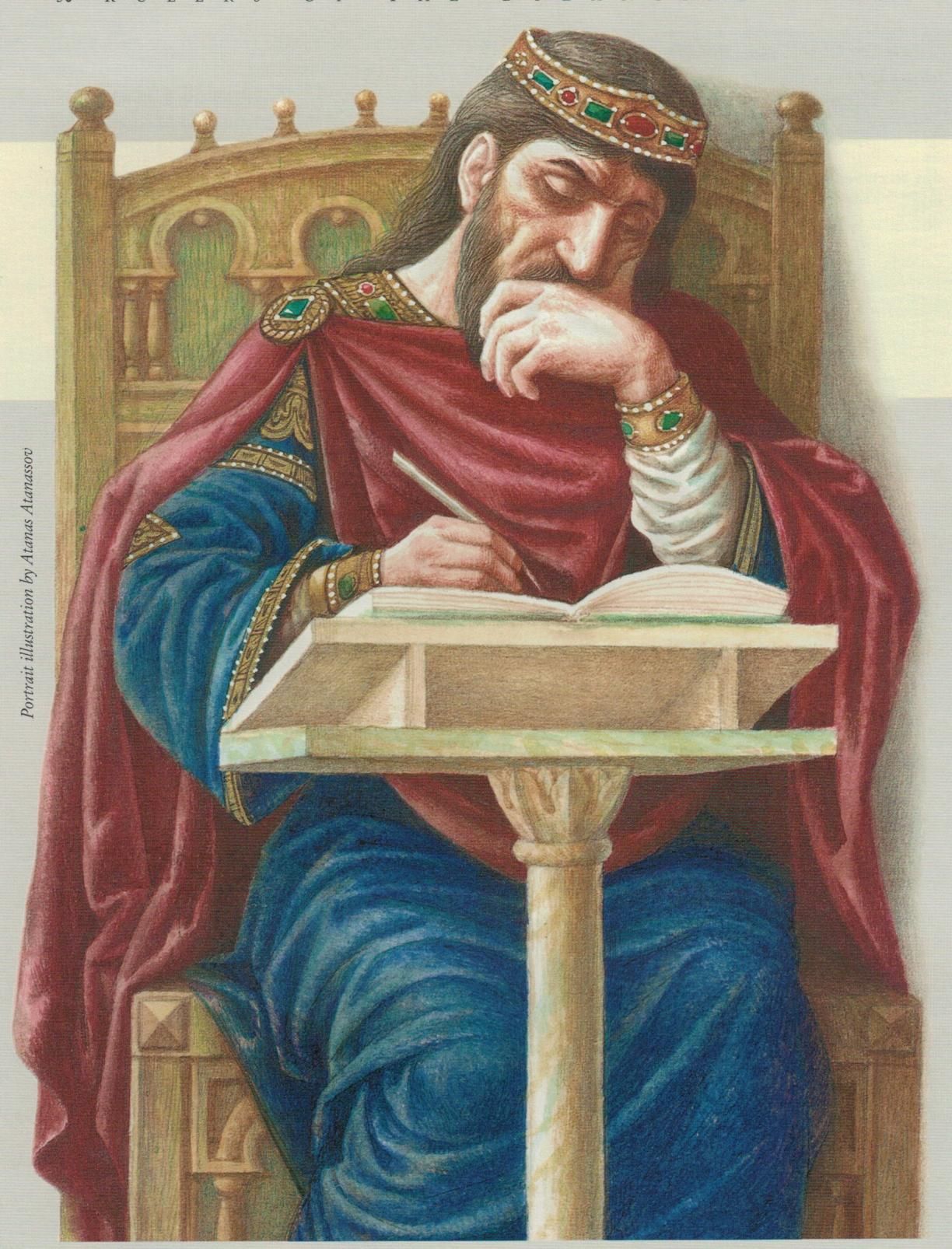
As for Leo, another reason for him to hate Basil aside from knowing that he killed his actual father which was Michael III, was that Basil forced him to marry a woman he did not like which was a pious and boring woman named Theophano Martinakia– and no, she is not the same Theophano that will be removed from this story- while Leo himself already had a beloved mistress which was Stylianos’ daughter Zoe Zaoutzaina and when still alive, Basil banished Zoe in order for Leo to marry Theophano who he had no feelings for, again history repeats itself as Leo’s actual father Michael III had the same situation when forced to marry someone he did not love while actually having a lover which was Leo’s late mother Eudokia that married Basil. Just right after becoming emperor, there is one historical evidence that shows Michael III was actually Leo’s father and this was when Leo in act of getting back at Basil ordered that Michael III’s body buried across the Bosporus in the Asian side be reburied at the Church of the Holy Apostles, the imperial mausoleum with a funeral ceremony fit for an emperor. Leo though was not the sole emperor as his younger brothers Stephen who was also rumored to be Michael III’s son and Alexander who was actually his half-brother being without question Basil’s son were his co-emperors, although Leo at the end of 886 removed Stephen from his position as co-emperor and appointed him as Patriarch of Constantinople despite his young age, thus this would be the first of many inexperienced young family members being appointed as patriarch.
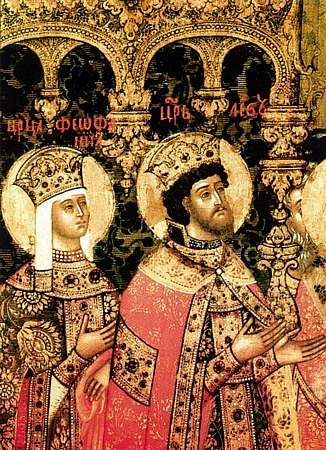
With Stephen appointed as patriarch, the old Photios on the other hand was fired from his position as patriarch as Leo distrusted him despite Photios being the one that actually educated Leo, but Leo turned on Photios for supporting Basil and the decision for Leo to marry Theophano who he hated, though Leo also wanted to be in good terms with the Papacy that distrusted Photios, though Photios would still live on until 893. Being the emperor, Leo was a dutiful ruler that attended every event that needed him whether it was chariot races or Church services, and as a serious scholar he devoted a lot of his time as well as money and energy into intellectual matters and passing new laws. In 892 Leo completed the Book of Royal Laws or “Basilika” which Basil commissioned to update Justinian I’s law code, and although Leo hated Basil he still saw it was his duty to update Byzantine law, and being a learned scholar unlike Basil before him who was illiterate, Leo personally recodified the law by putting a few of his insights into it, but the biggest revision of the Basilika was that it had finally translated the laws made by Justinian I which were in Latin into Greek so that everyone could understand it as here Greek was already the official and majority language of the empire while Latin was only used for specific court purposes. Leo too had made a reform which was to centralize the power of the emperor and limit the power of the Byzantine Senate which was at this point very much useless, as due to the rise of the Thematic System and the powerful landed military magnates in the countryside, the senate became nothing more than a club of old and rich aristocrats advising the emperor, although Leo could not fully get rid of the senate as it was an ancient institution dating back to even before the Roman Empire was established. Leo had also been vocal about loose women and adultery in his laws, but true enough he was a hypocrite as he himself had a mistress while he was already married, although Leo’s marriage to Theophano never worked out, not even very little, and being tired of her marriage to a husband that did not care, Theophano in 893 decided to leave the palace and become a nun while Leo went back to his mistress Zoe.
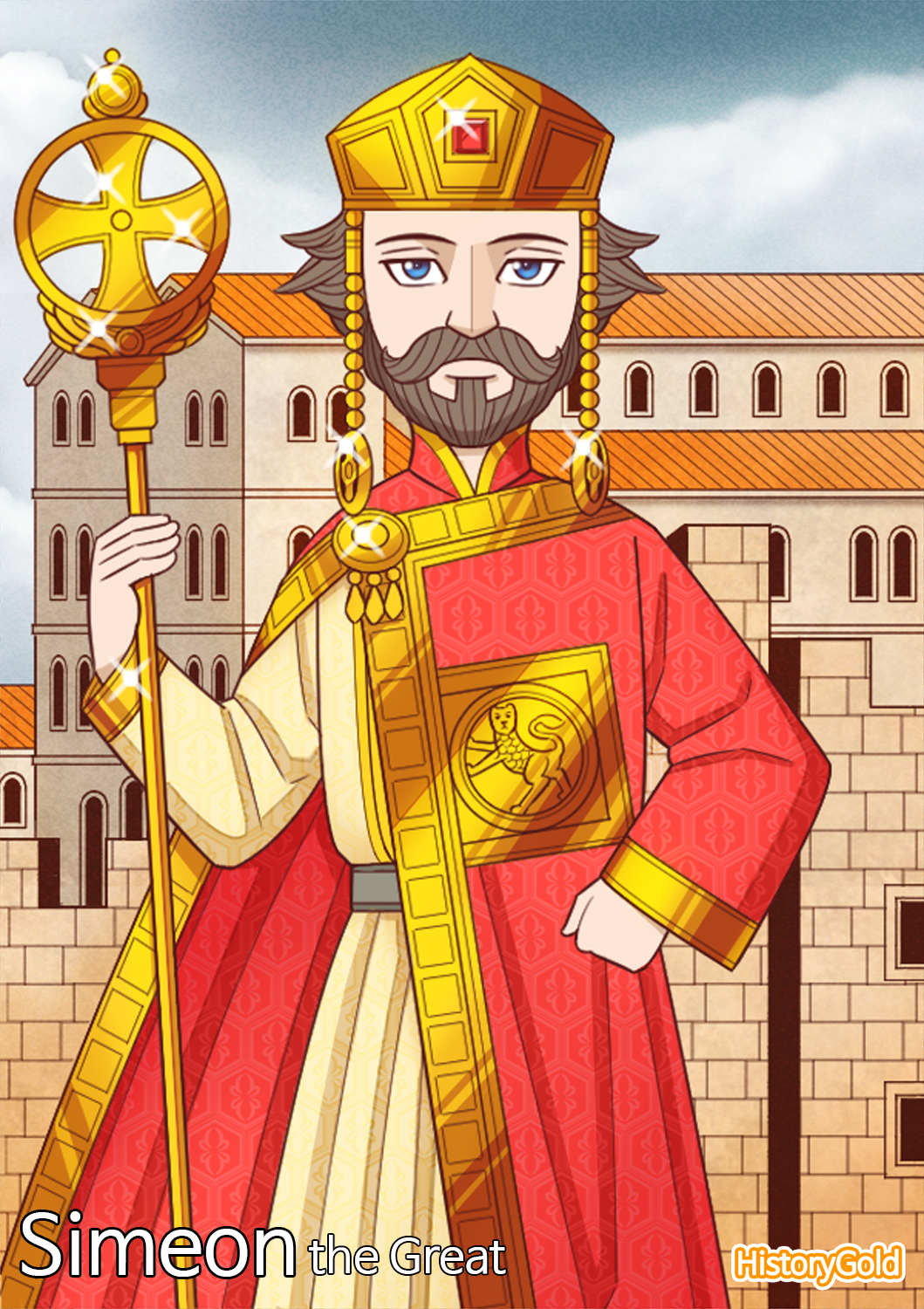
It also happened in 893 that the Bulgarian Empire up north had a new ruler being Simeon better known as “Simeon the Great” who had been educated in Constantinople by Photios being Leo’s classmate too, and was the son of the same Boris I who previously converted Bulgaria to Christianity back in 864, though here by 893 Boris was still alive except that since 889 he abdicated from power and retired to a monastery being succeeded by his eldest son Vladimir who attempted to restore Bulgaria to its old Pagan religion of Tengriism but failed greatly and in 893 was blinded by his father Boris coming out of the monastery but not wanting to return to power, Boris made his younger son Simeon who had been back in Bulgaria since 888 as Bulgaria’s new ruler. Things at first seemed to be going well between Leo VI’s Byzantium and Simeon’s Bulgaria until Leo’s highest minister Stylianos Zaoutzes who was his lover Zoe’s father as previously mentioned schemed to have the Bulgarian merchants kicked out of Constantinople and moved to the empire’s second city of Thessaloniki where they would have to pay higher taxes to sell their goods which was part of Stylianos’ corrupt motives to make himself richer, and Leo relying too much on Stylianos agreed to it in 894 which on the other hand backfired at him as the Bulgarians felt insulted, thus Simeon declared war on Byzantium. Simeon in 894 led his armies from Bulgaria into Byzantine Thrace in the south where the Byzantine forces were defeated, but in response Leo not wanting to give up recalled Nikephoros Phokas the Elder, the empire’s most talented general from Italy to Thrace where he would crush the Bulgarians in battle, but most of the success for the Byzantines here in 895 was mostly due to an alliance Leo made with a new steppe people that migrated from Russia to the north of the Danube known as the Magyars.
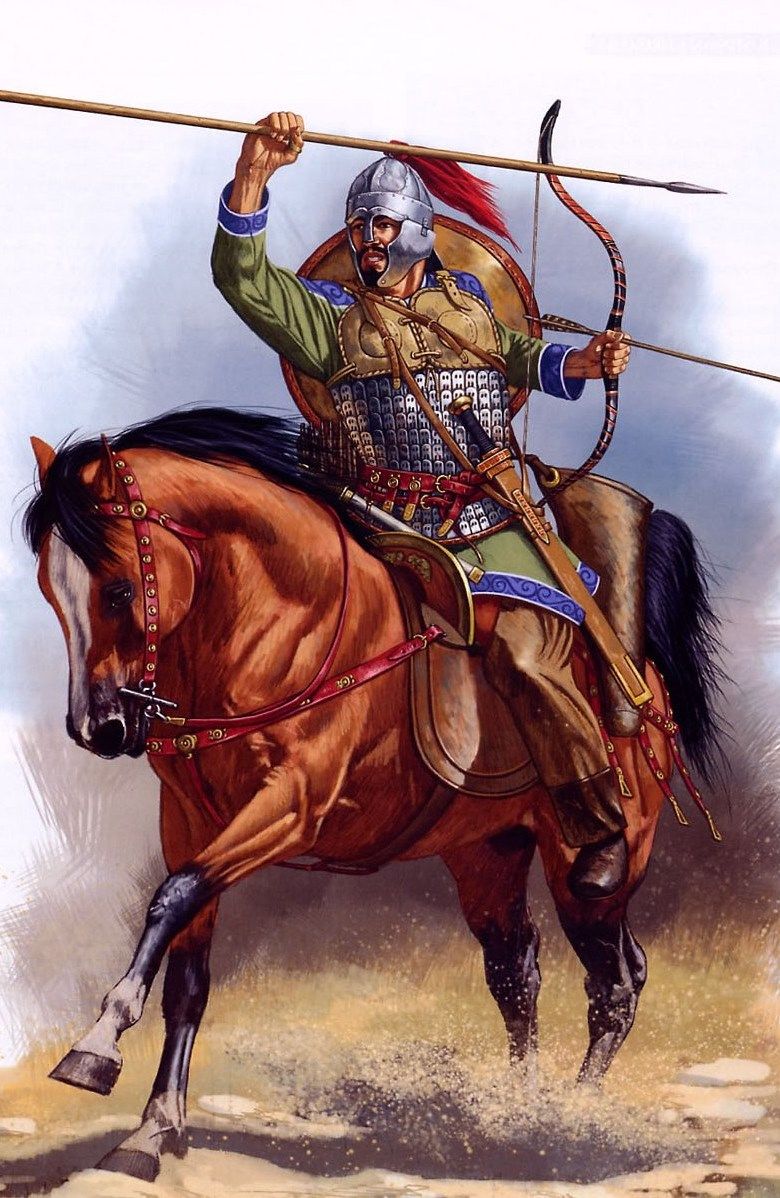
The Magyar leader Arpad accepted the bribe money offered to him by Leo and attacked the Bulgarian Empire from the north successfully making Simeon abandon his invasion of Byzantium in the south as he had to deal with the Magyars north of the Danube although shortly after, Simeon was able to defeat the Magyars by allying himself with another group of nomadic horse people north of the Danube known as the Pechenegs, which were a much more difficult and ruthlessly warlike people. With the Magyars defeated in 895 by the Bulgarians, they were forced to flee further west until they came across the Pannonian Plain which was once Roman territory wherein they finally settled down forming what would be Hungary whereas Arpad became its first ruler while for the Byzantines in 896, after losing their Magyar allies, they were severely defeated by the Bulgarians with the strength of their cavalry at the Battle of Boulgarophygon in Thrace, which at the end forced Leo to agree to paying a heavy annual tribute to Simeon to avoid war.

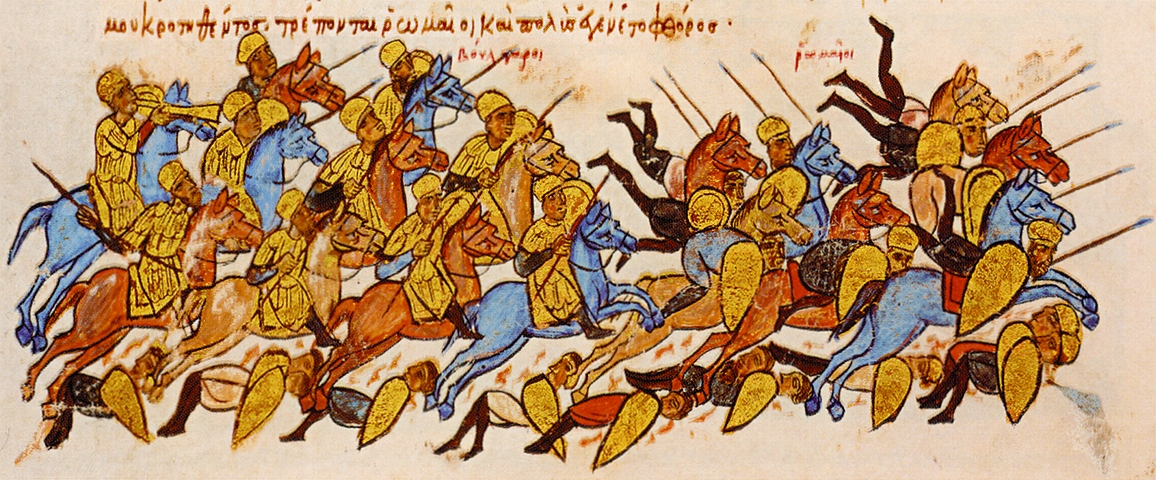

In the meantime, in 897 Leo VI’s first wife Theophano who he never loved died in the monastery she retired to which for Leo gave him such joy, and following Theophano’s death he immediately married his longtime mistress Zoe and proclaimed her the empress or Augusta, and they would have two children together although both were daughters. Unfortunately, Leo’s happy marriage to Zoe would not last as just 2 years later (899), Zoe had died from illness and so did her father Stylianos, but in the following year (900) as the 10th century opened, the Byzantine army scored a major success when defeating the army of the Arab Emirate of Tarsus in Cilicia- another breakaway emirate of the Abbasids- and even capturing the Emir of Tarsus but in 902 however, another great tragedy would happen for the Byzantines when Taormina, the last Byzantine city in Sicily fell to the Arab forces in a siege, thus all of Sicily would fall under the newly formed Arab Emirate of Sicily. While all the wars against the Arabs were happening, Leo in 900 chose to marry for the 3rd time despite 3rd marriages being considered illegal in Orthodoxy, but Leo did it anyway just because he desperately needed a son to succeed him and his 3rd wife Eudokia Baiana was chosen by him in a bride show he organized, which here would be the last one recorded in Byzantine history, and fortunately the 3rd wife Eudokia was able to give birth to a son in 901 thus Leo thought this would be his final marriage except that after giving birth, Eudokia dropped dead and so did their newborn son a few days later, now Leo would be greatly heartbroken.
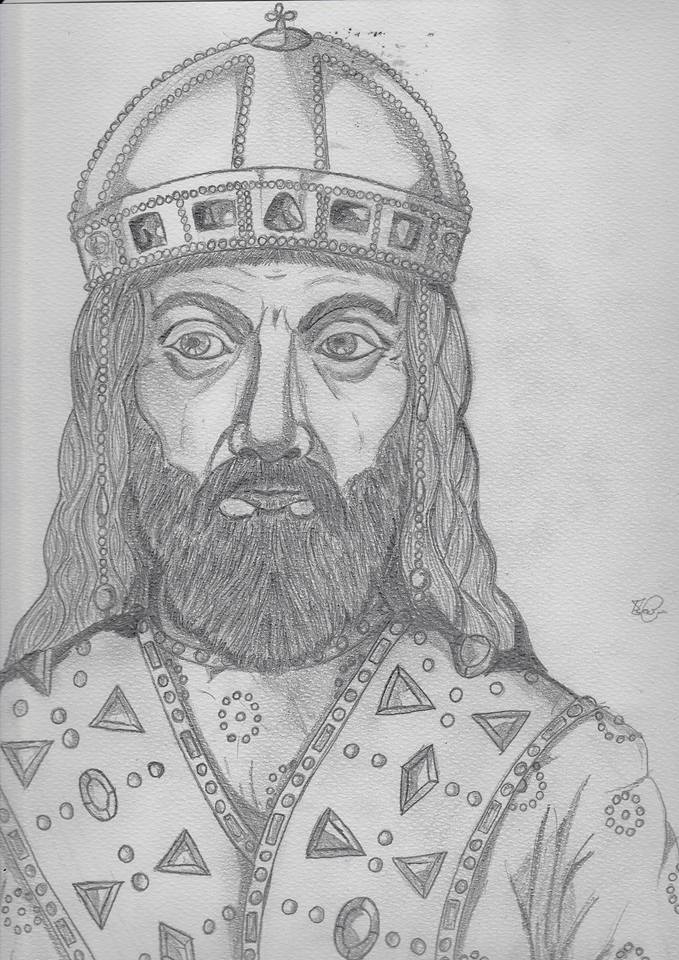
Leo would suffer another misfortune again in 904 when he was almost killed in an assassination attempt carried out by a wrestler and when investigating it, it so happened that his younger co-emperor half-brother Alexander was involved in it, therefore Alexander was removed from his position as co-emperor which would make him start holding a lifelong grudge on Leo as you will see, but worse than this was that also in 904 Byzantium’s second city of Thessaloniki was besieged and brutally sacked by Arab pirates led by the notorious Leo of Tripoli, a Byzantine Greek taken as a captive to Tripoli (in today’s Lebanon) as a child wherein he was raised to become a fearsome pirate. Thessaloniki however was just raided but had not fallen to the pirates, but it was so severely damaged that Leo VI decided to avenge its sacking by doing the same to Tarsus in the southern coast of Asia Minor where this pirate fleet came from. The Byzantine raid on Tarsus in 906 was a successful one with many Arab prisoners taken, except that the general sent to lead the mission Andronikos Doukas out of nowhere abandoned the mission as being from the distinguished aristocratic Doukas clan that had been in the Byzantine Senate since Emperor Constantine the Great established it in 330, he did not want his aristocratic pride hurt by taking orders from the fleet’s admiral Himerios who was lower than him in status, therefore Andronikos fled to the Abbasid’s capital of Baghdad itself where he would die in 910.

As for Leo after losing 3 wives, by 904 he took in a new mistress which was Himerios’ niece Zoe Karbonopsina, a woman with dark curly hair who was most famous for her distinct black eyes, hence her nickname Karbonopsina meaning “black eyes” in Greek, and apparently in 905 they had a son which Leo named Constantine better known as Constantine Porphyrogennetos as he was born in the purple room of the imperial palace, the place only imperial family members had access to in order to give birth to imperial heirs to secure their legitimacy, thus imperial children born here had the title of Porphyrogennetos if they were males or Porphyrogenita for females, literally meaning “purple born” in Greek, and though many would use this title, only Constantine who will rule later on and play a major role in this story would be the only Byzantine emperor to use this title officially. Leo and Zoe were already planning to marry long before Constantine was born, but of course this not only being a 3rd but a 4th marriage was totally outrageous to the Orthodox Church that the current Patriarch of Constantinople here Nikolaos Mystikos, an imperial secretary and Leo’s former classmate who had been patriarch since 901 following Leo’s brother Stephen’s death totally objected to it, so instead Leo and Zoe were secretly married at the dead of night by a priest loyal to Leo, but when Patriarch Nikolaos heard of it, Leo was banned from entering the Hagia Sophia despite being the emperor. Nikolaos however still reluctantly baptized Constantine in 906 but at the same time, Leo decided to return his half-brother Alexander as co-emperor for safety measures in case something happened to Constantine and in 907, Leo was able to get away with his illegal marriage to Zoe by firing the patriarch Nikolaos under suspicion of him siding with the rebel Andronikos Doukas, thus replacing him with the deeply spiritual monk Euthymios, who was Leo’s teacher in theology and spirituality when he was still young. On the other hand, Leo’s other motive in appointing Euthymios as patriarch was to again be in good terms with the pope Sergius III in Rome, as Nikolaos being an outspoken politician was not trusted by the pope whereas a more spiritual leader like Euthymios was more favorable to the pope, again making this another situation in the Church rivalry between Constantinople and Rome, but at the same time the pope also needed Leo’s Byzantine military assistance in defending Southern Italy from the Arabs, which is why Sergius III accepted Leo’s 4th marriage too. In 907 as well, Leo just like his actual father Michael III in 860 faced the same situation of the same Kievan Rus’ fleet of longships attacking Constantinople, except now the Rus were already an official organized state in Eastern Europe but just like in 860 here, the Rus did not attack Constantinople itself, rather they just raided the riches in the churches and monasteries in the suburbs in typical Viking fashion and retreated back north to the Black Sea after receiving some bribe money from Leo.
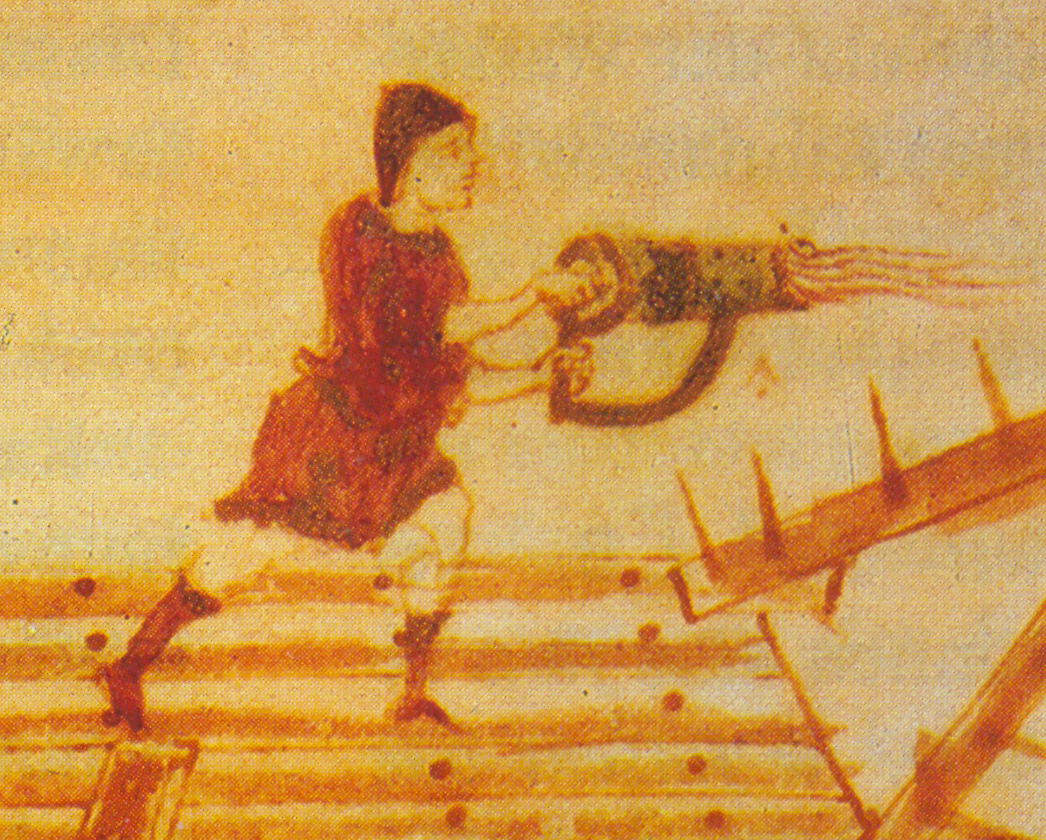
Leo on the other hand after suffering so many military defeats despite not ever personally joining his armies himself in military campaigns learned from his mistakes and in 908 wrote and published a military manual himself based on reports by generals in which he carefully studied and came up with new tactics basing them on where his armies had failed, and this new military manual is better known as the Taktika, though on the other hand Leo had some success in commissioning the invention of a portable version of the empire’s secret superweapon of Greek Fire which was to be hand held during sieges. In 910, Leo’s admiral Himerios would end up succeeding in attacking the Arab pirate fleet in the Mediterranean that he even went as far as attacking an Arab port in Syria, and with this success Leo in 911 sent Himerios with 177 ships on another attempt to retake the island of Crete from the Arab Emirate of pirates there but before being able to finish off his siege of the emirate’s capital Chandax, Himerios received word from the capital that the emperor fell ill and was close to death making him abandon the siege and rush back, thus another failed attempt to recapture Crete. On the return trip to Constantinople in 912, Himerios’ navy in the Aegean was surrounded and annihilated again by the same pirate Leo of Tripoli, although Himerios narrowly escaped, and when the news of the defeat of Himerios to the Arab pirates reached Leo VI in Constantinople, it was the same day he died which was May 11 of 912. Leo VI the Wise died at only 45 due to a fatal illness that could not be cured, possibly cancer while his son Constantine was only 7, but at least Leo left behind a great cultural impact for Byzantium especially in the military manual and code laws he made which would play a vital role in Byzantine politics and warfare from here onwards, but otherwise if Leo had not published these books, then he would just be remembered as a mediocre emperor that tried so hard to win battles but failed.
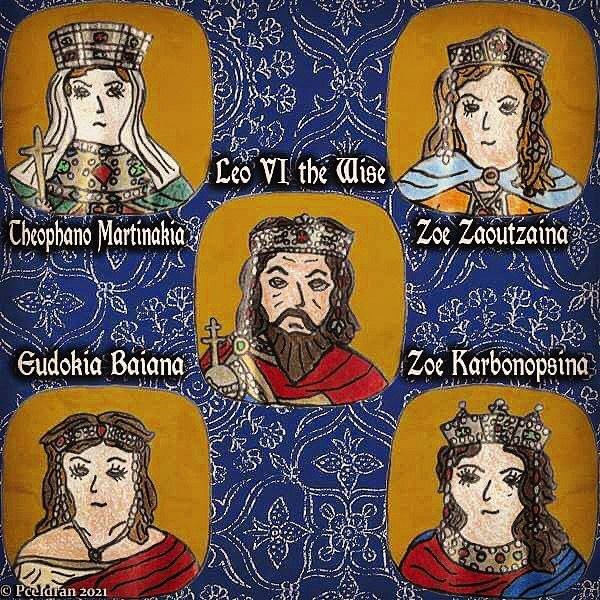
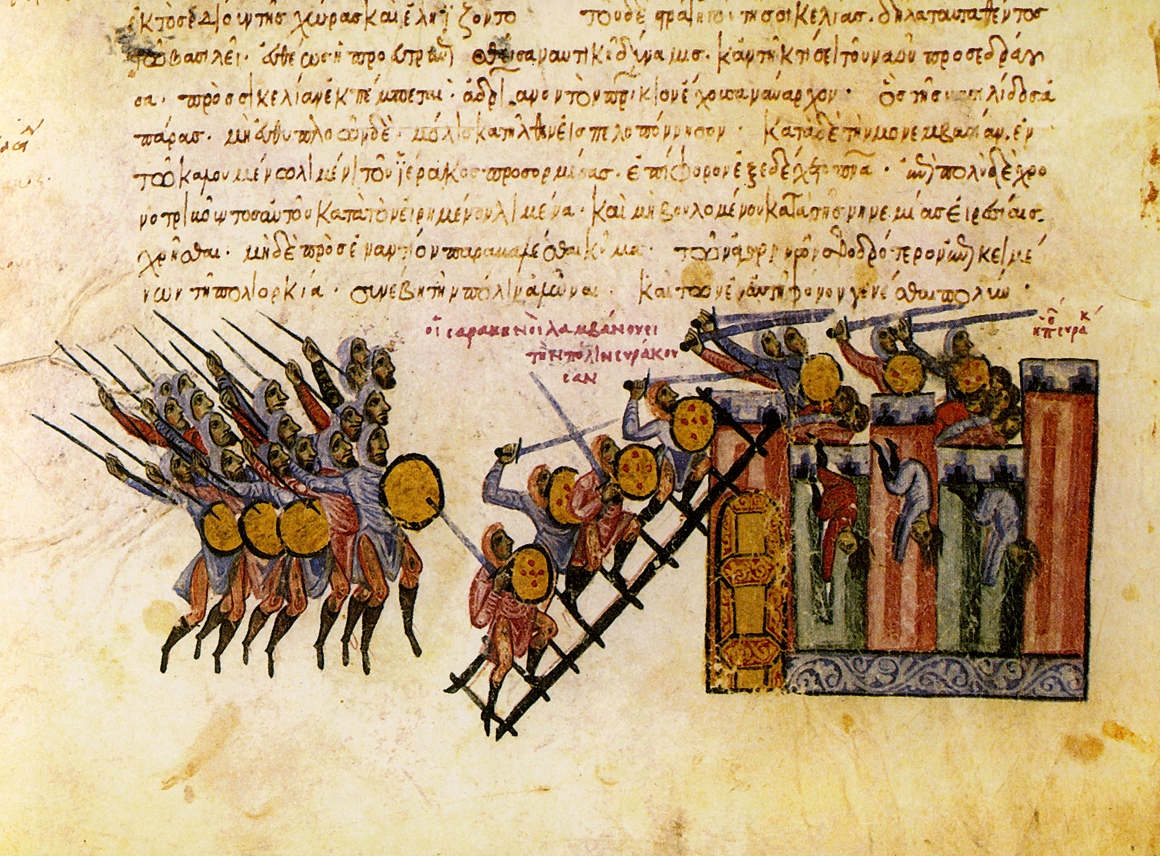

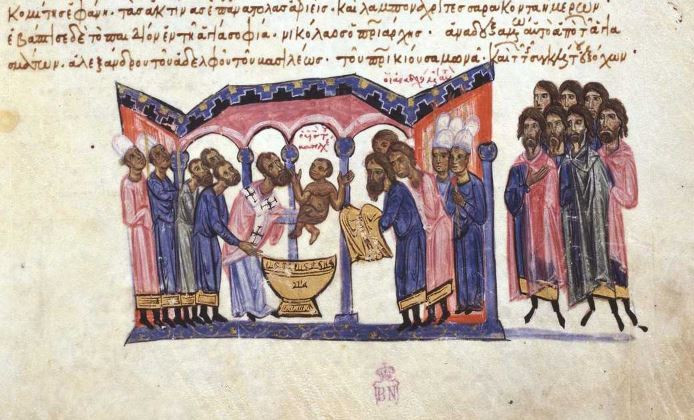

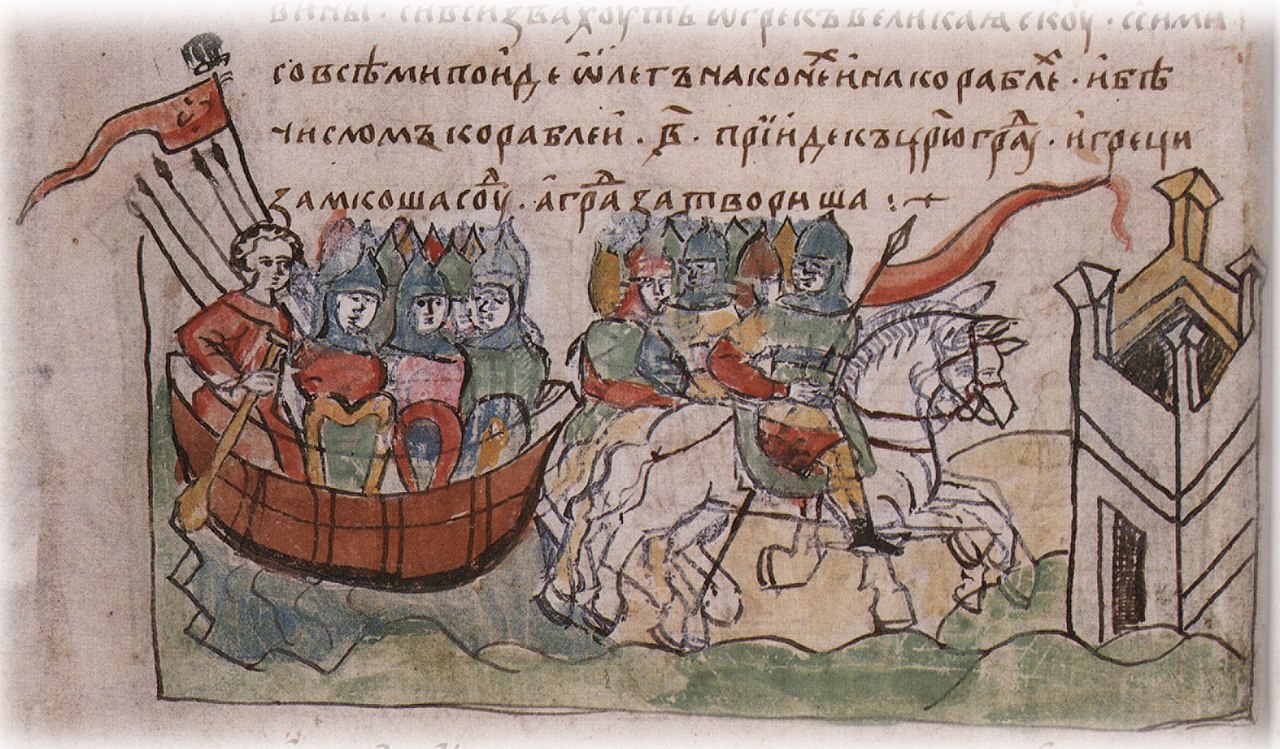
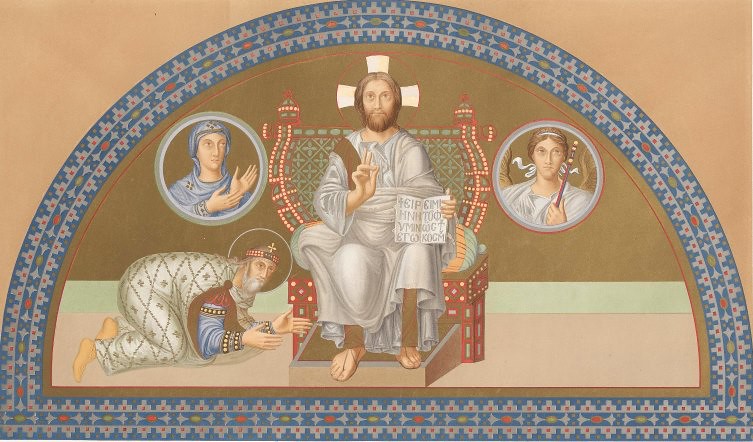
The Chaotic Regency and Romanos I Lekapenos, the “Gentle Usurper” (912-944)

On May 11 of 912 as Leo VI was on his deathbed, his half-brother and co-emperor Alexander was present, and before dying Leo told him some prophecy saying “13 months and the devil’s time”, although Alexander had no idea what it meant but true enough he succeeded Leo as senior emperor as he was already co-emperor first since 879 long before young Constantine was born. Now Alexander definitely had no parentage issues as Basil I was certainly his father as Alexander was born in 870, 3 years after Michael III’s death, and a possible reason for why Alexander hated Leo was surely because he was Basil’s legitimate son while Leo was not, thus the Macedonian Dynasty here would only consist of Basil I and Alexander whereas Leo VI and his successors who will appear afterwards were in fact from Michael III’s bloodline, the Amorians.
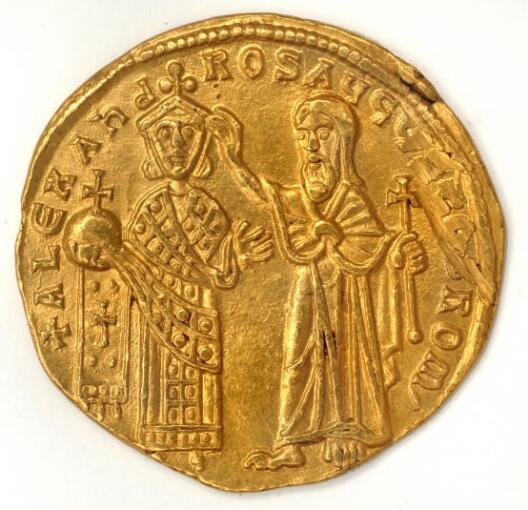
Alexander as Basil’s son resembled Basil in appearance a lot being tall and large in size with light brown hair and a beard which was opposite to Leo’s appearance and just like his father, Alexander was greatly passionate about hunting and sports though like Michael III, Alexander was a lazy drunk. This story now will go with the usual historical portrayal of Alexander as a lazy, debauched, childish, and incompetent ruler whose only purpose to rule was to get revenge on his older half-brother for no good reason except that Alexander was co-emperor for 33 years never getting the chance to be a senior emperor, and also because he was angry at Leo for removing him from his rank of co-emperor for just 2 years (904-906). Becoming emperor at 41 but already in bad health with bad teeth due to heavy drinking, Alexander thinking he would rule for long was the first emperor in the history of Byzantium to use the title of Autokrator or “self-ruling ruler” celebrating his end of 33 years only as co-emperor forgetting he actually had a co-emperor which was his 7-year-old nephew Constantine who Leo made co-emperor before his death, although Alexander here in 912 decided to castrate young Constantine to remove him from the succession but his advisors told Alexander to not do it as he had remained unmarried his entire life having not a single child, and so young Constantine was instead locked up in a nunnery with his mother Zoe Karbonopsina who Alexander hated too just for being Leo’s wife. Just a few months after coming into power, Alexander already showed how uninterested he was in ruling the empire that he only ruled to damage Leo’s legacy which was seen when he fired all the competent ministers that were loyal to Leo such as the admiral Himerios and Patriarch Euthymios, as well as discontinuing all of Leo’s policies just to get back at him. Now when it came to firing Patriarch Euthymios, Alexander restored the previous patriarch Nikolaos Mystikos who opposed Leo’s 4th marriage, and Nikolaos too was driven with revenge for being removed from his position that in the trial organized to depose Euthymios, Nikolaos hired a giant wrestler to beat up Euthymios in public while the trial was happening, and at the end Euthymios was sent into exile as Nikolaos returned to his position.
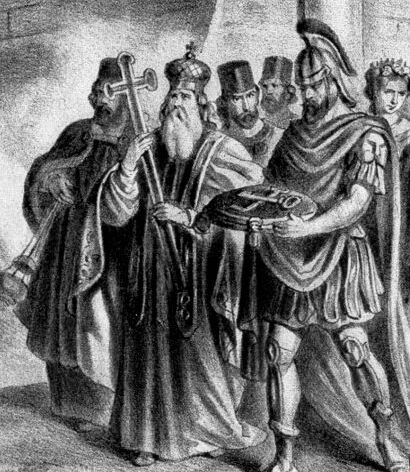
Another rumor about Alexander in his reign was that some nights he would perform Pagan sacrifices in the Hippodrome as if he was asking the old gods for fertility as apparently, he was unable to produce children. As an incompetent ruler, Alexander did not pay attention to the frontiers that the main forces of the Abbasid Caliphate from Baghdad itself attacked Asia Minor, and when Bulgarian ambassadors from Simeon came to Constantinople to collect the annual tribute Leo promised, Alexander in his usual drunken rage shouted at the Bulgarian ambassadors kicking them out of his presence and refusing to pay tribute, again as an act of discontinuing Leo’s policies out of revenge. Over in Bulgaria when their ruler Simeon heard of Alexander refusing to pay tribute, Simeon feeling so insulted resumed war with Byzantium knowing he could easily defeat them considering Alexander’s incompetence. In June of 913 while Simeon was making preparations to attack Byzantium, Alexander was enjoying himself in the Polo field or Tzykanisterion of the Imperial Palace playing a game of polo or Tzykanion after some drinks of expensive Greek wine from Lesbos, but Alexander after playing a game of polo fell off his horse when suffering a heart attack and hours later, he had died. Apparently the 13-month prophecy Leo had told Alexander was true as after ruling alone for only 13 months, Alexander had died, thus here would die the last ruler of the Macedonian bloodline of Basil whereas the rule of the Amorians would continue with Leo VI’s son Constantine VII, and it was fortunate enough for the empire that Alexander died right here as if he ruled longer, the empire may have suffered more with his incompetence.


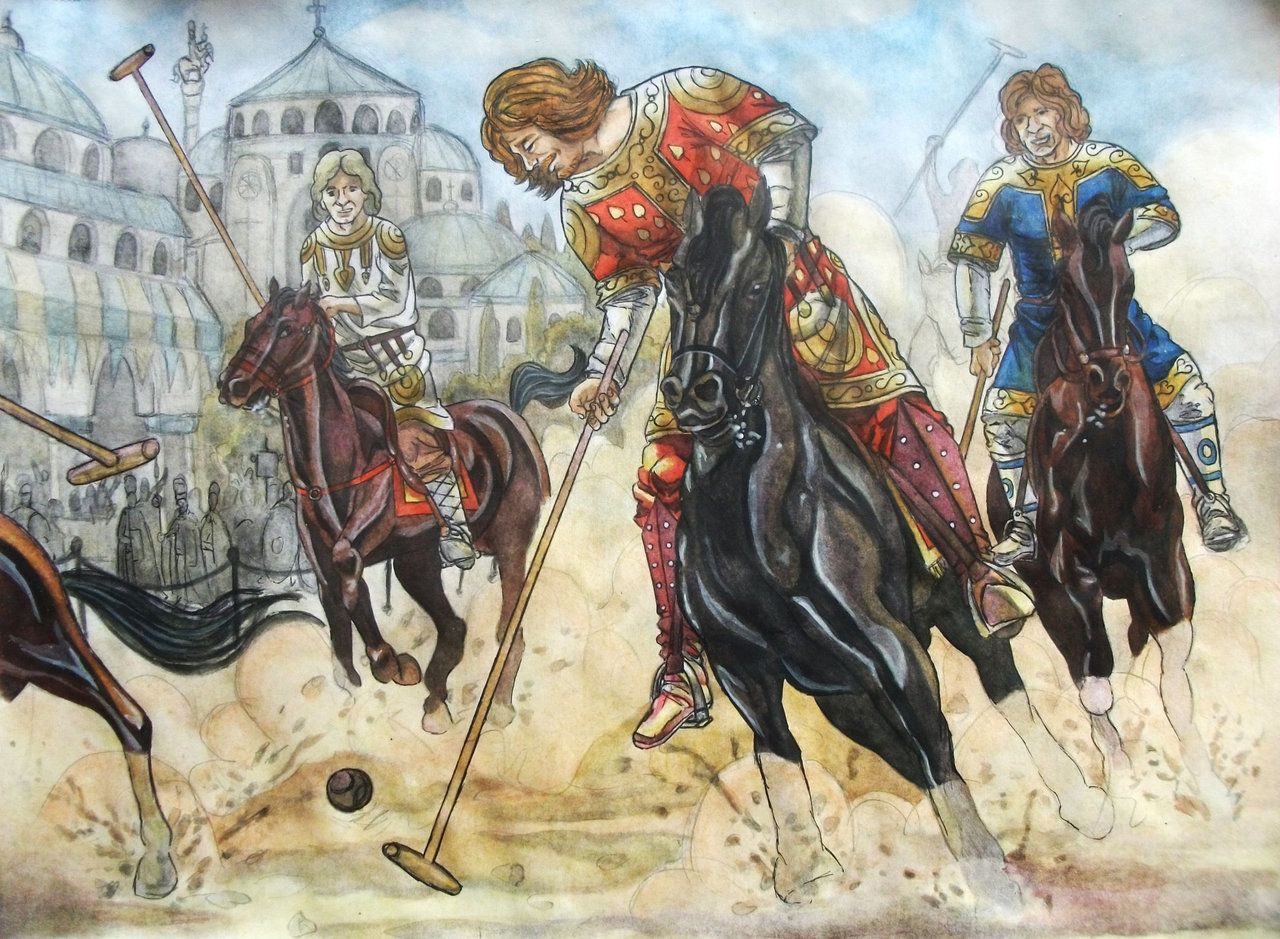
Right after Alexander’s death in June of 913, young Constantine VII Porphyrogennetos was crowned as the sole ruler of the empire as willed by Alexander, except being only 8-years-old meant that a regency council had to now rule for him led by Patriarch Nikolaos Mystikos while Constantine’s mother Zoe Karbonopsina was to stay out of it, again as willed by Alexander. The patriarch however hated the empress and did not see Constantine as a legitimate emperor as Nikolaos still did not approve of Leo and Zoe’s marriage, and in this story’s case he also did not see Constantine as legitimate because his father Leo was not a legitimate son of an emperor but an illegitimate son of a murdered emperor, therefore his successors were illegitimate and so only a few days after the council was set up, Nikolaos banished Empress Zoe back to the nunnery she was in. Patriarch Nikolaos and most of the Byzantine Senate too could not accept Constantine VII as their ruler, and so they supported a rebel general who was putting his claim on the throne refusing to accept a child as his ruler, and this general was Constantine Doukas, son of the same general Andronikos Doukas that fled to Baghdad and died there 3 years earlier. Just a few days after Constantine VII was crowned emperor, Constantine Doukas and his army who had a lot of support arrived outside the walls of Constantinople ready to storm the city but just as he arrived, the city garrison loyal to the young emperor charged at the rebel forces in open battle. Constantine Doukas seeing his side was about lose tried to escape but in the process, he slipped off his horse and fell to the ground wherein the city garrison soldiers killed him by hacking him with their swords, thus his rebellion failed, though he was not the last of the Doukas clan as they will be featured heavily in the next chapter of this series. Patriarch Nikolaos in an act of protecting himself denied that he had any part in the conspiracy of Constantine Doukas that he even had anyone he knew involved in the conspiracy executed and their bodies impaled on spikes outside Constantinople’s walls that he would gain such a brutal reputation for it.
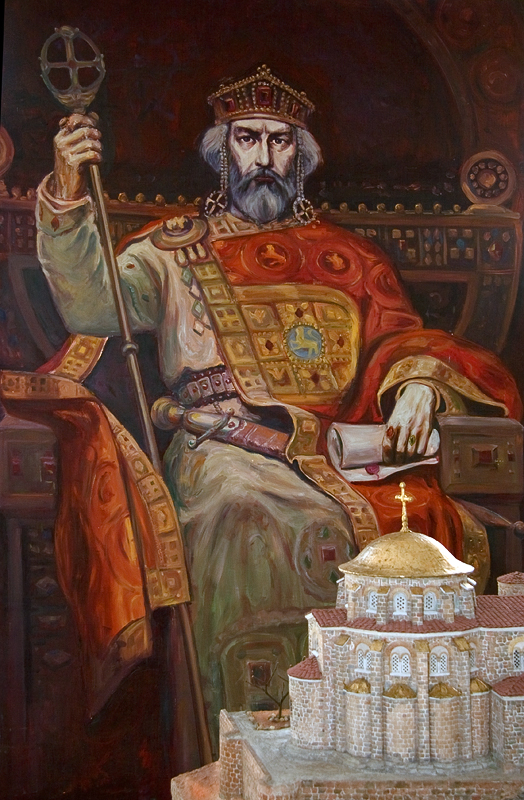
Just 2 months after the failed plot of Constantine Doukas, it was Simeon and his Bulgarian army’s turn to arrive outside the Theodosian land walls of Constantinople, but when seeing the strength of the walls, he instead decided to attack and burn the farms outside it that Patriarch Nikolaos had to come out to negotiate peace with Simeon, and here Nikolaos agreed to resume paying the annual tribute of Leo VI but also for young Constantine VII to marry one of Simeon’s daughters, although Simeon saw this as an opportunity to take over Constantine VII’s regency and rule both Byzantium and Bulgaria himself. The senate meanwhile disapproved of the patriarch’s deal with Simeon as none of them wanted a Bulgarian foreigner who they still saw as a barbarian- despite adopting Byzantine customs and religion- ruling the empire, and so Simeon packed off and left as he got his tribute anyway but most of the senate was also displeased with Nikolaos’ brutality that in 914, they returned Empress Zoe back to the regency council getting her out of the nunnery, although Nikolaos still stayed as patriarch when being threatened by Zoe to recognize her authority. In 915 when the Byzantines won a major victory over the invading Arabs in Southern Italy, Empress Zoe’s popularity grew but at the same time she also disapproved of her son Constantine marrying Simeon’s daughter as this deal was made by Patriarch Nikolaos who she hated and also because in her Byzantine arrogance, Simeon was nothing more but a filthy barbarian. Simeon hearing of the empress turning down his offer in 915 resumed war with Byzantium that Simeon’s Bulgarian forces even briefly took the city of Adrianople until Zoe’s forces quickly took it back forcing Simeon to flee, thus Zoe again became more popular. Simeon on the other hand still continued his raids by going as far south as Byzantine Thessaly and Epirus in Greece between 915 and 916, then by 917 he returned to Thrace whereas Zoe was prepared to crush his forces by amassing a massive army led by the best generals of the empire which included John Bogas, the commanding general or Strategos of the Theme of Cherson, which was the remote Byzantine colony in the Crimea north of the Black Sea; the Cappadocian brothers Leo Phokas the Elder and Bardas Phokas the Elder who were the sons of the late and great general Nikephoros Phokas the Elder who had died back in 900; and Himerios’ replacement as the grand Droungarios or admiral the Armenian Romanos Lekapenos, son of the same Armenian peasant soldier Theophylact Lekapenos who saved Basil I back in 872. Now you may ask why all the empire’s top commanders were either Armenians or Cappadocians, and this is because by being raised in these parts being in the empire’s frontiers, these people had grown up to be tough soldiers.
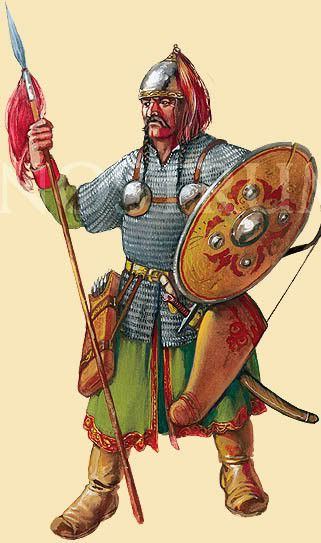
Now the plan here was that the army led by the Phokas brothers would march north from Constantinople while Romanos with his fleet was to ferry both John Bogas and his troops from Cherson as well as the Byzantines’ new Pecheneg allies from across the Danube to Thrace, but John Bogas and Romanos would end up arguing, as again as usual with Bogas being of high birth refused to take orders from Romanos who was of lower status, and Romanos would only agree to ferry Bogas and his troops if Bogas were to bow down to his authority, though Bogas refused and the Pecheneg mercenaries as usual being difficult to handle were tired of waiting and not yet receiving their pay gave up and abandoned the Byzantines. Meanwhile, only the Phokas brothers and their army were left to confront Simeon’s Bulgar forces, but while camping out near the port of Anchialos in Thrace along the Black Sea, Simeon and his forces caught them by surprise and charged right at their camp and what resulted was a total massacre as barely any Byzantine soldiers survived it while many panicked and retreated as well believing Leo Phokas to be dead when seeing his horse gallop away without him, though it was unclear on what happened to Bardas here.
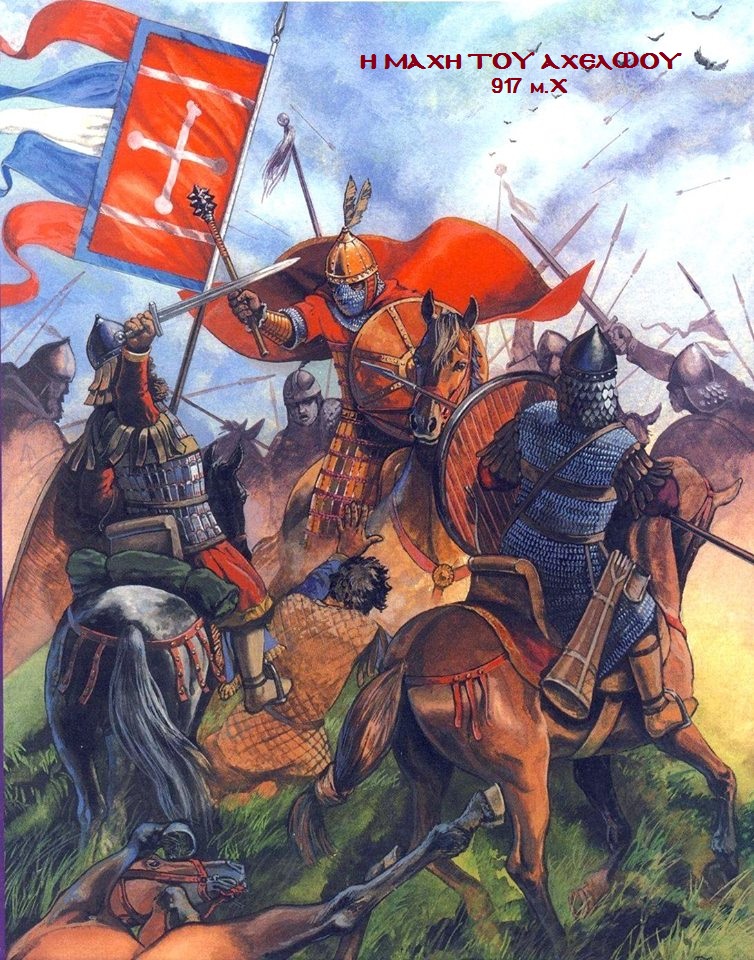
Back in Constantinople, Zoe being so enraged blamed all the failures on the admiral Romanos Lekapenos who she even threatened to blind, but Romanos’ powerful friends prevented her from doing so. Leo Phokas and his brother Bardas meanwhile survived the attack and fled to the Black Sea port of Mesembria where they took a ship back to Constantinople where Leo would meet up with Zoe who however saw no fault in Leo even if he was responsible for the massacre of his men as he was taking bath while Simeon charged at them. Instead of punishing Leo, Zoe even gave him an additional two armies to command and strike back at Simeon again but when facing Simeon’s forces again outside Constantinople, Leo was severely defeated but to protect his reputation and save her own as it had been damaged due to this defeat, Zoe decided to marry him and make him young Constantine’s regent but Constantine’s teacher Theodore disagreed to it believing this would remove Constantine from the succession, therefore Theodore wrote to Romanos to take over the regency and protect Constantine.

Zoe on the other hand asked the regency council to meet again only to find out that they all lost faith in her because of the defeat to the Bulgars at Anchialos and outside Constantinople that Patriarch Nikolaos had to return to running the regency from here on. Romanos however had turned out to have his own imperial ambitions which is why he was at odds with Leo Phokas and in 919, Romanos suddenly docked his fleet outside the Boukoleon Palace along the sea walls of Constantinople wherein he declared he was going to take over the regency while Zoe was asked to resign from it and retire for good, and here the 14-year-old Constantine VII was married to Romanos’ young daughter Helena Lekapene to secure Romanos’ claim to the throne. Leo Phokas on the other hand who was across the Bosporus put his claim on the throne as well in rebellion against Romanos claiming that he was to save Constantine VII, but before he was able to cross the Bosporus to Constantinople, Romanos sent him a letter denouncing Leo’s actions which made Leo’s men desert and as Leo tried to flee south into Asia Minor, Romanos’ men caught him and blinded him wherein he was paraded in Constantinople’s streets, though his fate afterwards is unknown. In 920 then, Romanos made a deal with Patriarch Nikolaos to keep Constantine VII in power as long as Zoe was to be banished for good, in which she did by retiring to the same nunnery she was kept in before, for good this time. Later in 920, young Constantine VII was forced to crown his father-in-law Romanos as his co-emperor and just a few months later, Romanos I Lekapenos assumed the full duty of the empire’s senior emperor, although Constantine VII was still kept in power but only in name whereas Romanos was to effectively run the empire claiming he was doing it for young Constantine’s protection.

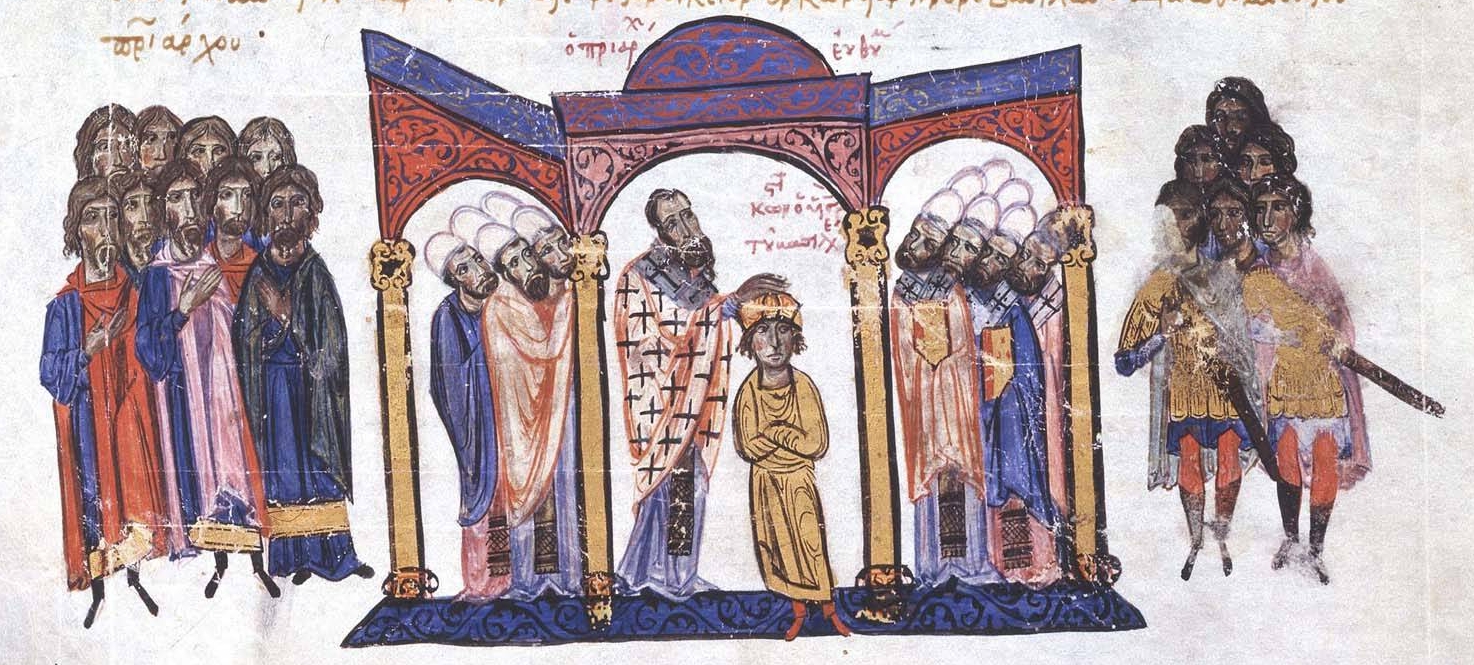

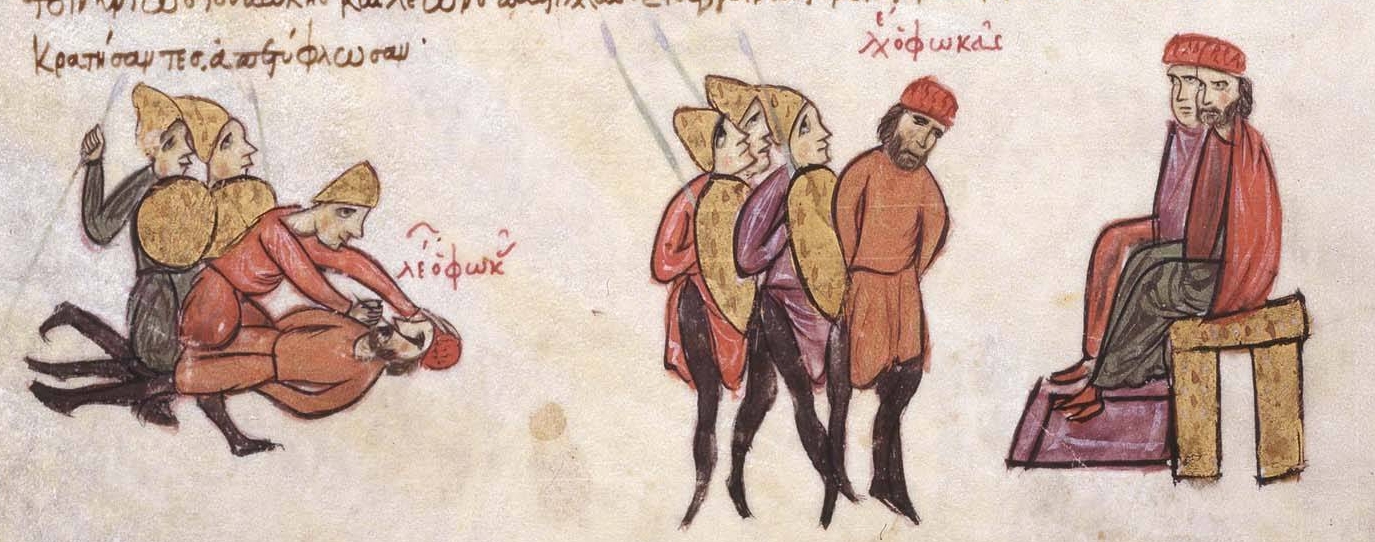
When Romanos I Lekapenos took over the imperial administration in 920 not only as a regent or protector but as emperor, it was suspected that he would one day murder young Constantine VII except that he didn’t, rather he had more subtle ways of sidelining Constantine VII and making himself the supreme authority, and this was by removing Constantine’s imperial authority even as he aged, thus it turned out the poorly educated admiral of low birth was actually an intelligent and cunning ruler. For the next years, Constantine VII would live in the shadows though still in the imperial palace keeping his title as emperor, except basically he was a political prisoner of his father-in-law Romanos I who had to keep watching his back being never really permitted to leave the palace without Romanos’ approval, but Constantine would in fact enjoy his time by not having to perform his duties as emperor but instead doing what he grew up to love most, which were scholarly interests such as reading and writing as well as painting and sculpting, basically Constantine took after his scholarly father Leo VI.

For Romanos, to make it seem like Constantine would be powerless, Romanos made his eldest son Christopher his co-emperor in 921 who was intended to be his actual successor and in 924 Romanos I made his 2 younger sons Stephen and Constantine co-emperors too, thus Constantine VII the rightful emperor became the least powerful of the 5 emperors with his name placed at the bottom of the coins issued by the 5 rulers. The threat of Simeon of Bulgaria however was still at large and not to mention at this time, the Bulgarian Empire here under Simeon was no longer the primitive warrior state of Bulgaria 2 centuries earlier that posed a threat to Byzantium, but a highly civilized major Orthodox Christian cultural and military power in its golden age the same way Byzantium was, and in terms of size, Bulgaria was the largest empire in Eastern Europe spanning west to east from the Ionian Sea to the Black Sea and north to south from the Carpathian Mountains in Central Europe to Central Greece, and its ruler Simeon was no longer like the Bulgarian khans of old but a full emperor in authority known as tsar in their language, literally meaning “Caesar” being the first Bulgarian ruler to call himself that. Simeon in 924 made another attempt to besiege Constantinople both by land and sea except this time getting himself allied forces from the Arab powers in the Middle East, Sicily, and North Africa which Simeon believed was enough to fully take over Constantinople. The Arabs however were intercepted first by Romanos before they could reach Simeon, and Romanos won them over by even agreeing to pay tribute to them, and when finding out his Arab allies never made it, Simeon was upset. Simeon however still made it to Constantinople but when arriving, Romanos chose to resolve the issue with diplomacy, and here Patriarch Nikolaos who was still alive arranged for both rulers to meet up at a dock along Constantinople’s Golden Horn harbor. When seeing Simeon up close, Romanos I did not see a Bulgarian ruler in the traditional Bulgarian fur cloaks and fur hats but an emperor dressed in the same silks as the Byzantines did, although when they met face to face, there apparently was no violent tension brewing between them, rather it ended peacefully with Romanos agreeing to resume paying tribute to Bulgaria, also handing over to Simeon 100 silk robes as a gift. Afterwards, Simeon would never return as a physical threat except that in 925 he had the audacity to call himself not only tsar but “Basileus of both Bulgars and Romans”, literally emperor of both empires, though Romanos did not take it as an insult and instead he even joked about it saying that if he can, he would call himself “Caliph of Baghdad” without the Abbasid caliph’s approval. Simeon again not physically threatening Byzantium in 926 declared the Bulgarian Church independent from Constantinople, therefore creating a separate Patriarchate of Bulgaria though no matter how powerful Simeon was as tsar, his rule was still challenged first by his western neighbors being the Serbs (from present day Serbia) who Simeon defeated in 926, but the bigger threat to Simeon was his other more powerful western neighbor which was the Kingdom of Croatia ruled by its new king Tomislav who happened to be an ally of the Byzantines.
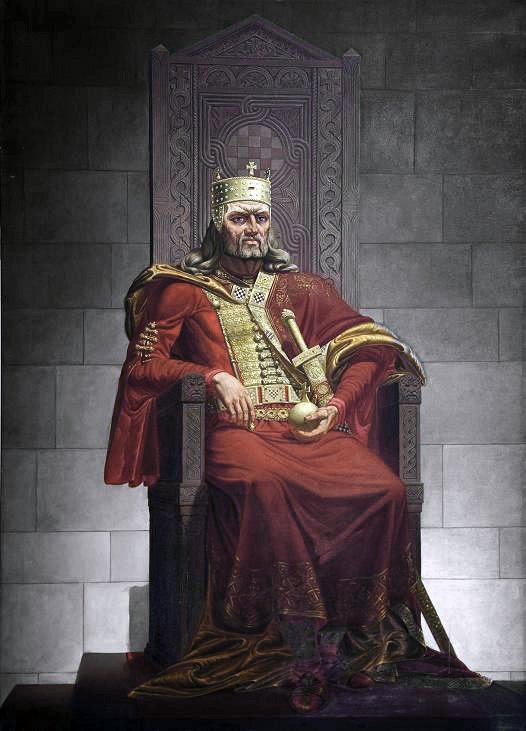
Though seemingly undefeatable, Simeon’s forces lost a severe defeat to the Croatian forces of Tomislav in 926 in what is now Bosnia, thus Bulgaria was forced to pay a heavy humiliating tribute to Croatia and in 927, the very much humiliated Simeon died from a heart attack in his palace in the new Bulgarian capital of Preslav, and would be succeeded by his son Peter I as tsar who would happen to be a much weaker and less warlike ruler compared to his father. Peter I when becoming Bulgaria’s new tsar was also still young and wanting to rule in peace, he personally went to Constantinople to negotiate with Romanos I which was successful and as part of the deal, Peter married Romanos’ young granddaughter Maria, daughter of his eldest son Christopher while the new Patriarch of Constantinople Stephen II– who had succeeded Nikolaos after his death back in 925- married them and following this, a long 42-year period of peace would last between Byzantium and Bulgaria, allowing the Byzantines to continue fighting their other deadly enemy, the Arabs.
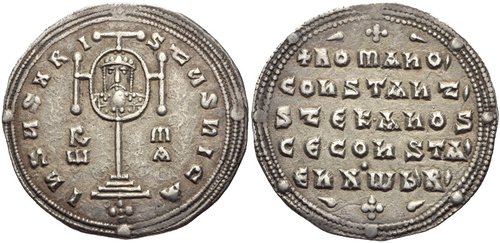


As the effective emperor, despite the rightful Constantine VII still having the title, Romanos I Lekapenos may have completely seemed to everyone as a tough military man being quite uncultured, uneducated, and rough around the edges which is what his rather intellectually and artistically snobbish son-in-law Constantine VII would say about him seeing him every day in the palace, although Constantine as I would say never felt respected by his father-in-law as Romanos felt his son-in-law was not tough enough being a an artist and scholar and not a soldier and politician the way Romanos was. However, despite Romanos’ tough exterior, he was also someone with a big heart as when a brutal winter struck Constantinople from 927-928, Romanos I spent a lot of the imperial treasury in building porticos for Constantinople’s streets so that the homeless would not die of the cold, and also he made sure the people had enough food to last the winter. Following this winter when seeing how much damage it inflicted on the people, especially the small farmers, Romanos I decided to pass a law that was to forbid the wealthy and powerful landed aristocracy or the Dynatoi to buy land from these farmers thus taking it away from them, but also for these farmers to not sell their land to their richer neighbors, though this was also part of an act to limit the landed aristocracy’s power as they produced the most troublemaking generals like the Phokas clan. In 931 on the other hand, Romanos I would suffer a great loss when his co-emperor son and intended heir Christopher died from an illness which Romanos mourned deeply most especially because there would be no one competent enough to succeed him when he dies as his other sons Stephen and Constantine despite them being co-emperors were rather good for nothing, therefore the only capable one was the rightful emperor Constantine VII, which was something Romanos could not accept.

In 933, Romanos I as usual as the master of nepotism successfully schemed to make his 16-year-old son Theophylact, named after Romanos’ father be appointed as Patriarch of Constantinople which had happened to be a total embarrassment as for one Theophylact was a child who had no knowledge in theology, spirituality, and Church politics and second, his major concern was horses and playing Byzantine Polo that in one Easter he forgot to perform his duty as patriarch in celebrating the Eucharist as he had to be in the stables to watch his favorite horse give birth. Now when it came to military matters, this was where Romanos I was most successful at, although he did not personally lead the armies himself, rather the job was left to his close friend the general John Kourkouas who was from a lesser known aristocratic family, as Romanos preferred smaller time families more thus making John the commander in chief or Domestikos ton Scholon of the eastern armies, and back in 923 it was John that finally defeated the notorious pirate Leo of Tripoli in the Aegean Sea in which Leo would afterwards disappear from the historical record and in 932, John went as far as Lake Van in the border of Byzantium and Armenia capturing the trading town of Manzikert, thus giving the empire control of trade routes into Armenia and Central Asia. John Kourkouas however would score his greatest victory in 934 when finally achieving the Byzantine dream of capturing the city of Melitene (today’s Malatya, Turkey) in Eastern Asia Minor which then had been the seat of the breakaway Arab Emirate of Melitene that was a vassal of the Abbasids in Baghdad, though what would be very significant about this capture of Melitene was that it was the first time the Byzantines conquered an entire Arab Emirate and absorb it to their empire. Following the conquest of Melitene, the Byzantines immediately resettled Greeks and Armenians in the area into it before the Arabs could take it back, but the capture of Melitene also sent great shockwaves to the Muslim world that the Emirates of Mosul and Aleppo both ruled by members of the powerful Hamdanid clan would counter-attack and challenge John Kourkouas although by 940, the Arab Hamdanid general Sayf al-Dawla better known as the “Sword of the State” and John would be recalled to their capitals but in 941, John returned to campaigning in the east but had to immediately rush back again, for he heard Constantinople was under attack once again. Now in 941, Constantinople was for the 3rd time attacked by the army and fleet of the Kievan Rus’ coming from today’s Ukraine sailing down the Black Sea with their fleet of longships, except this time the Rus’ force was much larger and deadlier with 1,000 ships and 40,000 men with their Grand Prince Igor himself leading them.
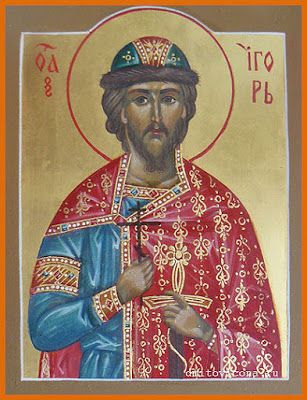
Having only 15 old ships in the capital, Romanos I patched them all up with the imperial secret superweapon of Greek Fire, and charged them all out to attack the Rus’ longships with the eunuch admiral Theophanes in command of the 15 ships, and with the Rus thinking they could easily crush these 15 ships, they were proven wrong when all 15 of them blew out the powerful liquid fire which burned a number of the Rus’ ships, and the Rus soldiers in fear of the sight of the fire jumped into the sea wherein many died from drowning due to the weight of their armor. After fleeing from the Greek Fire, the remaining Rus army escaped to the Asian shore of the Marmara where they committed great atrocities towards the Byzantine locals including crucifying them with nails hammered to their heads while as usual, the Rus nonstop pillaged the land. Soon enough hope would come for the Byzantines when their armies led by John Kourkouas and the same old Bardas Phokas the Elder, the younger brother of Leo Phokas who was blinded back in 919 rushed back to counter-attack the Rus, and at the end of the day the Byzantines were victorious as Theophanes with his navy also destroyed the rest of the fleet, thus the remaining Rus including their prince Igor returned home to Kiev. Now this major conflict between the Rus and Byzantines in 941 is where the graphic novel Theophano opened with the same admiral Theophanes defending Constantinople from the Rus, except here in this story the family of Theophano from Laconia in Greece would not come to Constantinople, thus the story returns to John Kourkouas who would resume his campaigns against the Arabs in the east where in 942 he would attack Aleppo in Syria, the seat of the Arab Emirate though would not be able to conquer it, but John would later on achieve what no Byzantine armies did for the past 3 centuries since all of Byzantine Syria and Mesopotamia was lost to the first wave of Arab invasions in the 630s during the reign of Heraclius (610-641), if you remember from chapter IV of this series. John here would go as far as capturing the important fortress of Dara, the same military fort both Byzantines and Sassanid Persians fought over countless times back in the old days almost 400 years earlier. Though while John Kourkouas seemed to be scoring a lot of victories in the east, Romanos I’s time as emperor was nearing its end, thus he was growing more depressed as the days went by.
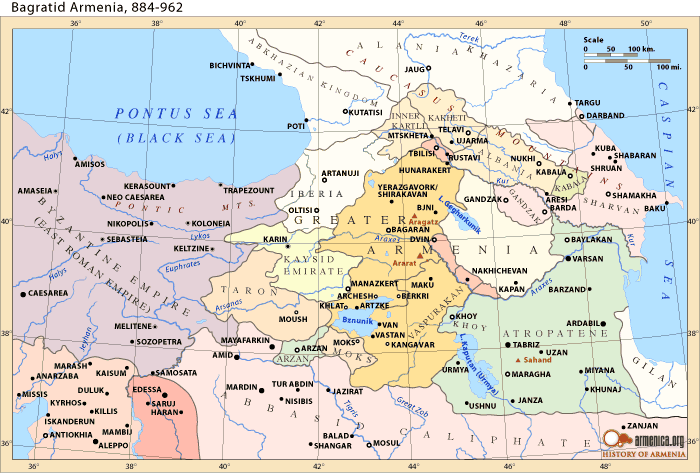
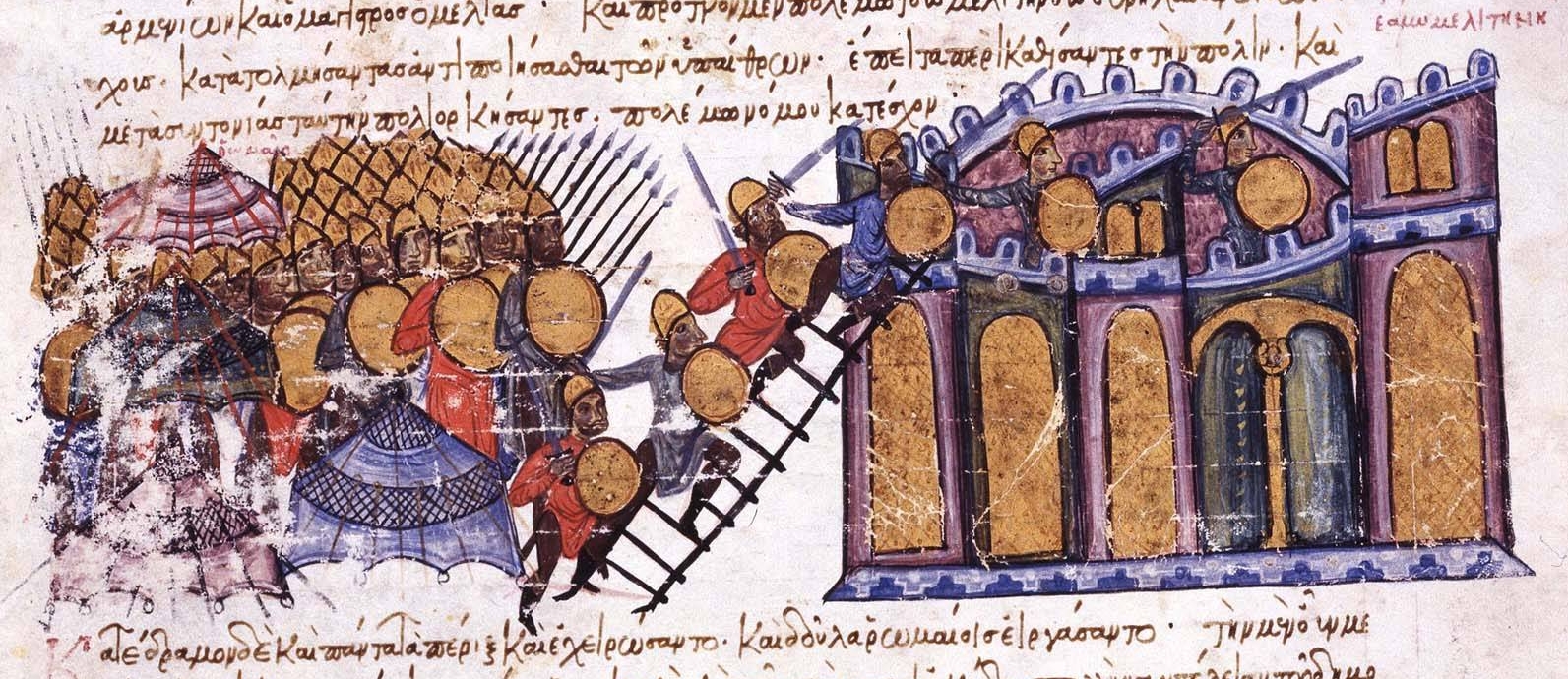


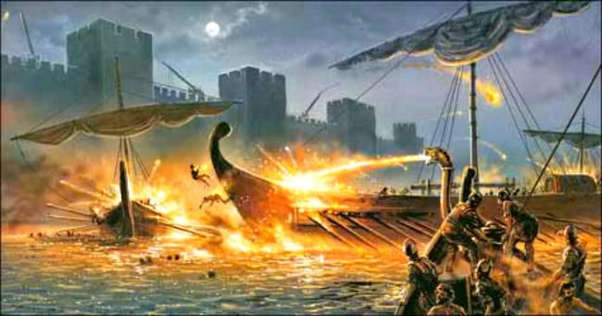
Part II.
Constantine VII Porphyrogennetos, an Intellectual Snob but Surprisingly Skilled Emperor (944-959)

For more than 20 years, the rightful emperor Constantine VII Porphyrogennetos had been in the shadows, although this whole time he had been busy with intellectual pursuits all while having a rather happy marriage to Romanos I’s daughter Helena who being her father’s only daughter when all his other children were sons did not have a lot in common with her father and brothers’ more manly interests, but rather like her husband, she also enjoyed the more sophisticated things.
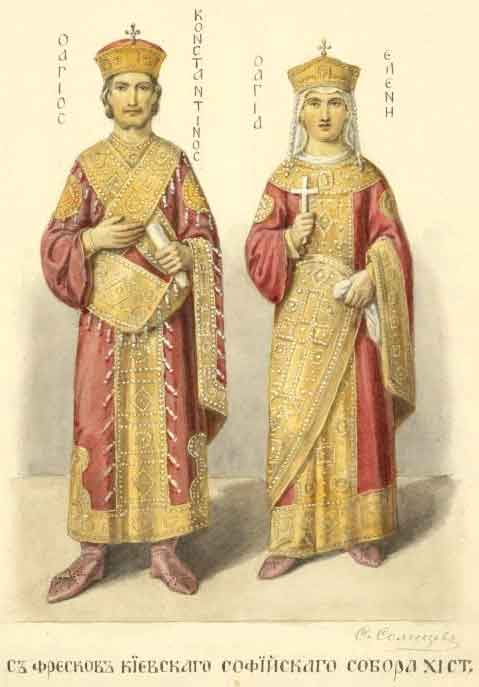
Helena had turned to out to be the empire’s senior empress as well despite her only being the senior emperor’s daughter as this was due to the fact that her mother had already died a long time ago just 2 years after her father became emperor (922), and being the most powerful woman in the family as her father’s only daughter, she became the highest-ranking woman in the empire. Helena’s marriage to Constantine VII was indeed a very successful one that they were able to produce 6 children and unlike her father who had 5 sons and only one daughter, Helena with Constantine had 5 daughters and only one son named Romanos born in 938 as a Porphyrogennetos in the purple room too and named after his maternal grandfather the reigning emperor Romanos I, and surprisingly Romanos was born with a twin sister named Zoe after her grandmother, Constantine VII’s mother Empress Zoe Karbonopsina who had died as a nun a long time ago. Now back to Romanos I, by the 940s he had grown increasingly depressed especially since his son and intended heir Christopher died despite it happening 10 years earlier and in his depression, Romanos I became most concerned with what we would all be worried about when reaching old age, which is about death and the afterlife and Romanos here was deeply bothered about it especially about the salvation of his soul and like Basil I mentioned earlier on as he was in his final years, Romanos I felt the same way in feeling he had been punished by God for what he did in the past, which was taking over power from the rightful emperor. In 944 the Rus’ prince Igor I returned once again with his fleet except this time in the mouth of Danube River to the Black Sea threatening to have war with the Byzantines again, but Romanos this time was able to turn them away through diplomacy by sending them gifts. Back in the east, the general John Kourkouas continued his successful campaigns deep into Northern Mesopotamia, although he was still unable to capture the city of Edessa in 942, but instead the Arab authorities gave John a very important relic which had been in the city of Edessa’s possession since the 1st century AD and this was the Holy Mandylion which was a piece of cloth believed to have been used by Jesus Christ himself to wipe his face, therefore leaving an imprint of his features, and this was a relic of high value that the Byzantines always wanted to acquire.

In 944, the Mandylion was sent over to Constantinople wherein a grand ceremony was held to enshrine it in the Hagia Sophia, though Romanos I was too ill and depressed to attend it so instead his sons and co-emperors Stephen and Constantine attended it and so did his son-in-law Constantine VII but when the ceremony happened, the brothers Stephen and Constantine could not see the face on the cloth but Constantine VII did, therefore he gained a vast amount of public support as everyone believed that by being able to see Christ’s face, he was destined to take back the throne. Romanos I later on true enough announced that his time was almost near as he was already 74, therefore he named his son-in-law Constantine VII his successor as senior emperor and not his sons Stephen and Constantine, but when these two sons heard of this, they were greatly enraged and so in December of 944 to save their positions, both sons launched a coup against their father in which they broke into his bedroom while he was sleeping and here, both sons put him under arrest, dragged him to a boat, and sent him away to the Princes’ Islands in the Marmara to be a monk in a monastery there. For the next 2 or 3 weeks, both brothers Stephen and Constantine were basically in charge of the empire, and now they turned to arrest their brother-in-law Constantine VII but failed as Constantine VII already had great public support and so being convinced by his wife Helena, Constantine VII in January of 945 struck back and arrested his brothers-in-law. The people of Constantinople meanwhile started hearing some rumors that Constantine VII had been killed by the brothers until Constantine VII himself came out to greet them saying he was all alive and well and that the brothers had been banished to no other than the monastery where they sent their father to. Both Stephen and Constantine Lekapenos ended up becoming monks too joining their father in monastery arrest and while Romanos I spent his last years thinking about his soul, his sons were still thinking of ways to return to power, but at the end they never would, and Constantine VII now at 39 finally got his chance to rule alone after 32 years of being in the shadows despite keeping his title.
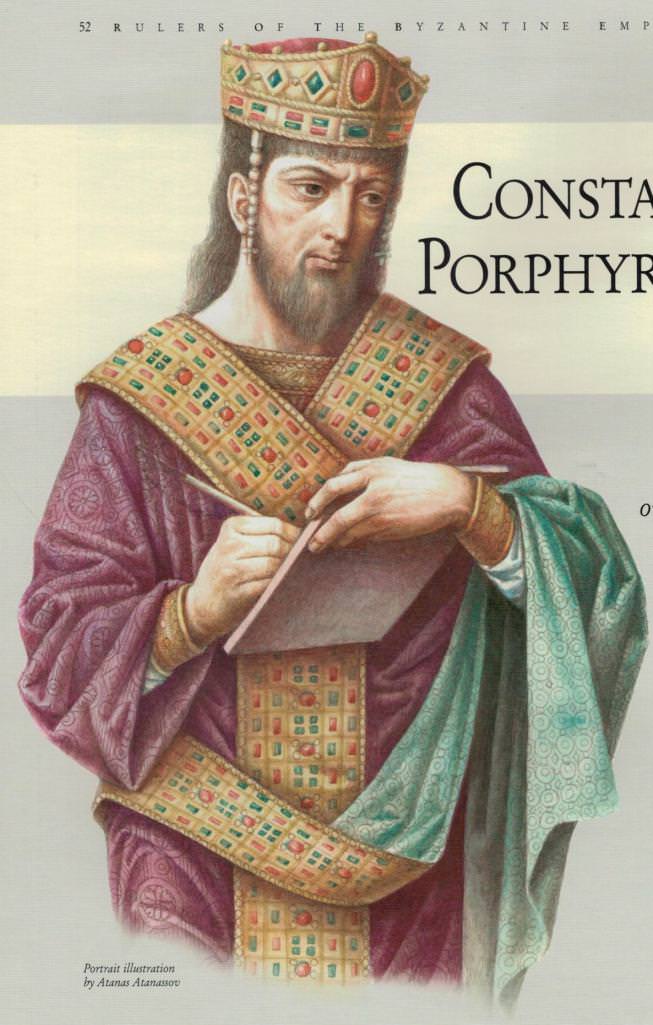
At 39, Constantine VII was tall but stocky with a long black beard and brown hair, though quite overweight as for the past 32 years he barely left the palace and instead remained in his study reading and writing as well as drawing and painting, and in those years he had been kept away, he became most interested in court ceremonies and now as the sole emperor, he put a lot of attention into it as a way to make it seem like he was all-powerful to make up for all those years where he seemed powerless. Not surprisingly, Constantine VII held a strong grudge against his in-laws, the Lekapenos family especially towards his father-in-law Romanos I and his brothers-in-law seeing them as nothing more but uncultured and improper people, or basically just trash despite being married to one, except that Helena as I said was nothing like her father and older brothers, although there were also some members of the Lekapenos family that Constantine VII still trusted as they were much like him in personality and interests and these were Helena’s younger brother the patriarch Theophylact Lekapenos who was still patriarch and Basil Lekapenos, the youngest though illegitimate son of Romanos I born in 925 who now as an adult was castrated and turned into a eunuch by Constantine VII’s orders as a way to make Basil unquestionably loyal and unable to usurp power as he was to be Constantine VII’s personal chamberlain and bodyguard.

As usual of emperors coming to power in this period in Byzantine history, Constantine VII began his sole rule by firing all those loyal to Romanos I including the highly successful general John Kourkouas who in 945 was dismissed from command as Constantine feared he would one day take the throne in the name of his friend Romanos I, and in return Constantine VII replaced all of Romanos I’s loyalists with people loyal to him such as the same old Bardas Phokas the Elder who in 945 replaced John Kourkouas as the supreme commander of the eastern armies and serving him would be his sons Nikephoros Phokas the Younger and Leo Phokas the Younger as well as their 30-year-old nephew John Kourkouas Tzimiskes, who was the son of their older sister and a grand-nephew of the same John Kourkouas who had been fired; and now this Nikephoros Phokas mentioned here who was named after his grandfather Nikephoros Phokas the Elder that was mentioned earlier, would be the more famous Nikephoros Phokas. The other loyal officials Constantine VII had appointed to run the government on the other hand were mostly eunuchs which included of course Basil Lekapenos but also other highly capable eunuch administrators like Joseph Bringas and Constantine Gongyles. Romanos I meanwhile had not died yet and in 947, his son Theophylact who was still patriarch here together with the eunuch admiral Theophanes who was still in command plotted to restore Romanos to the throne, but the plot was quickly uncovered by Constantine VII who when hearing about it dismissed Theophanes from command for good, while Theophylact on the other hand was still kept as patriarch as he was entirely useless being nothing more but literally a clown who even performed theatrical acts when performing the liturgy which was very scandalous, and as mentioned earlier he was lacking in brains and cared more about horses than his religious duties. Romanos I on the other hand did not live long enough and in 948 he died as a monk in the monastery he was sent to at age 78.
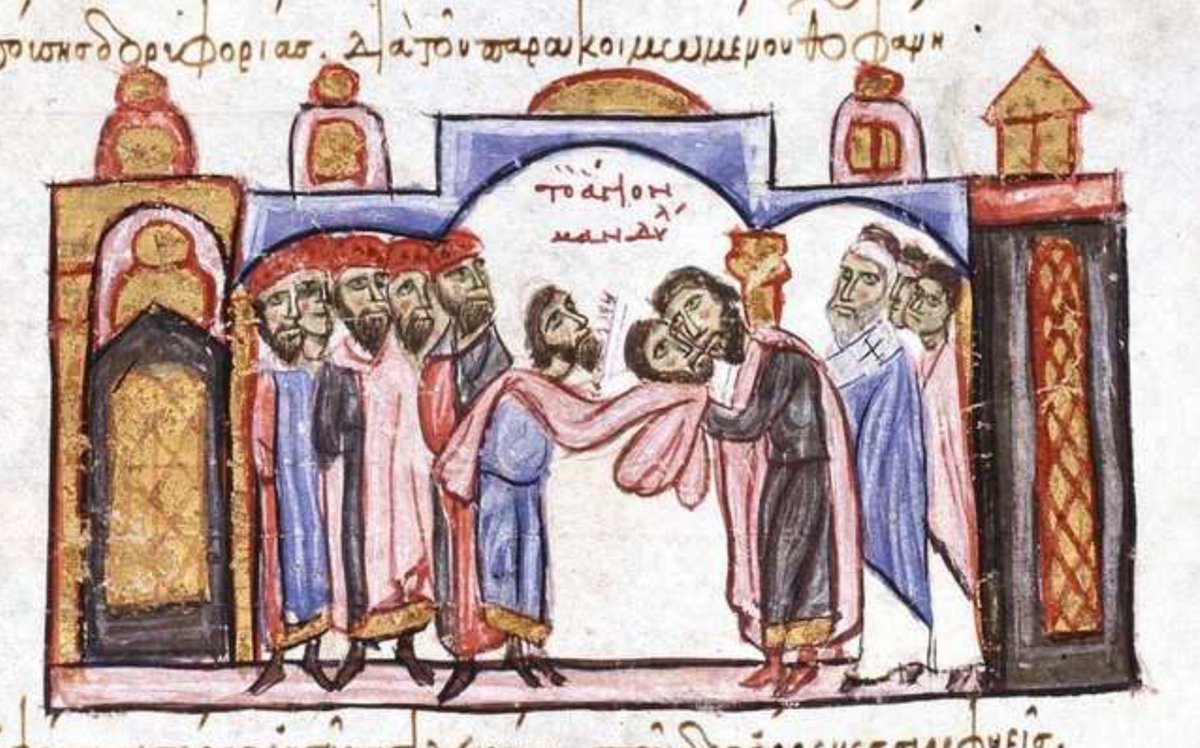
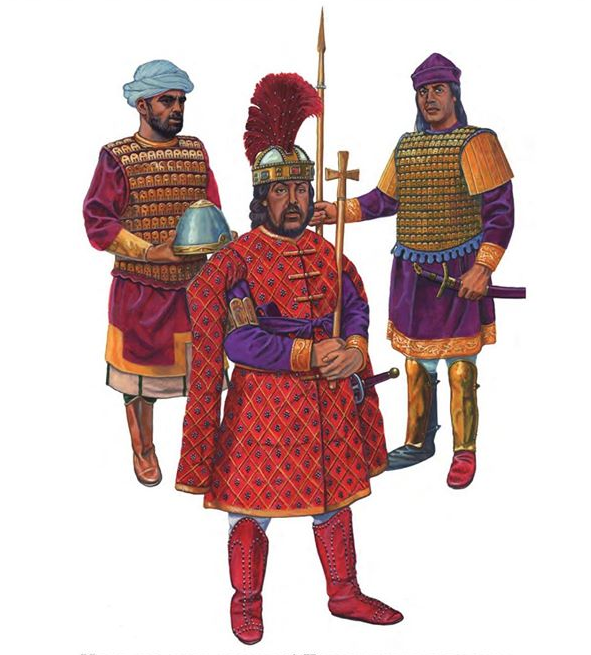

Constantine VII as emperor could have been a really disastrous ruler as when the empire was still being pressured by Arab forces in the east as well as in the seas by the Arab pirates of Crete and Cilicia while the administration at the same time was being dominated by corrupt eunuchs, Constantine VII had been preoccupied with his scholarly works which is how historians like John Skylitzes (1040-1101) portray him as, but at the same time this was not true of him as Constantine VII cared deeply about the administration, invested heavily on the army, dutifully read all documents given to him, and investigated all cases of injustices against the poor which is how historical records like Theophanes Continuatus portray him as, which is in fact the more reliable source.
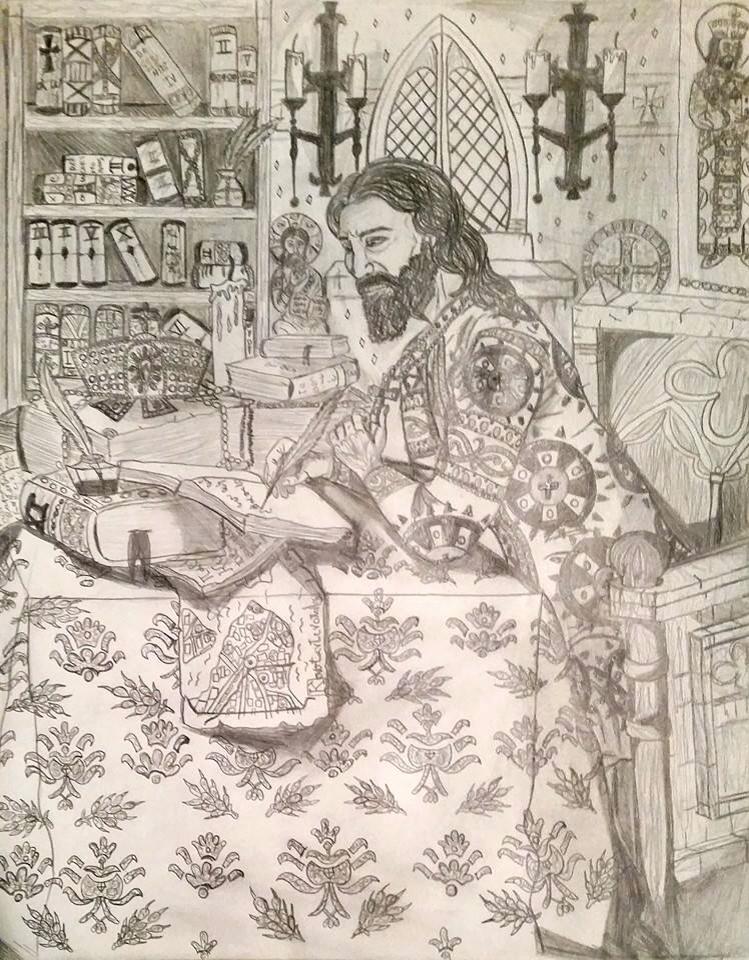
What is more true about Constantine VII was that he was simply the personification of this era, the Byzantine Renaissance as out of all the emperors of this time, he was the one who put the most attention into funding and promoting art, culture, and literacy as well as court ceremonies, and true enough his own intellectual pursuits in writing books and compiling other works would totally show he was this era’s embodiment in cultural terms whereas Romanos I before him was somewhat the embodiment of this era’s military resurgence. Constantine VII now may have excelled in artistic and literary matters, but in military matters he was not as you will see, which makes him very much like his father Leo VI and just like his father, Constantine VII in 949 made another attempt to reconquer all of Crete from the Arab Emirate of pirates there, and here he planned a larger scale invasion even allying himself with Otto I, the King of the Frankish Empire’s successor Kingdom of East Frankia better known as Germany and the Emirate of Cordoba or Al-Andalus in Spain which were after all the mortal enemies of the Emirate of Crete as these pirates in Crete were after all exiles that tried to overthrow the ruling authority of Cordoba but failed and instead turned to piracy. The proposed military alliance with Otto I’s Germany and the Emirate of Cordoba however never came to happen as both rulers had their own problems, so at the end it was only Constantine VII’s Byzantine forces under the eunuch Constantine Gongyles that were left alone to retake Crete and like Leo VI’s attempted reconquest of 911-912, this expedition in 949 was a disaster and failure not only because of Gongyles’ inexperience in military command that the Byzantine forces were massacred by the Arabs while they were sleeping, but because the island of Crete had a rough terrain that made it difficult to conquer, but either way the expedition was abandoned and Gongyles after barely escaping with his life retired from imperial service for good. Constantine VII on the other hand would not see this failed expedition of 949 to reconquer Crete as a great loss, rather he would still continue to do what he loved most which was writing books that by 950 he had already written and published 3 major literary works by himself and as a highly learned scholar, he was fluent in both Latin and Greek. Now before his reign as sole emperor in 945, Constantine VII already completed and published a biography on Basil I (Vita Basilii in Latin), which I have mentioned earlier many times and believing Basil I was his grandfather who he greatly idolized, Constantine VII portrays him as a heroic figure and defender of the poor from corrupt eunuchs that demanded tax from them while Michael III who Basil killed was portrayed as the embodiment of all that is evil and corrupt, therefore Basil’s usurping of power was seen as necessary. Little did Constantine know on the other hand that Basil who he idolized so much was actually not his grandfather and that the evil Michael III he writes about was actually his grandfather and this was mainly because Constantine was too young to remember his father Leo being alive, but if Leo lived longer, Constantine would have known the whole truth- in this story’s case- that Michael was indeed his grandfather. However, much like his actual grandfather Michael III who he labelled as “the Drunkard”, Constantine VII was also a heavy drinker and heavy eater although he was still very respectful to others, took matters seriously, and was on time in attending court ceremonies unlike Michael III who was mostly neglectful.
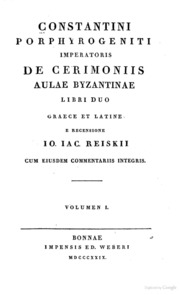
The other work Constantine VII wrote and published included a complete encyclopedia of the Byzantine court rituals and protocols which he was so obsessed with known as De Ceremoniis in Latin which discusses in great detail the proper behavior for court ceremonies, coronations, baptisms, weddings, funerals, etc. and also about the proper attire to wear for such events, and even about how to behave in church and in feasts, and this would be a very valuable source on Byzantine court rituals which would serve as a manual for all Byzantine emperors after him, and for us today as our greatest source for information on Byzantine court life. Constantine’s other literary work De Thematibus meanwhile would be a very valuable guide to the geography and history of all of the Byzantine Empire’s provinces or Themes, and this is believed to be the only work composed and compiled by Constantine himself as the rest were just commissioned by him, although for this story’s case Constantine did in fact write all of these himself. The most important work of Constantine VII however is the De Administrando Imperio (DAI) which was literally a guide book to running the very complicated Byzantine Empire with all its politics, while at the same time it was a diplomatic guide to all of Byzantium’s foreign neighbors such as the Arabs, Franks, Magyars, Serbs, Bulgarians, Pechenegs, and a lot more based on reports by imperial diplomats and in 952, this guide to the empire and beyond was published and presented to Constantine’s son and heir Romanos who was now co-emperor.
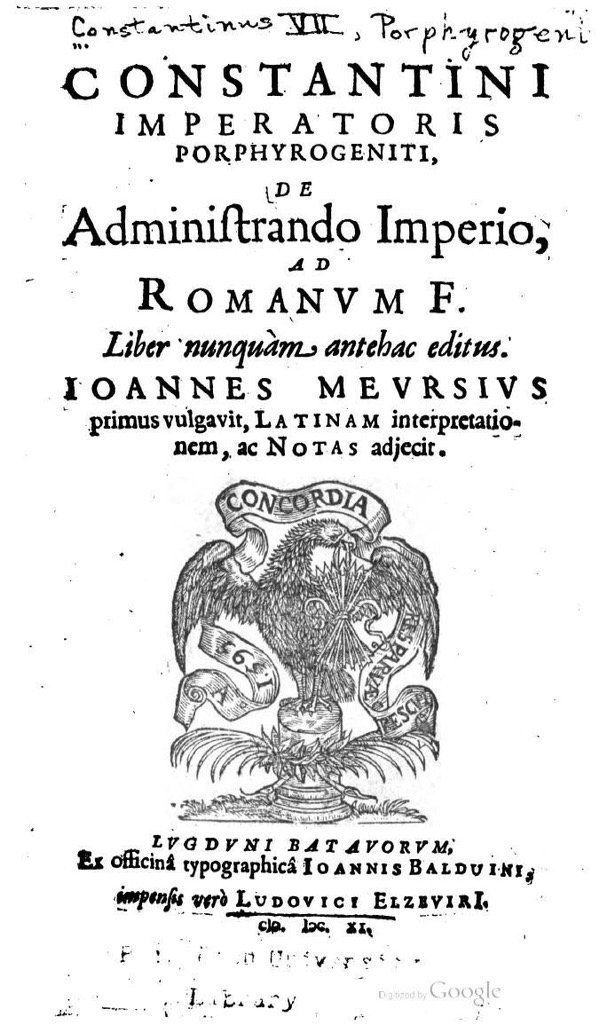
The DAI now was made to advise young Romanos and his successors after him on how to run the empire properly, and part of the advice in this book was that Greek Fire was to be kept as a deep state secret as it had saved Byzantium countless times, and also that Byzantine imperial princes were discouraged from marrying any princesses from foreign powers unless they were from the Franks as this was part of Constantine VII maintaining friendly relations with the rising Frankish king Otto I. As part of Constantine VII’s foreign policy in impressing the Franks was that one time possibly in 949 when the bishop of Cremona in Italy Liutprand came to Constantinople being sent by Otto I, Constantine VII greatly impressed him with the grandeur of the imperial court as here Liutprand said he was greatly impressed seeing Constantine VII on his throne being lifted up by a mechanism that elevated the throne itself while the bronze lions that flanked the throne both roared like a real lion would and beside it, the golden birds in the artificial golden tree beside the throne sang. Now Constantine VII here patterned his throne after the description of King Solomon‘s throne room according to Ancient Jewish legends, and Constantine true enough did a pretty good job, but the big mystery here is how the lion and bird sounds were actually recorded.

Back in the eastern frontier, things were doing well for the Byzantine armies under the supreme commander of the eastern forces Bardas Phokas the Elder but in 953 when battling the forces of the same Sayf al-Dawla who battled John Kourkouas earlier who now was the Emir of Aleppo since 945, Bardas who was now an old man was severely injured in battle while at the end of the day, Sayf’s Arab forces won and even retook the city of Germanikeia in Syria from the Byzantines. Following his injury and being too old to fight anyway being already in his 70s, Bardas retired from command in 955 and would be succeeded as the supreme commander or Domestikos of the eastern forces by his older son Nikephoros Phokas the Younger who was prior to that the Strategos of the Anatolic Theme, and Nikephoros now was a far more capable and ruthless general compared to his father who spent his entire life together with his younger brother Leo learning the art of war.

Nikephoros meanwhile was born in 912 in Cappadocia, the same year Leo VI died, and being part of the wealthy and powerful military clan of Phokas (plural: Phokades), he was destined to have a military career, and Nikephoros would true enough be no exception to this as he trained all his life to be a soldier, but what made him stand out was his purpose which was not only to fight for the empire or for territory and wealth but to defend the Orthodox Christian faith, and this is why throughout his entire military life, Nikephoros had an intense hatred towards Islam which makes him somewhat of a holy warrior or “proto-Crusader” as the actual Crusades would happen long after his time. All these years in military service made Nikephoros into a bloody killer especially towards Byzantium’s Muslim enemies that they would all fear his presence, but at the same time he was also a very disciplined holy man that lived life like an ascetic monk even being vegetarian in diet, and before every battle he would gather up his soldiers for prayer, therefore making him what would be a holy warrior, while his brother Leo who was 3 years younger than him would very much just follow his older brother’s example except that Leo was married.
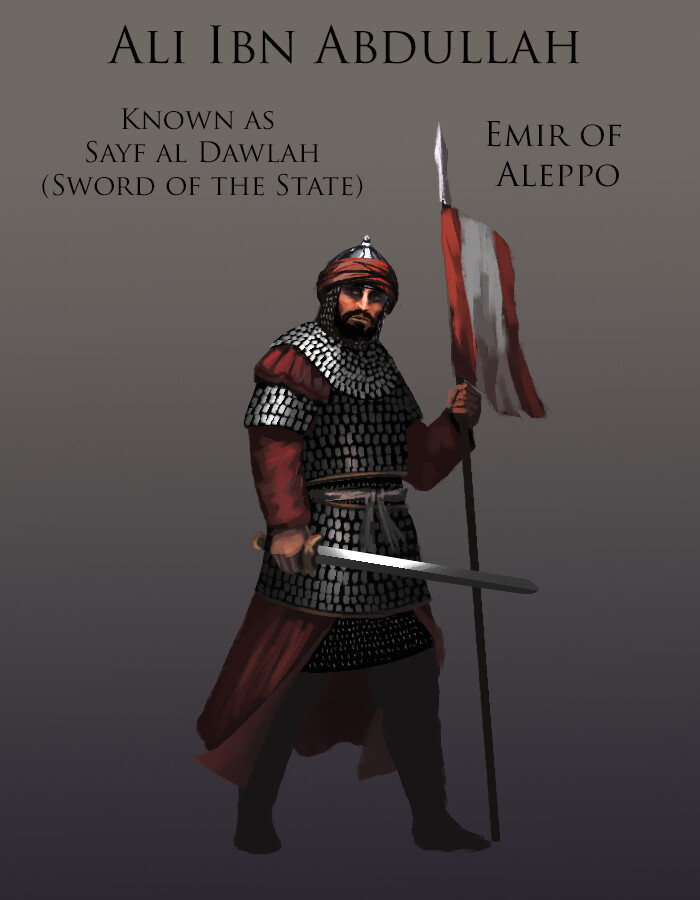
As Nikephoros was the top commander in the east, he made his younger brother Leo and nephew John Tzimiskes his subordinate generals, and while Nikephoros and Leo based themselves in the eastern border with the Arabs in Cilicia and Syria, John was assigned up north in the Armenian border defending it against the Arabs, though in 956 when Sayf’s Arab forces struck John’s army, John being still young and not so experienced yet was defeated and therefore had to flee but later that year, Nikephoros and Leo struck back and won a victory over Sayf’s forces and in 957, Nikephoros would campaign deeper east into Syria and capture the city of Hadath while John on the other hand in 958 would manage to actually succeed not only in crushing Arab forces in battle, but by actually recovering the city of Samosata in Mesopotamia from the Arabs while at the same time off the coast of Cilicia, an Arab fleet was destroyed by the Byzantines’ Greek Fire. It was also at around this time in real history when Theophano would come into the picture marrying Constantine VII’s son Romanos as was seen in the graphic novel, but in this story’s case it would not happen. In real history, Romanos as a child was married to Bertha, the daughter of the Frankish king of Italy Hugh (r. 926-947), although Bertha died soon after and so in around 957 with Romanos now grown up, he was free to choose his new wife and rather than choosing a powerful foreign princess or a daughter of a noble Byzantine family, he chose the young daughter of an innkeeper from the region of Laconia (the Peloponnese) in Southern Greece named Anastaso who despite being of low status was famous for her beauty and when hearing rumors about her, Romanos had her sent to Constantinople where she was renamed Theophano after marrying Romanos, although other sources say Theophano actually came from a noble family but of little importance, while her origins as an innkeeper’s daughter was just made to malign her.
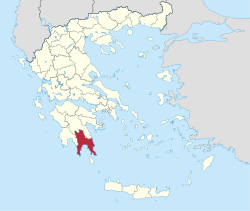
For this story however, let’s just say Romanos never heard of these rumors about this young woman in Greece, therefore Anastaso would not become Theophano but rather would live a simple life as an innkeeper’s daughter in Laconia, never to be heard from again, therefore this would be the story’s greatest plot-twist. Other significant events that happened later on in the 950s with Byzantium under Constantine VII was that in 956 the mostly irresponsible patriarch Theophylact Lekapenos died from ironically falling off his horse as for his whole life he was dedicated to horses and following his sudden death at 39, he was replaced as Patriarch of Constantinople by Polyeuctus, a man who began out as a simple monk and when becoming patriarch he was the complete opposite of the fun-loving Theophylact as Polyeuctus was a serious scholar and a man of strict morals, except he was also very rude and arrogant as he would constantly challenge the emperor Constantine VII’s authority especially since he was the son of a controversial 4th marriage that Polyeuctus being strictly Orthodox never agreed to it, but also in knowledge of philosophy and religion knowing the emperor knew them well which is where Polyeuctus challenged him a lot in, while Constantine was not happy being challenged by the disrespectful patriarch, except that he did not show it.
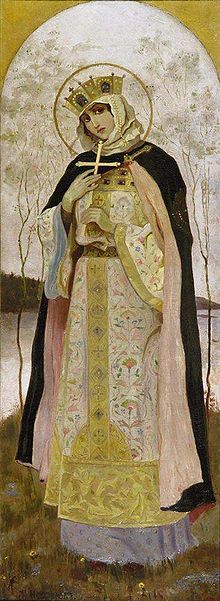
In 957, the ruling princess of the Kieven Rus’ state Olga, wife of their former ruler Igor I who attacked Constantinople back in 941 but died in 945 came over to Constantinople though not to attack but to be baptized as a Christian by Patriarch Polyeuctus, thus would mark the beginning of the Christianization of the Rus’ state who like Bulgaria before also chose to adopt Orthodox Christianity. In Constantinople, Olga was seen as an exotic beauty with blonde hair, blue eyes, and pale skin and because of her beauty, the emperor Constantine even briefly fell in love with her, but Olga prevented him from doing so by making Constantine her godfather at her baptism as a godfather and goddaughter could not be in a relationship and before returning north to Kiev, Olga as a Christian now took the name of Helena after the empress. Constantine VII on the other hand did not have much longer to live and in November of 959, right when was about to plan another campaign to reconquer Crete from the Arabs, he died in his bed at only 54 under mysterious circumstances that it was rumored that his daughter-in-law Theophano poisoned him thus giving her a bad reputation, however in this story with Theophano never coming into the picture, Constantine VII would still die here in 959 as it was surely most possible that he did not die from poisoning but rather from heart failure as Constantine was already unhealthy due to being overweight spending most of his life in his study and throne room barely moving while also eating and drinking very heavily, and at only 54 he already looked like he was in his late 60s after living a life of stress especially back when Romanos I was his protector who at any time could decide whether Constantine was to live or die. In real history, Constantine in 959 died at least having one grandson which was Basil, the son of Romanos and Theophano but here without Theophano around, Constantine would still die ruling the empire very competently leaving the empire with its cultural Renaissance and military might at a full swing.
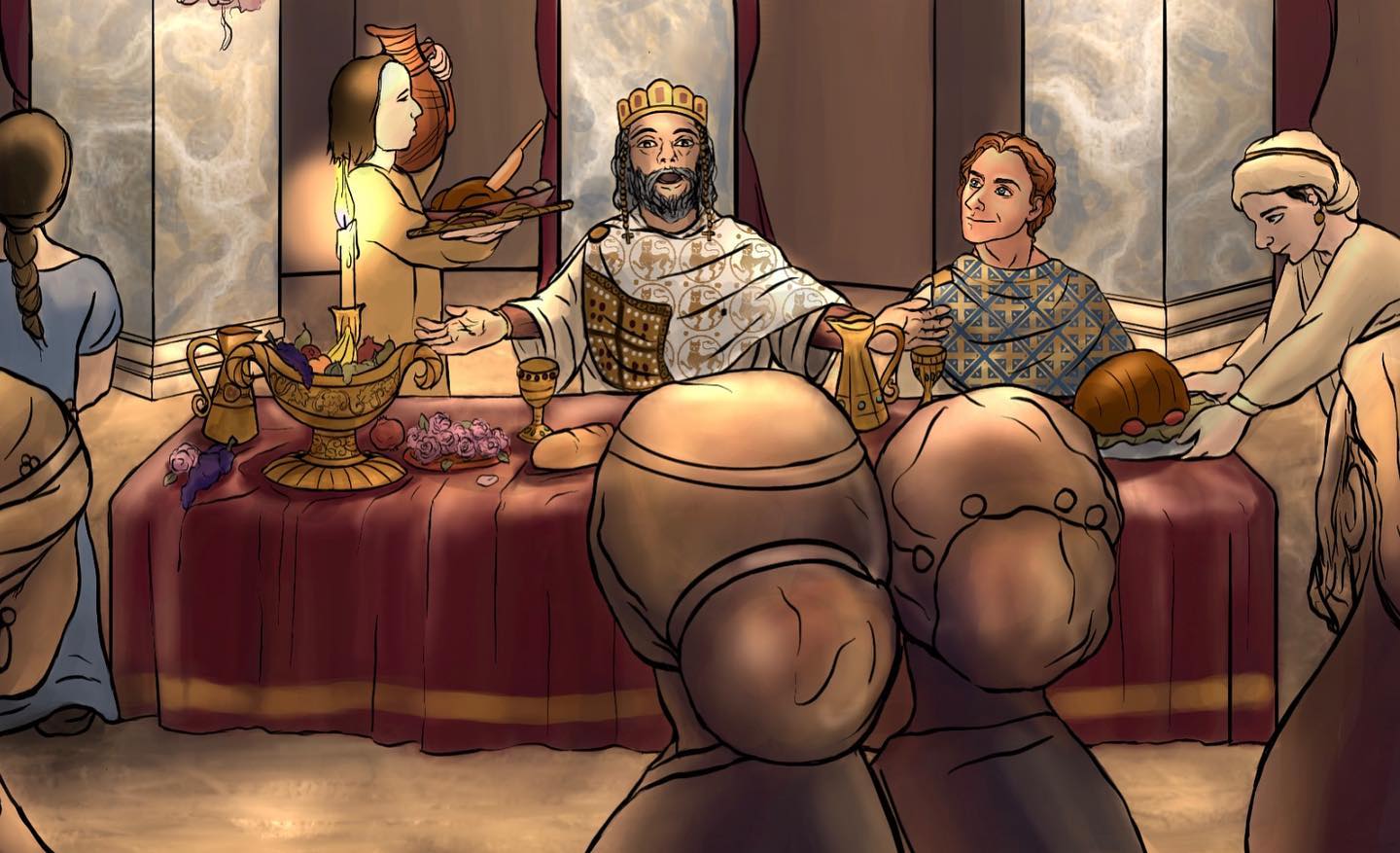

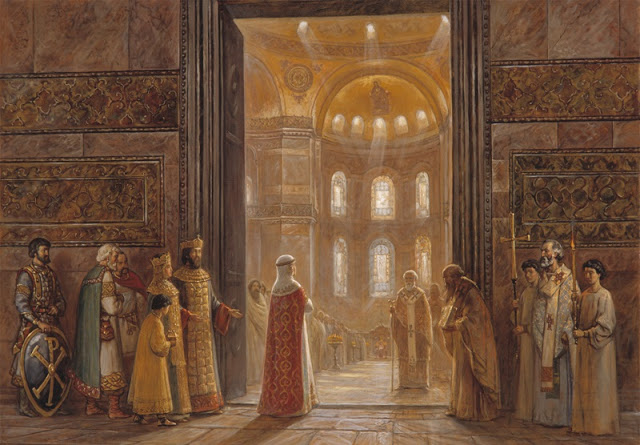
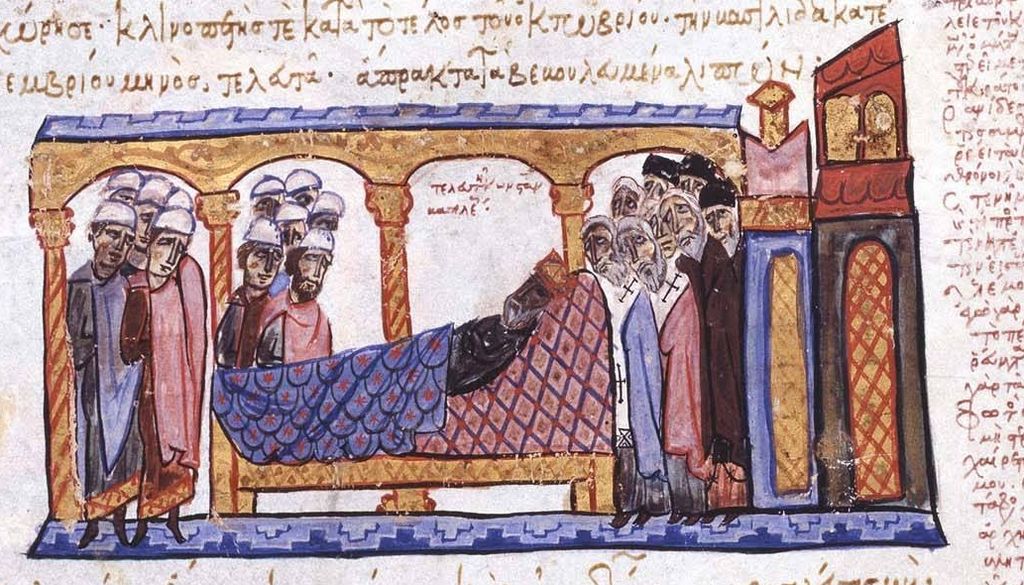
The Climax Part I- Romanos II, the End of the Amorian Dynasty (959-963)

In 959, Romanos II at only 21 succeeded his father Constantine VII following his death and continuing the Amorian Dynasty despite not knowing the whole truth and still thinking he was from the line of Basil the Macedonian and not of Michael III. Romanos II was very well trained by his father to succeed him as ever since 945 when Constantine VII became sole emperor, Romanos was already associated with his father on the throne as co-emperor and in addition, Constantine VII left behind to Romanos a complete manual in running the empire and its government which was the DAI.
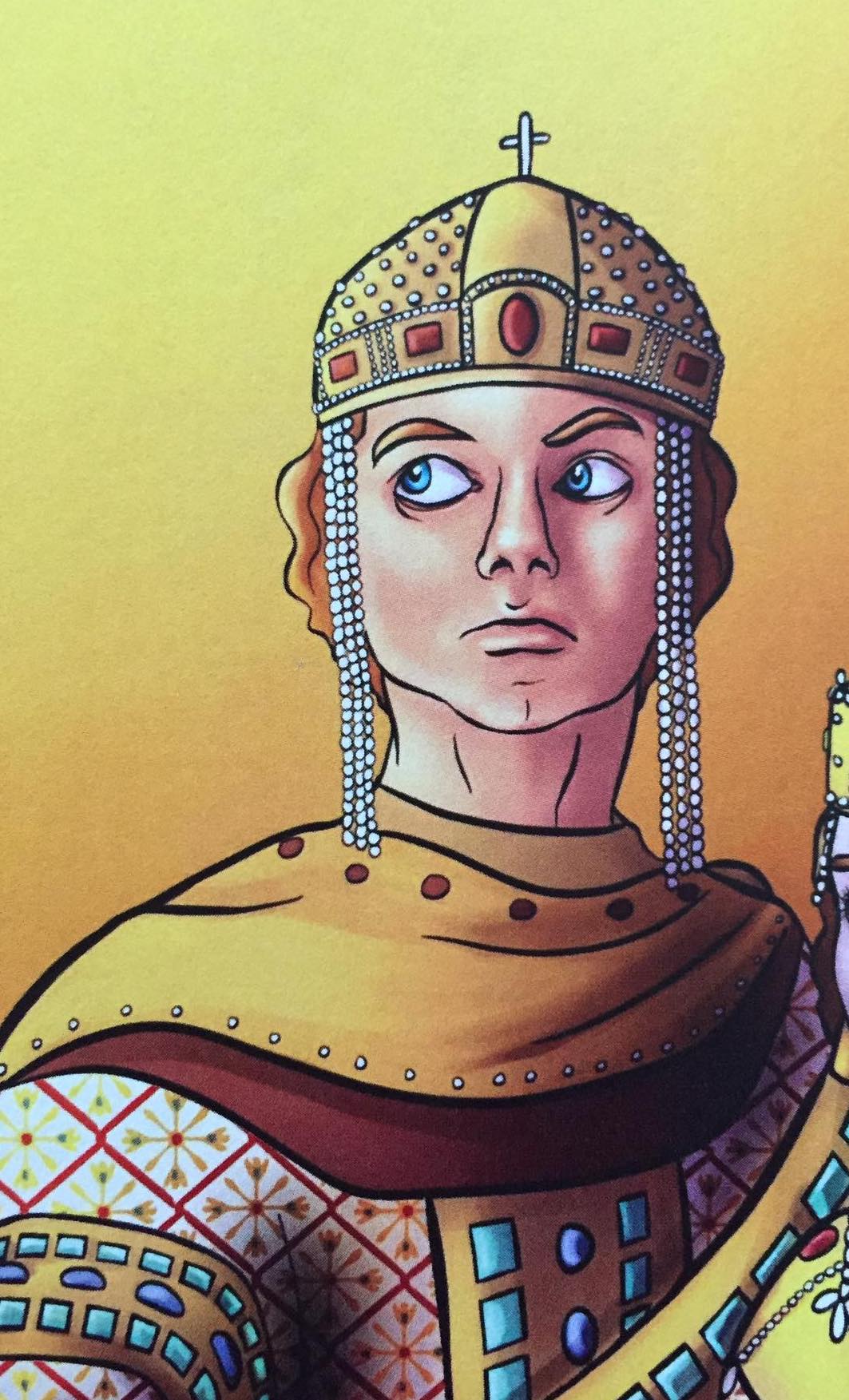
The question now is if Romanos actually took his father’s advice in running the empire to heart or just wasted it away, and the answer is that he just wasted it away as he did indeed have capable advisors like the eunuch Joseph Bringas who he put all his trust to in running the empire and more capable generals like Nikephoros and Leo Phokas as well as John Tzimiskes that he could put all his trust to, thus allowing Romanos to live the life of pleasure he so loved. Now Romanos being the pleasure-loving party-boy that partied all night and neglected his duties in running the empire but at the same time still having capable ministers running the government for him was exactly like his actual great-grandfather Michael III although unlike Michael III, Romanos would not get rid of his mother and sisters and lock them up in a convent. In real history however due to the influence of his wife Theophano, Romanos banished all of his 5 sisters from the palace including his mother Empress Helena and sent them all to a convent to become nuns as they were seen as threats, or if you go with the Theophano graphic novel, Romanos’ top advisor Joseph Bringas had accused Helena of poisoning her husband the late emperor therefore forcing her to commit suicide by having her poison herself when in fact Theophano poisoned Constantine VII being manipulated by Joseph, but in this story with Theophano not coming into the picture Romanos would not do anything to his mother and sisters, and since he was unmarried he still needed an empress (Augusta) at side, therefore his mother would still keep her position as the Augusta until Romanos was to be married, and not to mention too Romanos inherited a lot from his mother especially his good looks and grace, though Romanos’ stocky figure was inherited from his father.
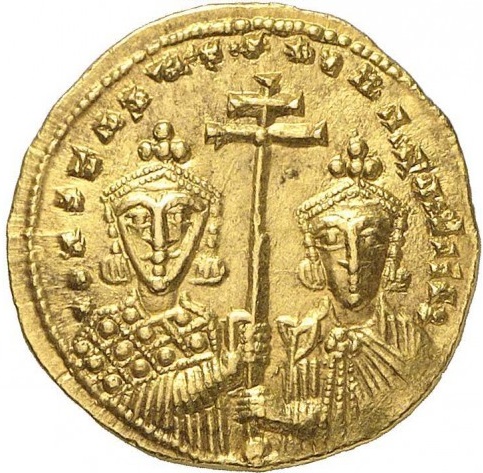
On the other hand, Romanos’ reasons for being hands off in the administration and neglecting mostly everything his father taught him in running the empire was not so much because he did not care and just wanted to party and sleep with other women, but because he did in fact have some personal issues with his father, and a lot of this had to do with how his father looked down on Romanos’ mother’s side, the Lekapenos family and his maternal grandfather Romanos I who Constantine VII saw as trash, while Romanos was indeed close to his mother’s side especially to his late fun-loving uncle Patriarch Theophylact who did in fact influence Romanos’ pleasure-loving lifestyle, and as an act of rebelling against his father’s memory, Romanos chose to not take his advice and let Joseph the eunuch do everything as he was highly skilled at it despite being greedy and corrupt at the same time. Romanos having grown up practically raised by Joseph Bringas chose to have Joseph as his top advisor while his uncle Basil Lekapenos was put aside, although he still maintained his position in the imperial court. Now Romanos II was not all neglectful and resentful towards his father as you may think as in 960 less than a year after becoming emperor, he decided to continue what his father failed to do before he died which was to recapture the entire island of Crete and so here, Romanos planned out a massive campaign to retake the island himself though with Joseph’s advice too, but Romanos having no military experience would not lead the campaign himself, instead he selected the empire’s rising star and most capable general Nikephoros Phokas to lead it, and true enough Nikephoros had been Byzantium’s most brilliant strategist general since Justinian I’s general Belisarius in the 6th century (who played a major part in chapter III). Romanos II then had to recall Nikephoros from the eastern front to Constantinople where the fleet of 1,000 warships or Dromons including 50,000 soldiers and 27,000 sailors would take off. Nikephoros then left behind his younger brother Leo and nephew John Tzimiskes to fight off the Arabs in the east as he was to face another Arab army which were the pirates of Crete, and Nikephoros living his life to fight Arabs accepted the offer to lead the perilous Cretan expedition of 960 which would then last for about 8 months, although Nikephoros spending months on campaign already expected this.
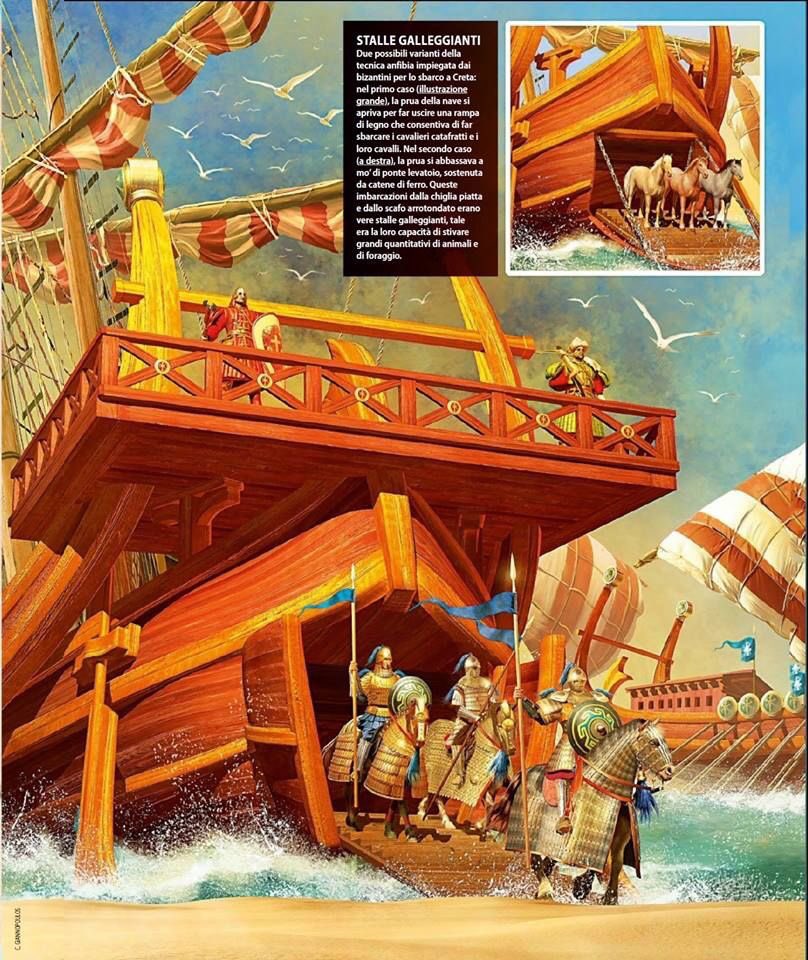
The entire fleet then arrived outside the city of Chandax which was the island emirate’s capital, and when seeing the strength of its land and sea walls, Nikephoros had his men carefully inspect it and here he immediately came up with his strategy which was to not lift the siege no matter how much time went by. For months, the Byzantine forces kept firing arrows and weights from their catapults into the city, though it never succeeded and at one point just out of fun and as an insult, Nikephoros had a live donkey catapulted high up into the air and into the city, though to mention, another tactic Nikephoros used here was to catapult in to the city heads of its peoples’ relatives from outside the walls that had been killed, as a way to bring fear to them. The siege lasted until the winter where Nikephoros ordered his men to not lift the siege but use the winter to starve off the population inside, and it was also here when ships from Constantinople arrived to restock the supplies for the army, but it was only when March of 961 came when the Byzantines would totally gain the upper hand. The emir of Crete Abd al-Aziz meanwhile was tired of being blockaded for months that he even wrote to Romanos II to order his men to abandon the siege, though it did not work as Nikephoros was already so close to taking it. The next trick Nikephoros did was to have his men dig beneath the walls to make it collapse and with explosives planted beneath the walls’ foundations, the walls collapsed allowing the Byzantine army to pour in. After months of endlessly waiting to take the city, the Byzantine army lost all their patience and once they broke the walls of Chandax, they carried out a merciless sack of the city massacring anyone they found while the survivors were taken as slaves, mosques were destroyed out of revenge, and a lot of loot hoarded by the Arab Cretan pirates over the years were recovered. By March of 961, not only Chandax but all of the Island of Crete fell once again back under Byzantine hands after 137 years of Arab control and numerous attempts to recapture it, thus the threat of these Arab pirates in the Mediterranean was done with for good and trade allowed to continue uninterrupted once again, while at the same time the emir Abd al-Aziz was taken as a prisoner and brought to Constantinople where he was paraded at the triumphal procession for Nikephoros Phokas and his army. The triumph in Constantinople meanwhile was not entirely held for the victorious general Nikephoros Phokas but for Romanos II who masterminded the whole expedition as he did not want Nikephoros getting all the credit, and here Abd al-Aziz was forced to bow down to Romanos II but was still allowed to live and retire peacefully despite not converting to Christianity, though he would never come back to the picture again.
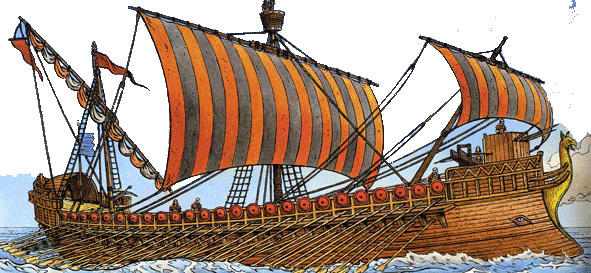


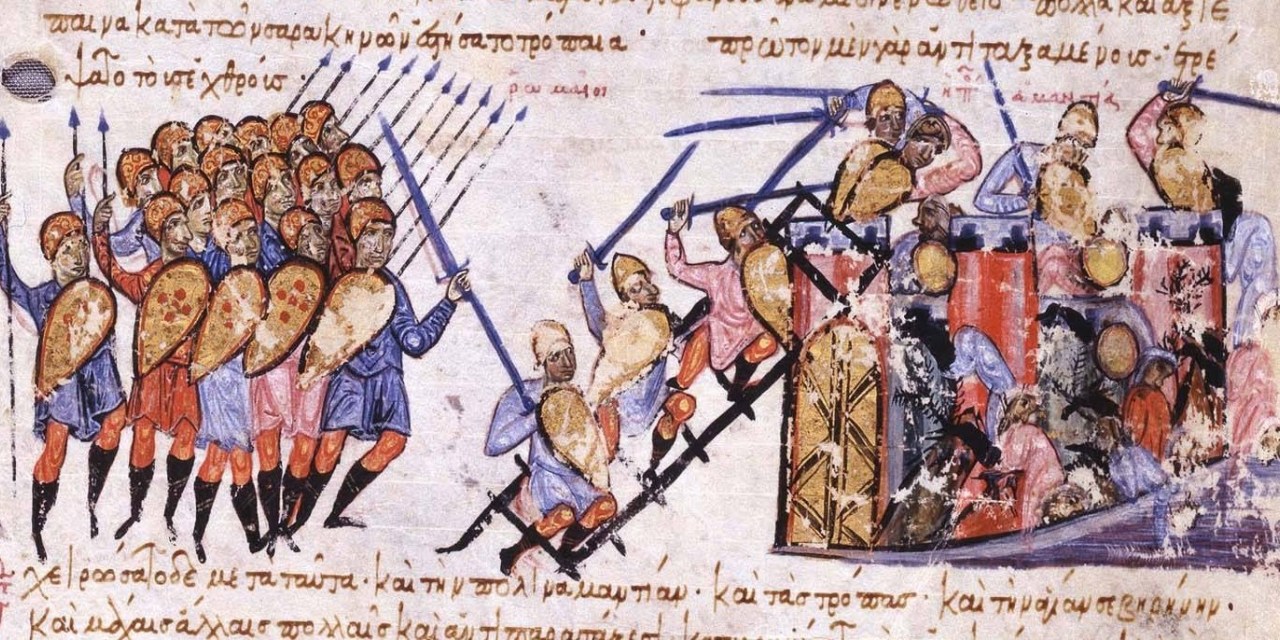
By achieving the impossible in finally taking over Crete from the Arab pirates, Nikephoros Phokas would be forever remembered as the terror of the Arabs or simply the “Pale Death of the Saracens” referring to his brutal massacre of the Arab Muslim population of Chandax, although Romanos II too would gain a lot of popularity for achieving the reconquest of Crete. Nikephoros however right after celebrating his triumph was immediately sent back to the eastern frontier to continue the war against the more serious Arab threat of the Emir of Aleppo Sayf al-Dawla who was striking back against the Byzantines for their successes, although Romanos too saw that Nikephoros may pose a threat to his power if he was to stay in Constantinople longer as Nikephoros had grown even more popular than the emperor for his recent victory.
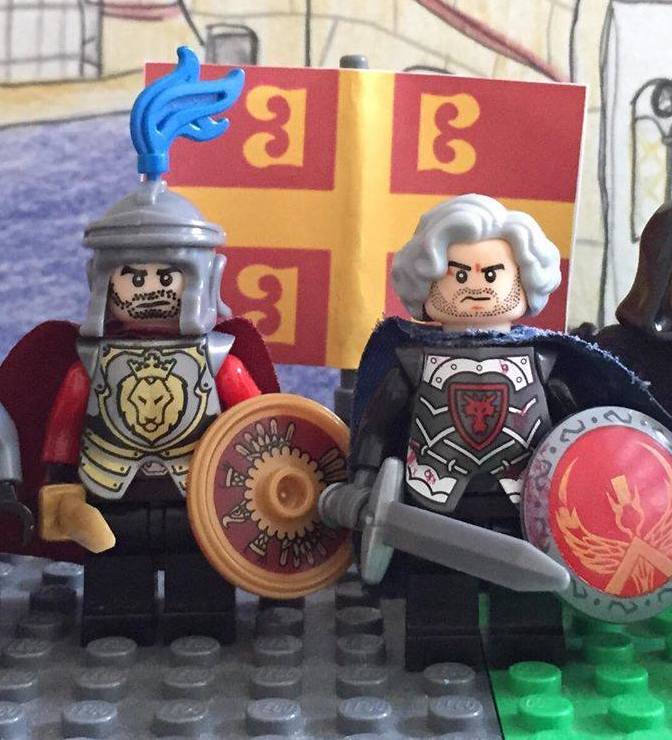
In the meantime over in the eastern frontier, Sayf al-Dawla continued making his annual raids into Byzantine Asia Minor even winning a few victories in minor battles, although Leo Phokas who was left in charge there had managed to set a trap for Sayf in the Taurus Mountains where Sayf was going to pass when returning to Syria and there as his army marched through, the Byzantine forces under Leo ambushed them which was successful leaving only Sayf with 300 of his cavalry soldiers alive, although Sayf barely escaped the ambush when his prized Arabian horse he was riding was killed in the ambush. Sayf then escaped using one of his dead soldier’s horse and had even scattered his gold coins to allow his escape as Leo’s soldiers were busy picking them up. Nikephoros later on in 961 was back in Cilicia to continue his campaigns, although here he was not intending to fully invade it but to make raids as his tactic in order to weaken the state for a full Byzantine invasion later on, though it was also in 961 when Romanos II’s mother Empress Helena died like in real history from natural causes. In early 962, Nikephoros and his army was able to capture the border between Cilicia and Syria where Nikephoros had the land burned to create a dead zone as a way to make it more difficult for Sayf to invade, although Sayf still managed to cross over to Cilicia but this allowed John Tzimiskes to attack Sayf’s capital of Aleppo in Syria directly while Sayf was not there to guard it. Sayf when hearing that the Byzantine forces reached his capital returned to defend it, but when returning he was chased by John Tzimiskes and his forces to the Euphrates River wherein Sayf crossed into Mesopotamia whereas Nikephoros and Leo with their forces all surrounded Aleppo itself. For several months, the Byzantine forces had besieged Aleppo and with Sayf absent from his capital, public order there collapsed that by December of 962 the city’s garrison had to surrender to the Byzantines. Just as they did in Chandax a year earlier, the Byzantine forces did the same to Aleppo looting the city and carrying out a brutal massacre on its Muslim Arab population and when seeing Sayf’s magnificent library there, the Byzantines discovered that Sayf was not just a warrior but a highly cultured intellectual, although the Byzantine soldiers acting on Nikephoros’ orders did not spare the library out of respect, instead they burned it to the ground as part of Nikephoros’ strong grudge against Islam. The Byzantines then would only stop their brutal pillaging of Aleppo when they grew tired of it and at the end, they were able to capture over 390,000 silver dinars, 2,000 camels, and 1,400 mules thus the forces under the 3 generals Nikephoros, Leo, and John would head back west, while for the Arab world, the sack of Aleppo would forever ruin their power and prestige. Meanwhile over in the Balkans, another Byzantine general would rise to prominence the way Nikephoros Phokas did, and this was Marianos Argyros who had previously gained success in Southern Italy winning many victories against the Arabs and in 962 he had defeated a major invasion of the Magyars into Thrace making him instantly a favorite and part of Romanos’ inner circle, which was also because Romanos under Joseph’s influence soon grew to mistrust Nikephoros seeing him as a direct threat. In March of 963, as Nikephoros and his generals were in Cappadocia, news reached them that Romanos II had died and everyone was shocked as the emperor was only 25, therefore they suspected his scheming eunuch advisor Joseph Bringas of poisoning him. Now in real history, it is rumored that it was his wife Theophano that poisoned him like she did to his father as she had gotten tired of Romanos, although in this story with Theophano not being around, we will go with the other possible theory of Romanos’ death which was caused by an accident in a hunting trip whereas Romanos being drunk fell off his horse and down a ditch injuring himself, and when lying down back in Constantinople being badly injured, I would say Joseph Bringas poisoned him to finish him off, although as a eunuch Joseph could not be emperor so it was up for him to put another puppet on the throne except he did not know who, as for one he was someone who totally hated Nikephoros Phokas seeing his popularity as a threat, so here I would go with Joseph selecting John Tzimiskes as his new puppet emperor who Joseph believed could be easily manipulated, and true enough this could be why Joseph sent a letter to John in real history asking him to turn on his uncle Nikephoros and bring him in chains to Constantinople.
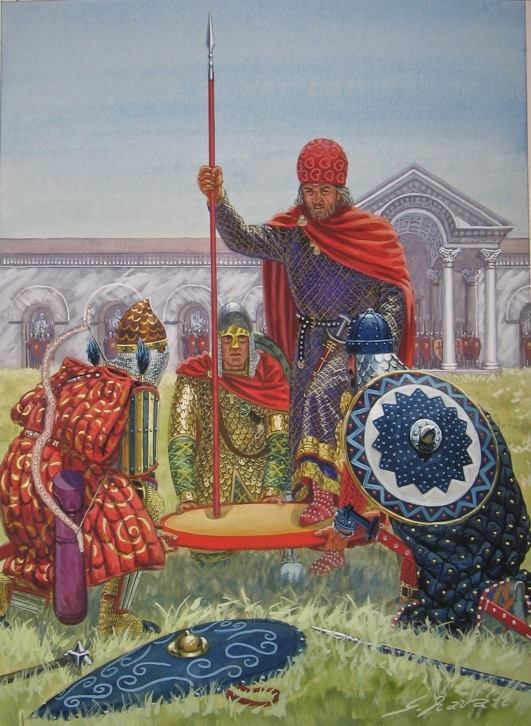
In real history however, Theophano having 2 young sons with Romanos, Basil and Constantine who were both already co-emperors needed a protector for them as she distrusted Joseph, therefore she sent word to the popular Nikephoros Phokas to make himself emperor to protect her sons, although here again with Theophano not being in the picture and Romanos II remaining unmarried and without children at his death, Nikephoros Phokas would set his eyes on the throne anyway using his popularity as an opportunity. The same would happen here too with Joseph Bringas sending John Tzimiskes a letter asking him to turn on his uncle Nikephoros and arrest him but like in real history, instead of turning on his uncle, John would end up having their troops proclaim his uncle Nikephoros as emperor raising him on a large round shield, thus here ends the rule of the Amorian Dynasty that had ruled since 820 and only briefly interrupted with the reign of Basil I the Macedonian (867-886) and his legitimate son Alexander (912-913), and here begins the rule of the Phokas clan over Byzantium.

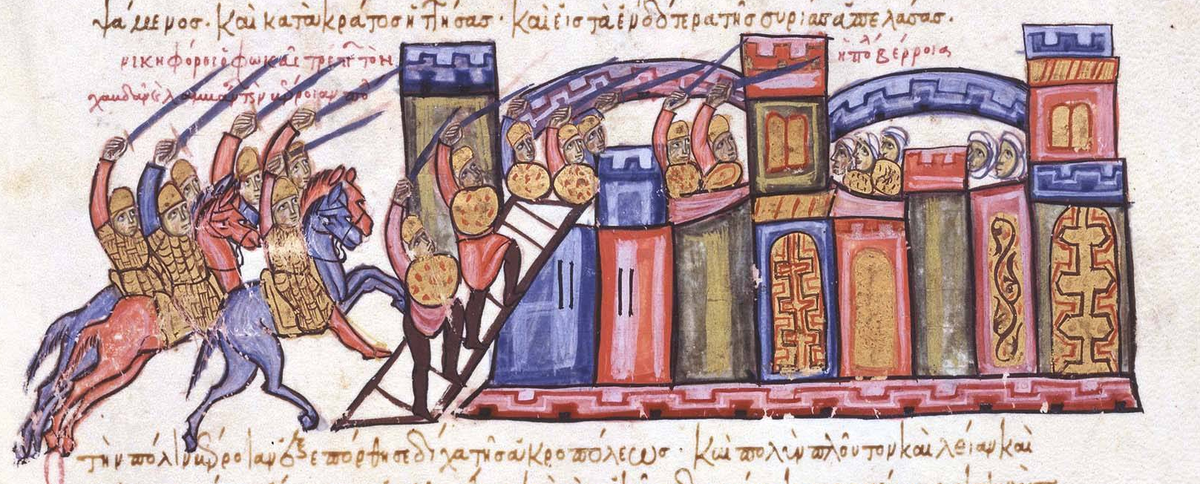
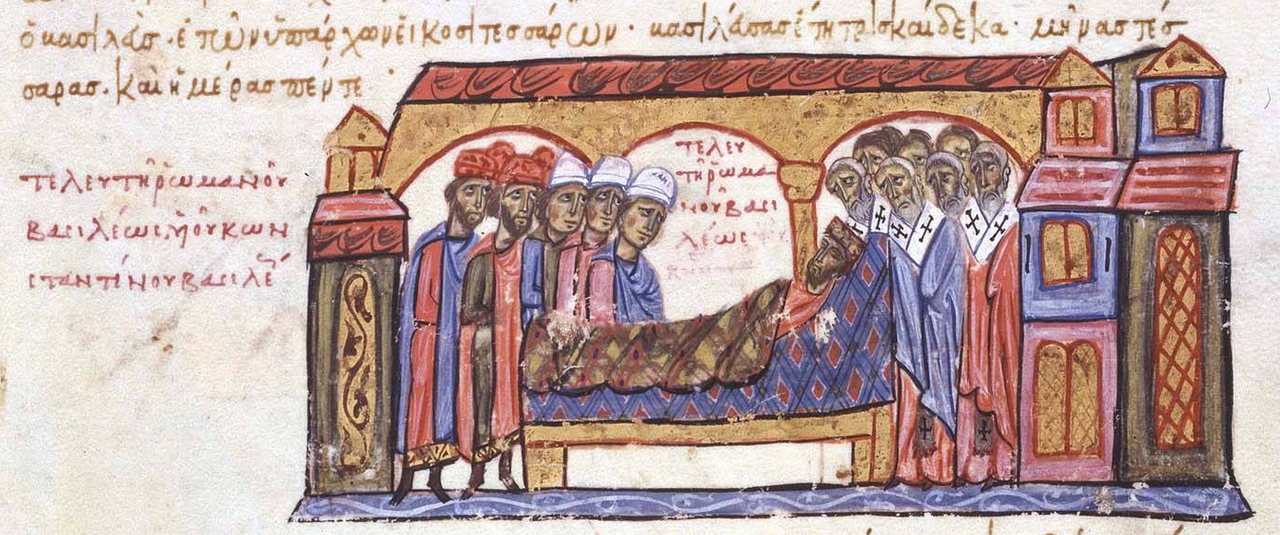
Watch this video below to see Nikephoros Phokas’ life in Lego (from my channel No Budget Films).
The Climax Part II- Nikephoros II Phokas (963-969), From Hero to Zero

Here in August of 963 begins the highly eventful and action-packed 6-year reign of Nikephoros II Phokas, but before he could be officially crowned as emperor by the patriarch Polyeuctus, he had to make his way into Constantinople as Joseph Bringas had already taken control of the city refusing him entry. As Nikephoros and his army were camped outside the Bosporus at night, he sent his brother Leo to cross it in a small boat dressed as a port worker which he did and when reaching the docks of the European side of Constantinople, he gathered a large number of boats which he had sailed across the Bosporus to ferry the rest of the army and Nikephoros right across it again. At the same night as Nikephoros’ and Leo’s armies were crossing the Bosporus, their very old father Bardas who was still alive was inside the Hagia Sophia seeking refuge, although here the people inside all rallied under him against Joseph Bringas who they all came to hate due to his corruption, although Joseph already sent Marianos Argyros who was in charge of the city’s defense to arrest Bardas as Joseph planned to get rid of the entire Phokas clan except for John Tzimiskes who here was his intended candidate, although true enough John as a strong general was not willing to be a puppet. Bardas however would not end up being arrested as Marianos before reaching the Hagia Sophia was injured by a heavy object thrown right at his head by a woman from the balcony doing this in rebellion against Joseph, and hours later Marianos would die from his head injury. At the same time, the eunuch Basil Lekapenos who had been put aside throughout Romanos II’s reign struck back in rebellion against Joseph bribing the population of Constantinople to turn on the corrupt and fat Joseph. Nikephoros and Leo with their forces eventually crossed the Bosporus and made it into Constantinople wherein the city garrison surrendered to them as they commanded a larger army and when getting into the center of the city, Nikephoros himself confronted Joseph in a fistfight in which Nikephoros won and when losing the fight as well as all his power influence when everyone turned against him, Joseph Bringas was banished from Constantinople for good, thus returning to his native land of Paphlagonia in Northern Asia Minor never to return again.
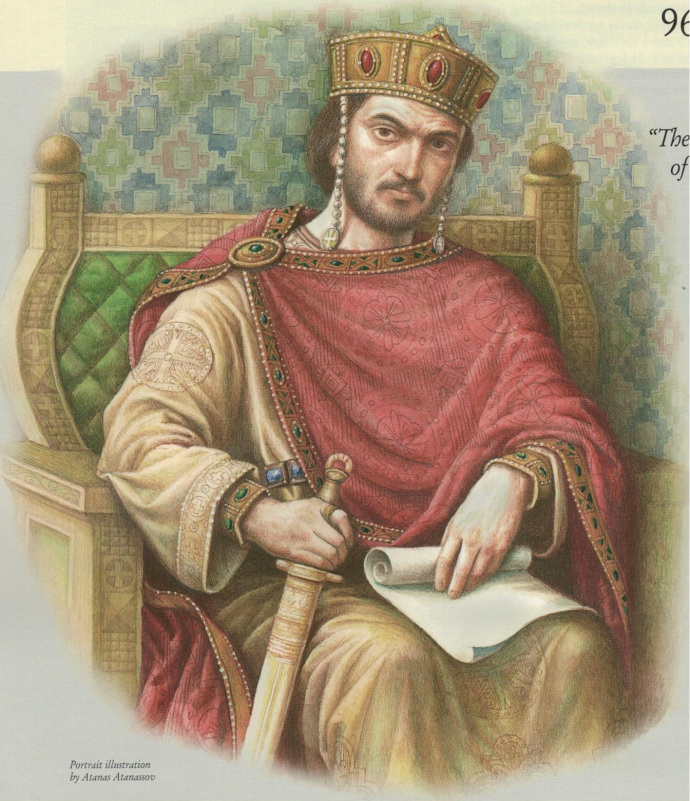
The next day, Nikephoros was officially crowned as emperor by Patriarch Polyeuctus, although Polyeuctus never really supported him anyway, except that after seeing power shift twice from Constantine VII to Romanos II, then to Nikephoros in only 4 years, he got tired of all this changing of emperors, so he crowned Nikephoros anyway who now was the sole emperor as here in this story there is no Empress Theophano around and her 2 sons that Nikephoros would have to rule for as their guardian. In this case, Polyeuctus also agreed to crown Nikephoros despite him having no ties to the previous ruling Amorian Dynasty because Polyeuctus knew the dynasty was ruined anyway as Leo VI long ago was not a legitimate son and Constantine VII was the son of a controversial 4th marriage, though only for the sake of legitimacy for Nikephoros to not be seen as a usurper, Polyeuctus would ask him to marry one of Romanos II’s sisters as in fact all 5 were still alive, and in this story, unlike in real history where Nikephoros married Theophano to legitimize his claim, here he would choose Romanos’ twin sister Zoe as his wife, as again Theophano would not be around here. Just like how Nikephoros in real history married Theophano despite never staying close to her as he vowed to stay away from women after his first wife and son died a long time ago and also because he wanted to live life like an ascetic monk, Nikephoros would do the same here too by marrying Zoe for political reasons only, although as part of his ascetic lifestyle, he would mostly stay away from her, but it would be worse here as Zoe had no children whereas in real history Theophano already did, and Zoe would actually not have any children as Nikephoros would never stay close to her.

As the new emperor, Nikephoros made his brother Leo the head of the palace or Kouropalates and his father Bardas a Caesar as an honorary title, while John Tzimiskes succeeded Nikephoros as the top commander of the eastern armies. Now for weakening Sayf al-Dawla’s threat in the east, recapturing Crete, and finishing off the corrupt Joseph Bringas, Nikephoros II was highly popular when coming into power, but his much younger nephew John Tzimiskes was even more popular mostly because of his good looks and supernatural abilities in horse riding and archery despite his short stature which is why he is known by his nickname Tzimiskes which as I forgot to mention is the Greek translation for the Armenian word for “short” thus hinting he is of some Armenian origin, and John Tzimiskes too aside from having good looks also had charm unlike his uncle Nikephoros who at 51 here in 963 was unattractive in appearance and being a veteran soldier was very rough around the edges, negative in personality, and had also lacked charm making him unable to connect with the population and only with his soldiers. Nikephoros as emperor true enough ruled the same way as he commanded his troops and rather than caring about pleasing his people, the first thing he thought about when becoming emperor was resuming the war in the east against Sayf al-Dawla. By the end of 963, Nikephoros launched another campaign against the Arabs of Cilicia, although this time he remained in Constantinople while his brother Leo and nephew John Tzimiskes led the army, and here John was able to strike the city of Adana forcing the Arab forces there to flee to a nearby hill where they made a last stand but ultimately lost when John wiped them out there. Sayf meanwhile began raiding Byzantine Asia Minor once again but did not last long enough as here in 963 as well, he suffered a stroke thus making him unable to fight in person which made him have to make a truce with Nikephoros II.
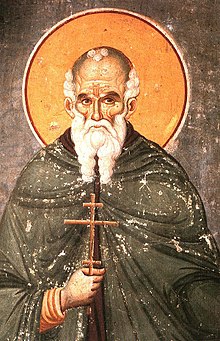
In 964, Nikephoros II’s popularity would already start dropping when he began to issue laws that was to limit land donations to the Church from the aristocracy thus making him unpopular with the Church, while he also continued the reforms of Romanos I and Constantine VII in limiting the aristocracy (Dynatoi) from buying land from the peasants. As a devout Christian, Nikephoros believed that the Church should not really possess worldly wealth and property which he was very vocal about, though despite this, he still gave property in the peninsula of Mt. Athos in Northern Greece to his friend the monk Athanasios of Trebizond in which Nikephoros even helped him financially construct and establish the Great Lavra Monastery which would over the years grow into a large monastic community.
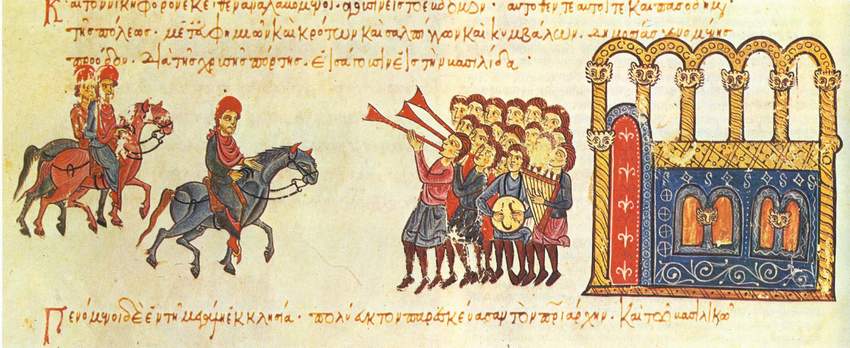

Between 964 and 965, Nikephoros II himself headed out east to continue his campaigns against the remaining Arab emirates in Cilicia and Syria to finally conquer them.
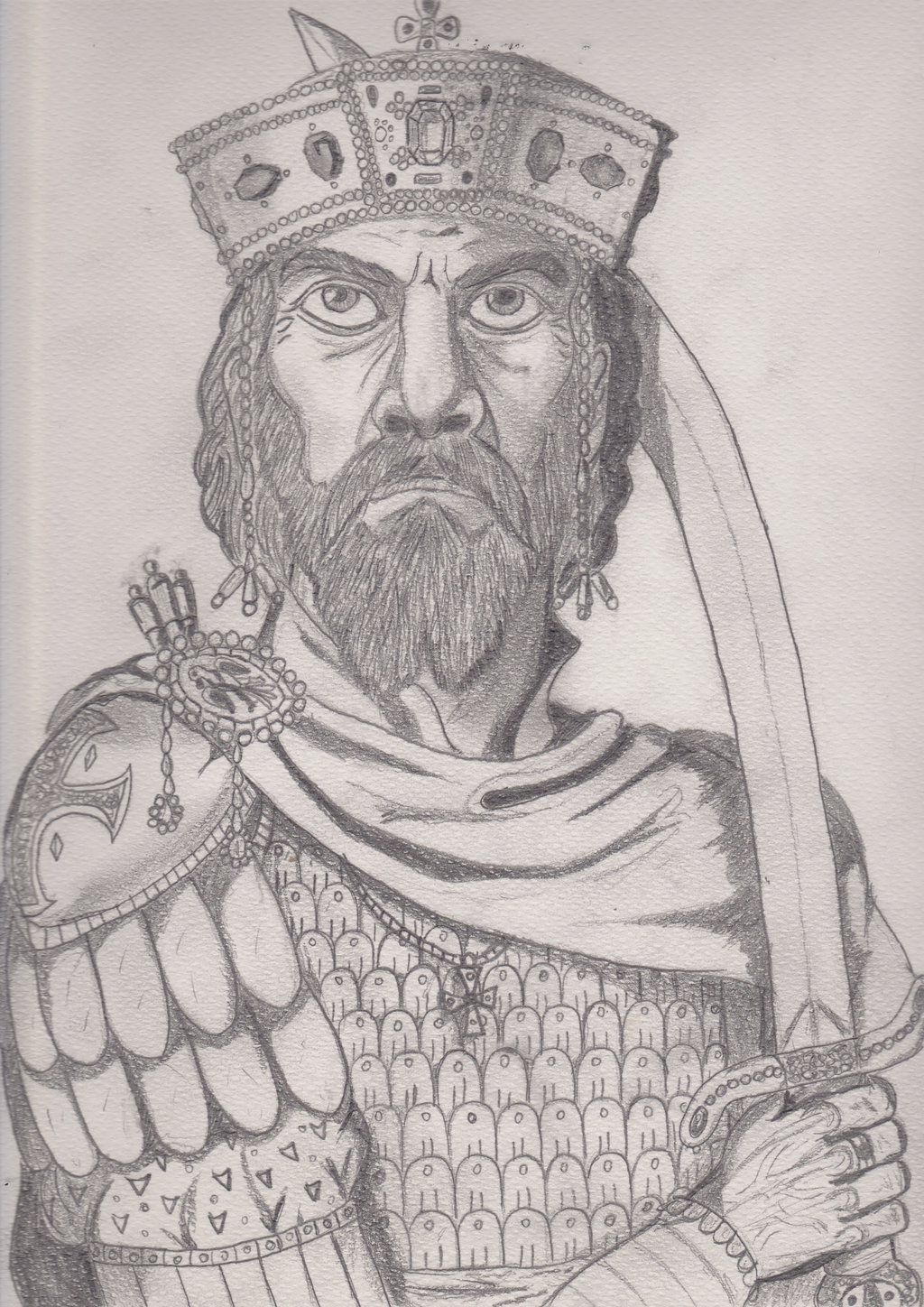
In 965, Nikephoros announced that the sharing of the island of Cyprus between the Byzantines and Arabs in which the Arabs having one half of the island paid rent to the Byzantines, in which they have done ever since the reign of Constans II in the mid-7th century would end, and this meant that Nikephoros launched a massive naval invasion to recapture the Arab half of Cyprus. The expedition to retake all of Cyprus led by the general Niketas Chalkoutzes was then successful making all of Cyprus Byzantine again all while Nikephoros together with Leo and John continued their Cilician campaign. For several months, both the emperor Nikephoros and John Tzimiskes were besieging the city of Mopsuestia in Cilicia while Leo was busy besieging Tarsus, which here was another haven for Arab pirates the way Crete was before 961. By July of 965, the city of Mopsuestia completely fell to the Byzantines after the soldiers of Nikephoros and John doing like they did in Crete 4 years earlier dug beneath its walls making them collapse and when taking Mopsuestia, the Byzantine soldiers being the same ones that captured Crete and Aleppo did the same as they did there by carrying out another brutal massacre on the Arab Muslim population of Mopsuestia and taking the survivors as slaves. Following the fall of Mopsuestia, Tarsus too fell to the Byzantines in August of 965 where Nikephoros chased the remaining Arab forces of Tarsus with his Cataphract cavalry and following this, all of Cilicia fell into Byzantine control thus becoming a Roman province again.

Back in Constantinople, a major triumph was celebrated for the complete reconquest of Cyprus and Cilicia and here Nikephoros II began a tradition which was to parade the sacred Christian relics he captured in his triumphal parade, a new practice that Byzantine emperors would do from here onwards. Though John Tzimiskes was the hero of the Cilician campaign, just shortly after returning to Constantinople he was fired from command by his uncle the emperor and forced to live under house arrest in a small estate in Asia Minor for some unclear reasons, but for this story’s case it would be because Nikephoros II here started getting paranoid and envying his nephew to the point of seeing him as a threat to his power as it was John who gained a lot of popularity for his victories in Cilicia, and it would be here when John would eventually form a conspiracy to overthrow his uncle Nikephoros. Now Nikephoros may have been successful in fighting wars in the eastern front, but in the west it was not really the case as by putting all his attention and best troops in the east, the west meaning Byzantine Southern Italy was poorly defended with weaker forces and in 965 too, the Byzantines forces after being forced out of Rometta, their last outpost in Sicily would suffer a heavy defeat to the Arab navy at the naval Battle of the Straits wherein many Byzantine soldiers died drowning in the sea and the survivors enslaved by the Arabs.
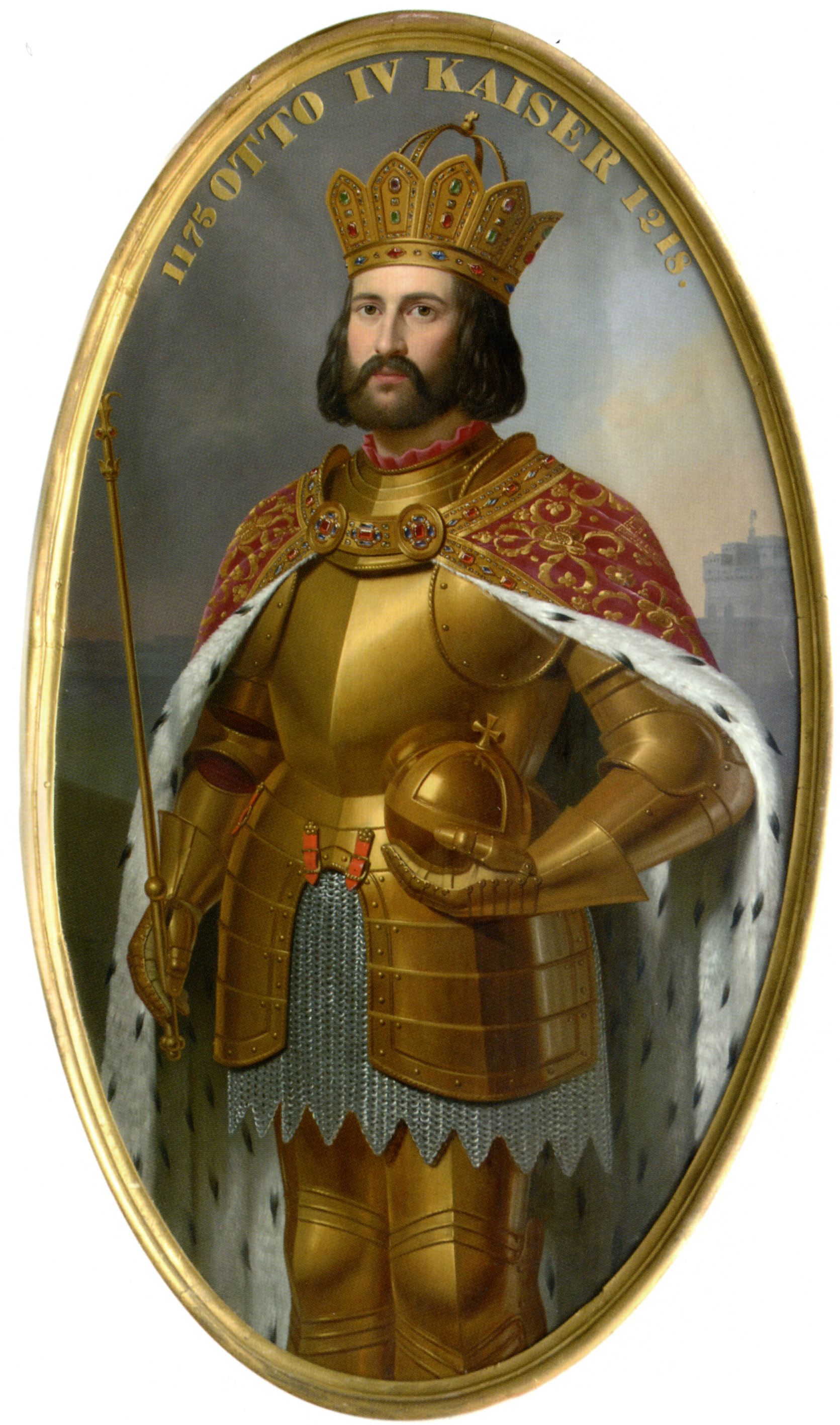
At the same time too, the Frankish king of East Frankia (Germany) Otto I who maintained good relations with Constantine VII before was now hostile towards Byzantium as in 962 he had been crowned by the pope John XII as the first Holy Roman Emperor, and unlike Charlemagne back in 800 who was surprised to be crowned as a “Roman emperor” by the pope if you remember from the previous chapter, Otto who spent his whole reign unifying Germany and Italy into one empire the way Charlemagne almost 200 years ago did, was really intent in being crowned as a “Roman emperor” which he used to challenge the authority of the Byzantine Empire especially in their holdings in Italy, which Otto had wanted for himself. Nikephoros as usual of him in 966 continued fighting wars in the east and this time having his men go all the way east to Mesopotamia again to raid the Arab held cities of Amida, Dara, and Nisibis but little did Nikephoros who never really listened to his people know that his people were tired of war and were content with how large and strong their empire was already as more wars meant more taxes to pay for the food supply and salary of the soldiers. Nikephoros though was very strict in his tax policies that he constantly increased taxes to fund his military campaigns as in this story, he did indeed have the ambition like Justinian I 4 centuries ago to conquer the entire Mediterranean and make it a “Roman lake” again, except Nikephoros was forgetting that Byzantium’s armies despite being powerful was not as powerful and great in number anymore as it was in the 6th century.

Nikephoros’ aggressive policy would again show between 966 and 967 when he would end the 42-year peace between Byzantium and the Bulgarian Empire up north which began in 925 between Romanos I and the Bulgarian tsar Simeon, and by 966 Simeon’s son Peter I was still ruling Bulgaria and by not being very aggressive, Peter did not really succeed in blocking off Magyar raids that penetrated Bulgaria and reached Byzantine territory, and because of this Nikephoros wrote him a letter telling him to be more aggressive in dealing with the Magyars from the north as they were spilling in to Byzantine territory, but Peter refused saying he was fine with what he was doing. According the contemporary historian of this time Leo the Deacon, Nikephoros insulted the Bulgar ambassadors Peter sent to him reminding them of their origins as nomadic barbarians from the steppes in which the Bulgars were from, and in this story, this would be true while Nikephoros as well refused to pay tribute to Bulgaria, which again would resume the traditional war between Byzantium and their northern neighbor after 42 years. At the same time, a new power had been rising in Eastern Europe which was that of the Kievan Rus’ and since 964, this state had been ruled by their Grand Prince Sviatoslav I, better known as “Sviatoslav the Brave”, the son of the Kievan Rus’ grand prince Igor and princess Olga who had been mentioned earlier, and Sviatoslav unlike his mother who was baptized an Orthodox Christian was a Pagan like his father, and also a ruthless warrior who had the ambition to expand the Kievan Rus’ state by force using both the fearlessness of his Scandinavian Viking ancestors and speed of the nomadic steppe people like the Huns, Magyars, Pechenegs, and Avars that had settled in that part of Eastern Europe for centuries.
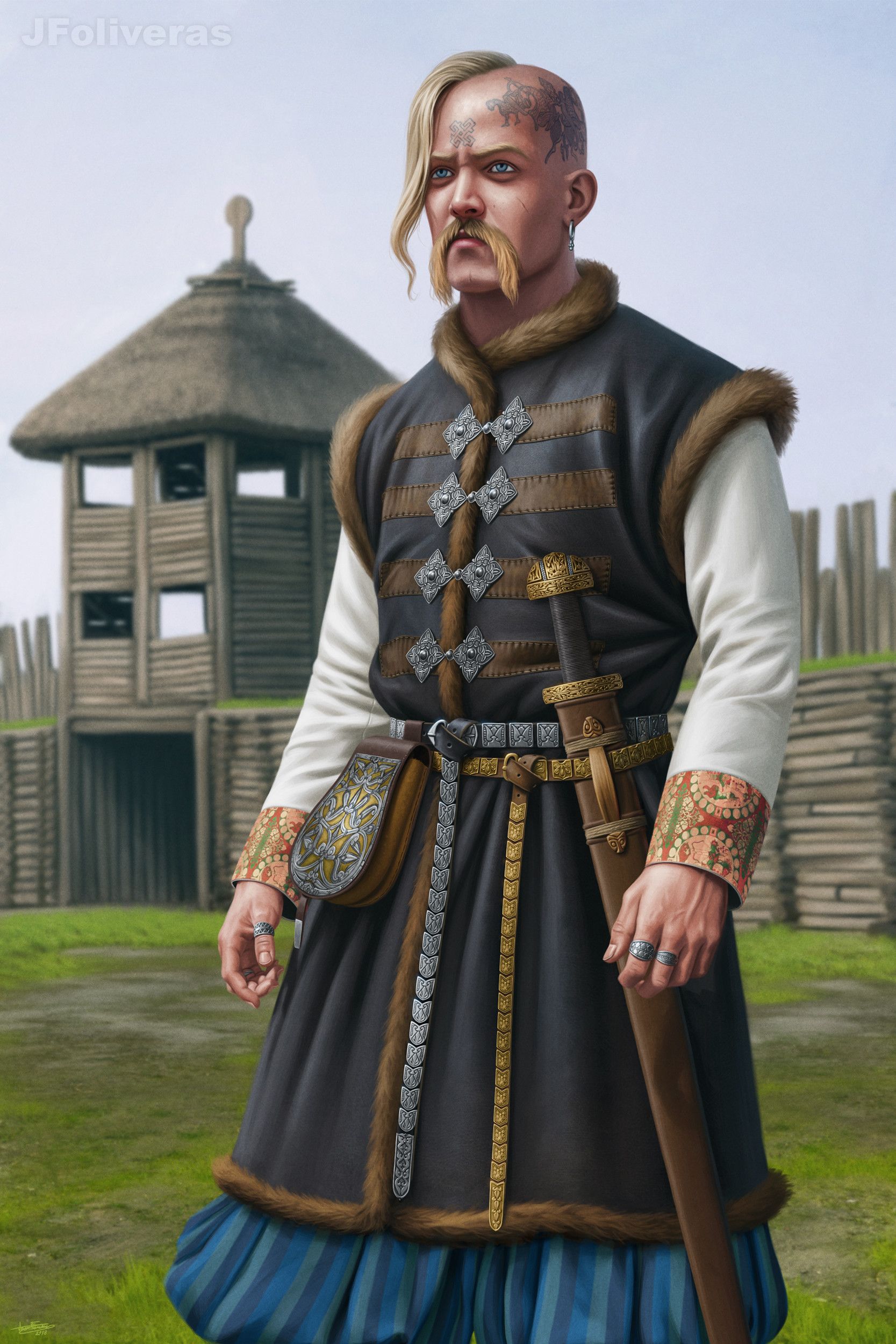
Sviatoslav thus expanded his empire by force that in such a quick amount time with the speed and ruthlessness of his army, most of Eastern Europe was conquered that in 965 the power of the Khazar Khanate in Southern Russia that had been there for about 4 centuries was destroyed when Sviatoslav destroyed their major trading city of Sarkel along the Don River which the Byzantine emperor Theophilos helped build long ago, and the Khazar’s capital of Atil located where the Volga River comes out into the Caspian Sea too was destroyed. Sviatoslav too set his eyes on Byzantine Cherson in the Crimea intending to conquer it to gain access to the Black Sea, and when Nikephoros heard of Sviatoslav’s ambition to conquer Byzantine territory, he sent Sviatoslav money bribing him to attack the Bulgarian Empire instead in which Sviatoslav accepted the offer and rode to Bulgaria with such terror, and what resulted from his attack was the near complete destruction of the Bulgarian state that the eastern half of Bulgaria fell under his rule. Sviatoslav though did not only conquer Bulgarian lands, he even went as far as spilling into Byzantine Thrace bringing such terror there as well, which then shows that Nikephoros II was not really a skilled diplomat.

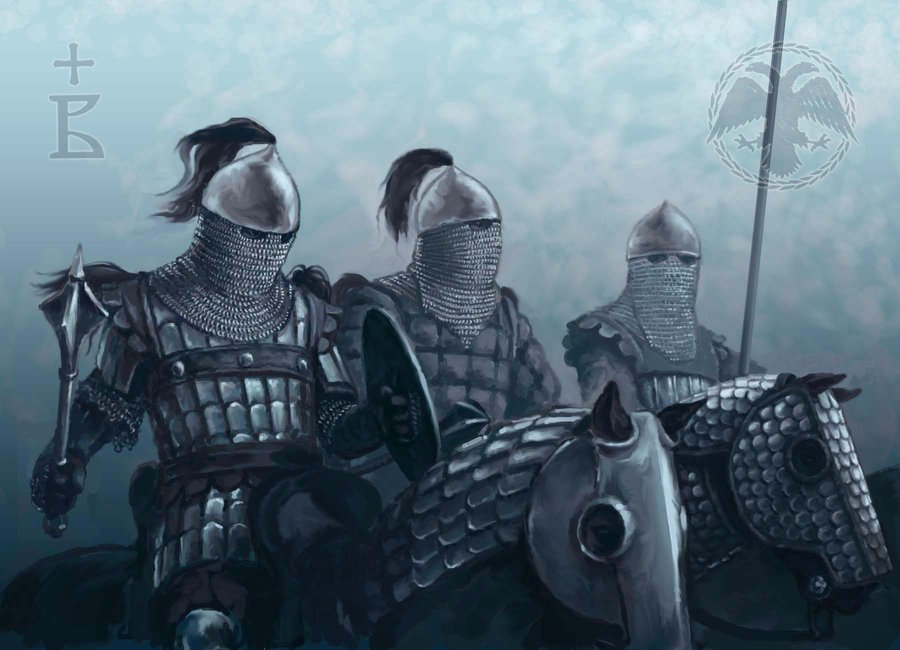
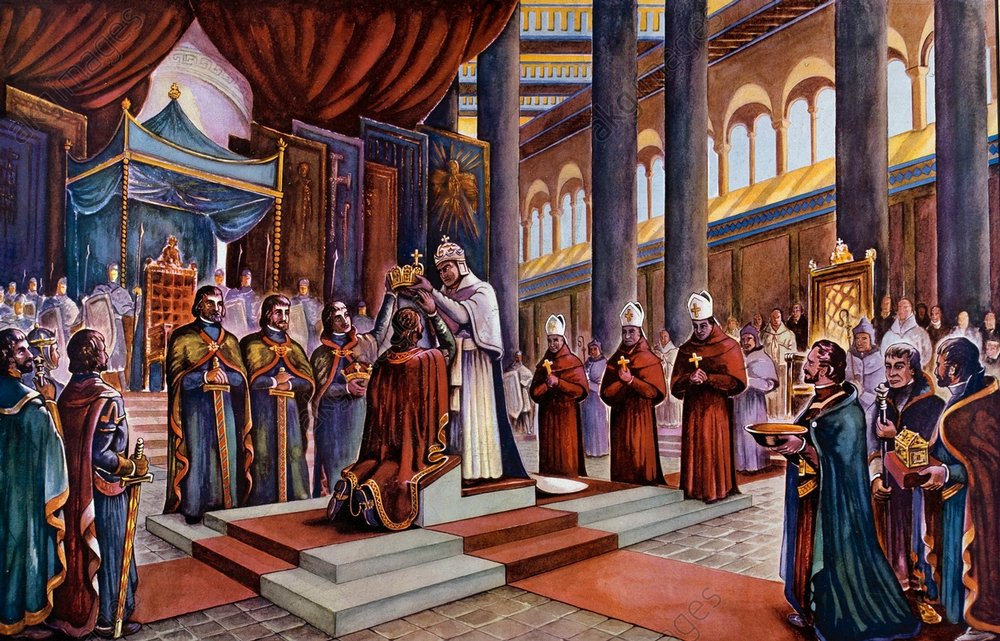

Meanwhile, back in the east Sayf al-Dawla had died in 967 due to complications caused by the stroke he got some years ago, and his death would begin plunging the Islamic world into chaos as for many years he was the most powerful warlord and political leader that led the Islamic world. The death of Sayf was then an advantage to the Byzantines as it would allow his lands to easily fall to Byzantine rule but in Constantinople, Nikephoros II was growing more unpopular as the days went by not only because of his harsh tax policy but because he was not as invincible as everyone thought he was which was seen with his military defeats in Sicily and his failure to stop Sviatoslav from raiding into Thrace, and his growing unpopularity even made him a target of some people who shouted insults at him or even threw stones at him as he passed, which made the emperor even more paranoid that he began arresting anyone who publicly insulted him.

Another reason why Nikephoros’ unpopularity was growing was because his troops in the capital had seemed to be undisciplined that in one occasion in 967, a fight broke out between his sailors and Armenian mercenaries in which civilians too got hurt in the process, though to prove to everyone that his soldiers were in fact very disciplined, Nikephoros had his soldiers perform marching drills in the Hippodrome, although the people misinterpreted these drills and when one idiot in the crowd shouted “the emperor wants to kill us!” everyone panicked resulting in a stampede where a large number of people either died or were hurt when exiting the narrow doorway of the Hippodrome. Nikephoros on the other hand did not make any apology for what happened as he had nothing to do with this stampede incident and instead of apologizing, he had another wall built for the imperial palace as he planned to now further distance himself from the people after what happened in the Hippodrome, but this ruined his relations with the public even more that some were already growing suspicious thinking that the emperor not being around even more was now plotting against them inside the palace. Though he was not a very skilled diplomat, Nikephoros at least succeeded once in diplomacy which was here in 968 when he annexed the Principality of Taron along Byzantium’s eastern border in Armenia into the empire when their prince Ashot III died as here Nikephoros promised Ashot’s sons high commanding positions in the Byzantine army in exchange for their principality to fall under the empire’s protection, although Nikephoros’ diplomacy would fail again with Emperor Otto I in the west. In 968, Otto I sent the same Bishop Liutprand of Cremona back to Constantinople after almost 20 years, except this time Liutprand was not impressed the way he was before in 949 when meeting Constantine VII. Here Liutprand was to ask Nikephoros to recognize Otto’s claim as “Roman emperor” and to also cede all of Byzantine Southern Italy to Otto whose dream was to unify all of Italy under his rule, though in real history Liutprand returned to Constantinople to ask for a marriage alliance between Otto I’s son Otto II and Anna, the daughter of Romanos II and Theophano, except again with Theophano not in the picture and her children never being born, Liutprand would instead go to Constantinople looking for the right Byzantine princess for the Frankish prince Otto II. Like in real history too, Nikephoros here would insult Liutprand and Otto by calling Otto only a “king” and not “emperor” while Liutprand would also insult Nikephoros by referring to him only as the “Emperor of the Greeks” and not “Roman emperor” and would also write an insulting description of Nikephoros as an ugly, short, fat, and disgusting monster with pitch black skin and a disfigured face, although not to mention Nikephoros was somewhat ugly in appearance but not extremely ugly the way Liutprand describes him. At the end, Liutprand returned to Italy empty handed with his silks confiscated and no bride for young Otto II after insulting the emperor and as he even said that when dining with the emperor, Liutprand was forced to sit at the end of the long table and instead of being served lavish dishes like the rest, he was served rotten fish. Another factor that would make Nikephoros even more distant from his people was his depression as in 968 his father Bardas Phokas the Elder would die at the very old age of 90, and here Nikephoros too would start contemplating his death and who should succeed him as emperor as again in this story’s case his wife Theophano would not be around and so would her sons the co-emperors Basil and Constantine, and since Nikephoros despite being married to Romanos II’s twin sister Zoe in this story, they would not have any children together due to Nikephoros’ ascetic lifestyle and vow to stay away from women, so here he would decide that it would be up to his younger brother Leo who had a son, Bardas Phokas the Younger to continue the imperial bloodline. To distract himself from his feeling of depression after losing his father, Nikephoros now put his attention in carrying out his other ultimate dream in his eastern campaigns, which was to finally recapture the important Roman city of Antioch in Syria from the Arabs which had been under Arab control since the 630s when the Byzantines lost it to them, and although by here it was nothing much but a depopulated provincial city, it still had great importance to the Byzantines historically. For months, Nikephoros had been using the new wall he built for the palace as a military training ground to prepare his troops for the ultimate conquest of Antioch. Later in 968, Nikephoros himself returned east again where he had a fortress built near Antioch to block the city off from supplies and reinforcements and when returning to Constantinople in early 969, he left behind his general Michael Bourtzes with only 1,500 men to be in charge of besieging Antioch, although Michael was given orders by the emperor to not capture the city until the emperor ordered him to do so. As the months went by, Michael grew impatient and so he disobeyed the emperor’s orders and after tricking an Arab traitor soldier in the walls, the Arab garrison surrendered allowing the Byzantine forces to pour into the city whereas a fire later broke out which then led to the complete capture of Antioch. When returning to Constantinople though, Michael was not rewarded by Nikephoros for his victory, instead he was fired from command for disobeying the emperor’s orders and setting fire to Antioch. Now Nikephoros was not only hated by the common people for taxing and neglecting them, or by the Church for also taxing them and for demanding to Polyeuctus that his fallen soldiers killed by Muslims should be made martyrs, or by his friends in the aristocracy for limiting their power and land, but now even by his generals who were closest to him as he had fired them for the smallest reasons, first John Tzimiskes and now Michael Bourtzes. After being fired from command, Michael met up with John Tzimiskes and John’s closest ally which was John’s brother-in-law the general Bardas Skleros, the brother of John’s late wife Maria Skleraina, and together they all agreed to kill Nikephoros and make John the new emperor.
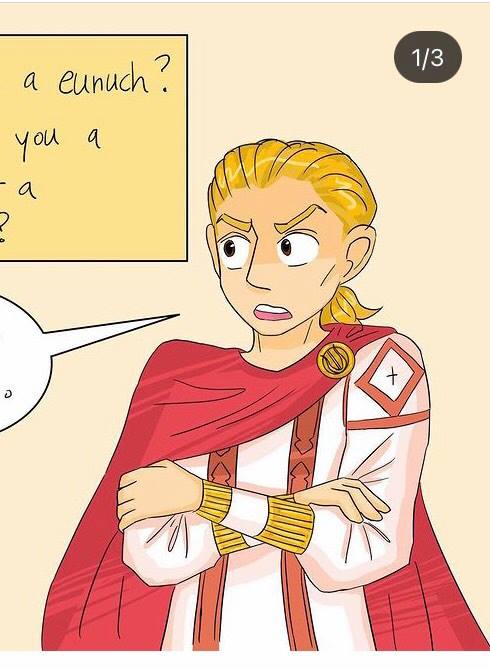
In real history though, Theophano was said to have taken part in this conspiracy by revealing to John and his conspirators the way into the palace and where her husband the emperor slept as she and John had an affair, but in this story since Theophano is not in the picture, John who also would not have an affair with Nikephoros’ wife here Zoe would have to bribe the workers in the palace to reveal to him a secret passage, although here the eunuch Basil Lekapenos who had been powerful under Nikephoros would also betray the emperor and side with John, and he too would reveal to the conspirators the way into the palace. On the night of December 10-11 of 969 when Nikephoros was sleeping deep inside the palace, John Tzimiskes would sneak out of the estate he was banished to right across the Bosporus together with Michael Bourtzes and 2 other assassins and take a small boat across the Bosporus to the seaside Boukoleon Palace where they heard the emperor was sleeping in. In real history Theophano had a part in it by leaving the door of her husband the emperor’s room unlocked to allow the assassins to kill him, but here again with Theophano not around it would be harder for John and his assassins to do the job so instead as they reached the seaside palace by boat, they would have to bribe some of the palace workers to show them the way and as it would turn out, these palace workers were not really loyal to the emperor and had already been informed by Basil Lekapenos that John and his men would come in at any time. On this extremely cold night, Nikephoros said his usual evening prayer before sleeping as he always did while John and his men were lifted up into one of the palace’s windows by a basket manned by some of the palace workers who then showed them the way to the emperor’s bedroom but when entering, they saw no one sleeping on the bed but when looking left they would actually see the emperor sleeping on a fur blanket on the floor wearing rags.
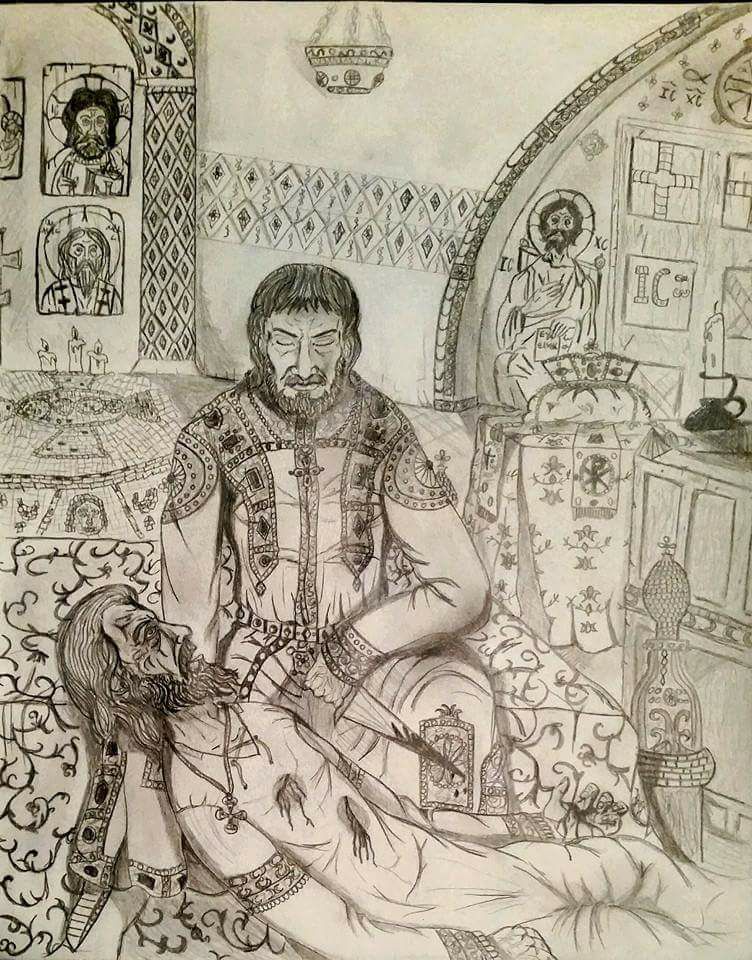
The moment they saw the emperor sleeping, no one hesitated and they all slashed him with their swords all at the same time, although Nikephoros would still wake up due to the pain and seeing his nephew John among the assassins, Nikephoros was heartbroken to see his nephew betray him but John did not hesitate, instead he berated his uncle about how heartless he was to fire him from command when he had done nothing wrong and as Nikephoros was slashed multiple times by the assassins, John gave his uncle the killing blow by stabbing him in the neck. The imperial guard or Tagmata from the other end of the seaside palace rushed to the scene as apparently the screams of Nikephoros as he was being slashed was very loud but when getting into the palace’s inner courtyard it was too late as above them, they saw John Tzimiskes in the balcony holding Nikephoros’ severed and bloodied head with blood dripping down to the lower floor, and here John announced that the tyrant emperor was dead and that he was their new emperor. The Tagmata panicking here when seeing their emperor dead did not know what to do and so they all just acclaimed John as their emperor, although minutes later Leo Phokas rushed into the scene believing his brother to be dead therefore thinking it was his turn to be emperor but here, when getting into the courtyard the Tagmata already being loyal to John seized and arrested Leo throwing him out of the palace. In real history however, Theophano put on her purple imperial dress and brought her sons with her right at this moment when Nikephoros had been killed thinking she would now marry John, but in this case without Theophano around, the empress Zoe would rush into the scene in her sleeping dress and would be very shocked at what happened as she had no part in the plot, and seeing all the blood and her husband dead despite never really being close to him, she would collapse. The next day, like in real history, Patriarch Polyeuctus would be in shock about Nikephoros’ assassination even if he never really liked Nikephoros but since this was an act of murder done by an uncrowned person which was John, it was totally unacceptable, but Polyeuctus being tired of all this changing of emperors and seeing no one else left to take the throne especially since Theophano is not here and so are her young sons, he would just agree to make John emperor anyway on the condition that he married Nikephoros’ widow Zoe, execute the assassins with him, and give Nikephoros II a proper burial at the Church of the Holy Apostles while Basil Lekapenos announced to everyone in the capital about what happened. Nikephoros II Phokas, the brilliant strategist and military hero of the 10th century who even had the legacy of writing and publishing a military manual but failed as a politician thus died the way he lived, which was in violence, but at least he died in the simple life he lived by sleeping on the floor, though for his religious accomplishments and fighting for the Orthodox Christian faith, Nikephoros II would become a saint too.
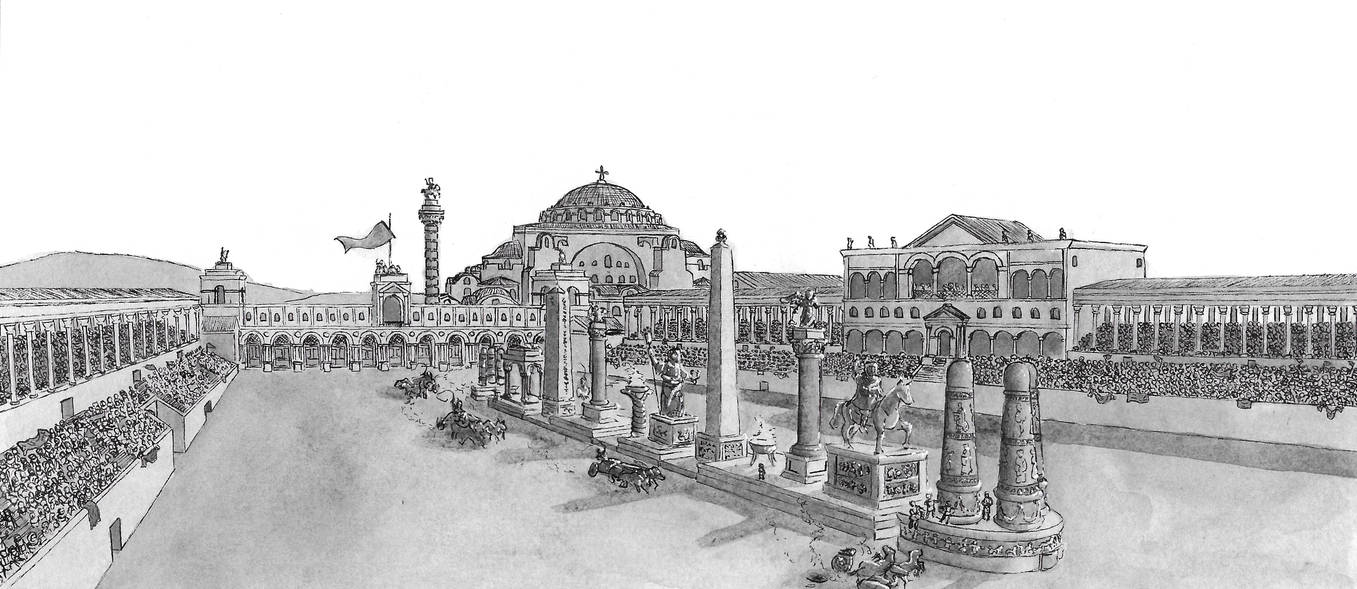
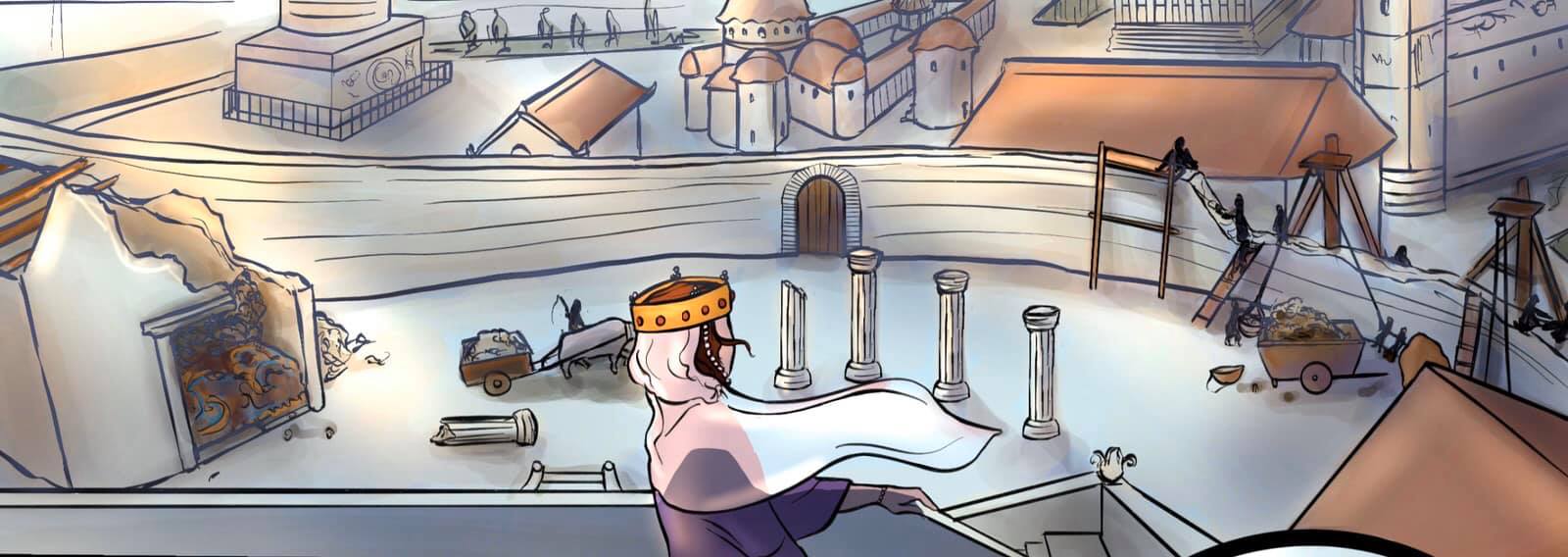
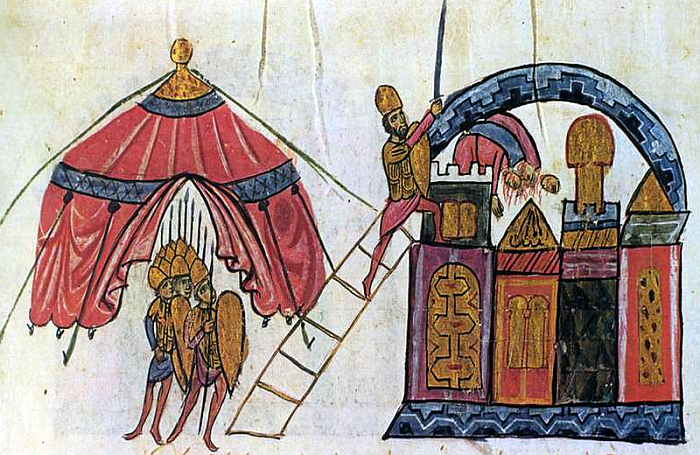
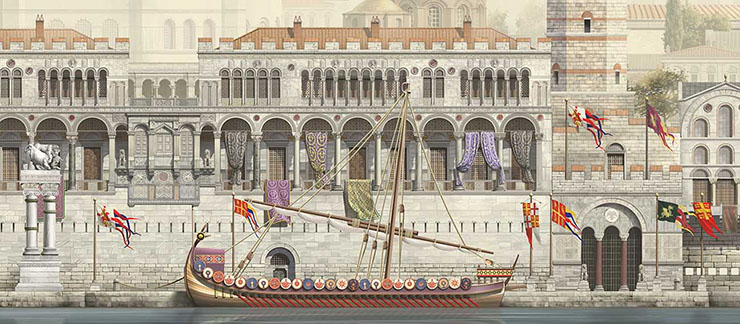
John I Tzimiskes, the Conclusion to this 10th Century Epic

Nikephoros II Phokas here like in real history died violently at 57 similar to how Michael III 102 years earlier where this story began died and now here, John I Tzimiskes rose to the throne at 44 on the condition that he was to execute the other 2 assassins with him except Bourtzes as if to look like John had no part in the plot to murder the emperor at all, and also to give a big percent of his money as a donation to small farmers and to construct a home for lepers, though in this story Polyeuctus would have to make John marry the empress Zoe to continue the dynasty. In real history however, Polyeuctus agreed to crown John Tzimiskes only if he banished the empress Theophano to the Princes’ Islands in the Marmara for good as here the blame on Nikephoros’ death was all put on her, and John not wanting to share power anyway agreed to banish Theophano even if they had an affair, but here in this story without Theophano there would be no condition that John would have to banish anyone and with her sons not being around here as the already crowned co-emperors too, John would not have to share power with anyone. In real history, John was indeed forced to marry another one of Romanos II’s sisters and the one the he did not choose but was chosen for him by Polyeuctus was Theodora who was someone unattractive but intelligent compared to Theophano, though here in this story since Zoe was not suspected in any way to be part of the murder of Nikephoros the way Theophano was in real history, Zoe would be spared but forced to marry John. On the other hand, Theophano in real history may have not seemed to have any part in the murder of her husband Nikephoros II but was only used a scapegoat by Polyeuctus as she was an ambitious woman in a time when ambitious women were looked down upon, therefore she was banished, though it was by the time John Tzimiskes became emperor following the exile of Theophano where the idea of Theophano being part of the plot was promoted according to present day historian Anthony Kaldellis.
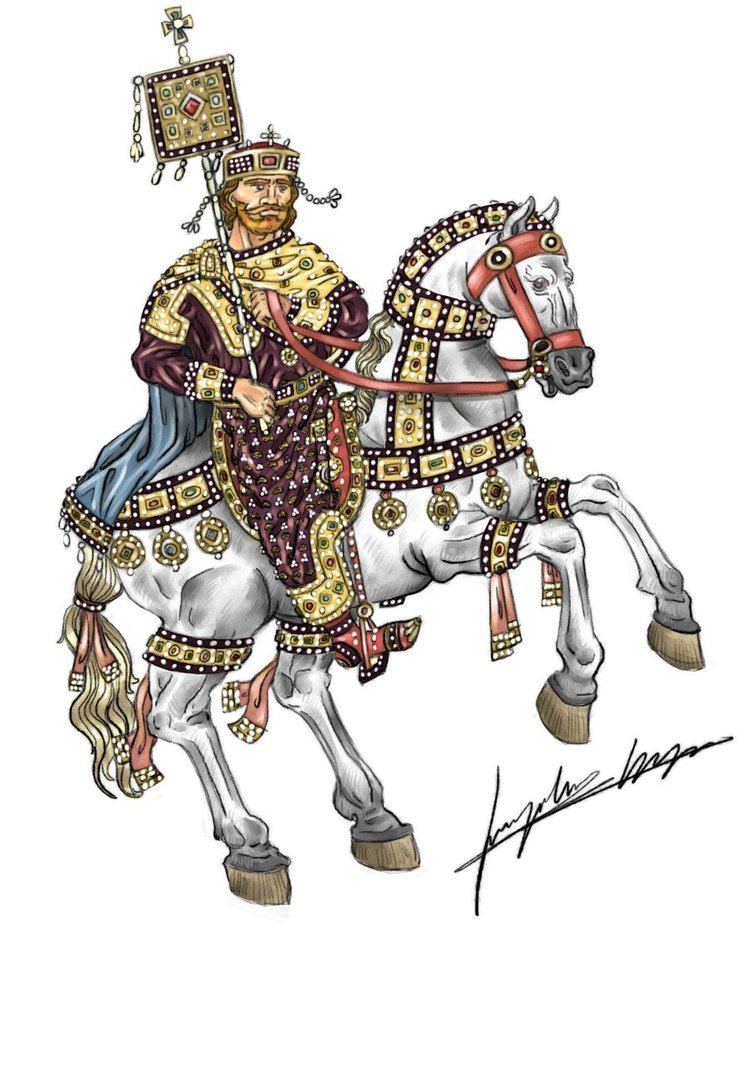
Now since the main plot of this story ends with the assassination of Nikephoros II, where the graphic novel Theophano had ended as well, we will basically just fast-track the next 5 years of Byzantium under John I Tzimiskes before we get to the ultimate conquest of Bulgaria. Now at the beginning of 970, just about a month after John I became emperor, Patriarch Polyeuctus had died after seeing a change of emperor 3 times in only 10 years and following his death, John appointed his friend the ascetic monk Basil Skamandrenos as the new patriarch who as John’s friend would totally recognize him as the legitimate emperor, although the biggest challenge for John when coming into power would be his uncle Leo Phokas who was still around and even after being arrested at the night of his brother Nikephoros’ assassination, Leo at some point in 970 would break free and rebel, attempting to seize the throne to avenge his dead brother but John would immediately put down Leo’s rebellion and banish Leo and his sons to the island of Lesbos in the Aegean for good while Leo’s son Bardas Phokas the Younger who was here stationed in Cappadocia would be arrested and imprisoned there. Now as emperor, John would start off finishing everything Nikephoros II could not but also clean up all the mess he created and by this, John at first like his uncle Nikephoros not being so interested in the state’s administration would leave behind the eunuch Basil Lekapenos in Constantinople to be in charge of the finances while John would immediately set off to campaign against Sviatoslav in Bulgaria and finish him off for good, and afterwards conquer Bulgaria itself which had already been weakened by Sviatoslav’s Rus’ invasion, and to lead the troops in battle, John would appoint his brother-in-law Bardas Skleros as the new top commander of the Byzantine forces while Michael Bourtzes would be put back in charge in the east. For the campaign against Sviatoslav in Bulgaria, John I however only had 12,000 soldiers with him although they were all veteran elite forces including Cataphracts and the Tagmata, but Sviatoslav’s army was much larger in number as he allied himself with the Magyars and Pechenegs north of the Danube as well as with some Bulgarian Boyars (aristocrats). The campaign at first began with some difficulty for the Byzantines until they were able to trap Sviatoslav’s forces at a mountain pass where they would eventually lose to the Byzantine forces led by Bardas Skleros at the Battle of Arcadiopolis, thus the undefeatable Sviatoslav was defeated for the first time having to leave Thrace and fall back north to Bulgaria. Though making some progress against Sviatoslav, John I got word from Asia Minor that Bardas Phokas escaped prison and proclaimed himself emperor in the name of his uncle Nikephoros II using the troops there still loyal to Nikephoros II and when hearing of this, John briefly abandoned the Bulgarian campaign sending Bardas Skleros to Asia Minor to deal with Bardas Phokas.
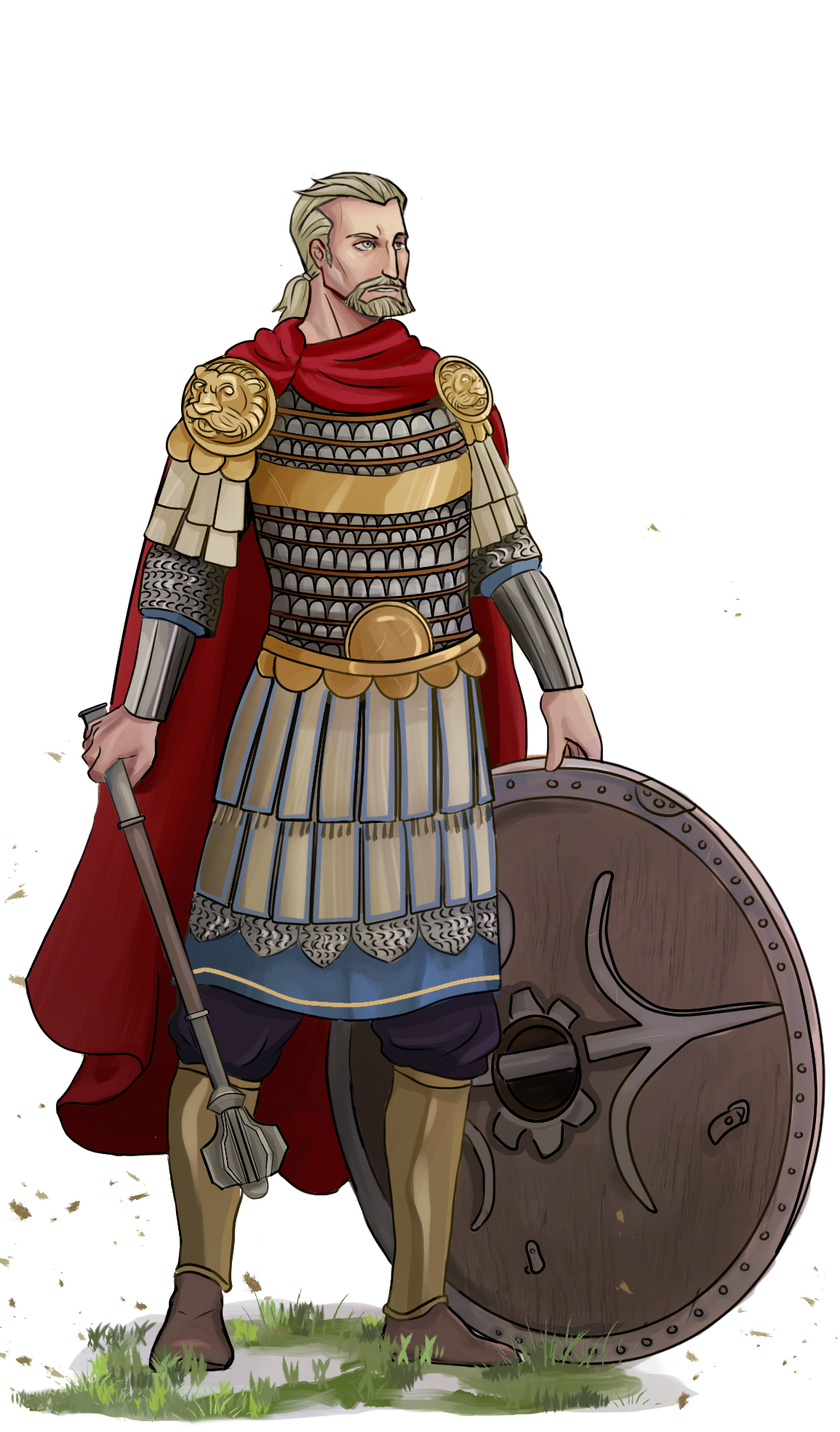
At the end, Skleros was able to win by diplomacy by having men dressed up as beggars to convince Phokas’ men to turn on him and join John’s army wherein they will be rewarded, thus they defected to the imperial army while Phokas left with only 300 men fled to a castle where he eventually surrendered to Skleros knowing he would not win. Bardas Phokas was then exiled to the Aegean island of Chios while his father Leo in Lesbos was blinded, never to return again. With Bardas Phokas dealt with, John with Bardas Skleros later on in 971 resumed the Bulgarian campaign this time with 40,000 men marching north through the mountain passes while their fleet sailed up the Black Sea to attack Sviatoslav’s forces at the Danube. When reaching the Bulgarian capital of Preslav, John had burned it to the ground to force the Rus’ forces to surrender it to them and at the end, the Byzantines were able to seize Preslav wherein among the Rus’ hostages in the citadel, they found the Bulgarian tsar Boris II, who succeeded his father Peter I after his abdication and retirement to a monastery in 969, and shortly after in 970 Peter died as a monk.

John then allowed Boris II to be spared promising him too that the Byzantines were there to not conquer Bulgaria but liberate them from the Rus, although after liberating Preslav, John I renamed the city Ioannopolis after himself. John with his forces then headed up to the Danube where Sviatoslav was, and after defeating Sviatoslav’s forces at the Battle of Dorostolon, Sviatoslav now being outnumbered with the Byzantine fleet blocking off the mouth of the Danube into the Black Sea to prevent his escape then finally surrendered to John I without a fight. Both John I and Sviatoslav then met in person along the Danube where Sviatoslav surrendering to John agreed to never attack Byzantine territory again in exchange for his people, the Rus to freely trade in Constantinople and before Sviatoslav departed by boat, he was given food and supplies by the Byzantines. John I however did not keep his word to Boris II who he took as a prisoner to Constantinople where John proclaimed that he had conquered Bulgaria while Sviatoslav on his way back to his capital of Kiev was betrayed by his Pecheneg allies who ambushed him here in 972 while he was crossing the Dnieper River back to his lands, and after he was killed, Sviatoslav’s skull was made into a drinking cup by the Pechenegs, like what happened to the Byzantine emperor Nikephoros I back in 811.
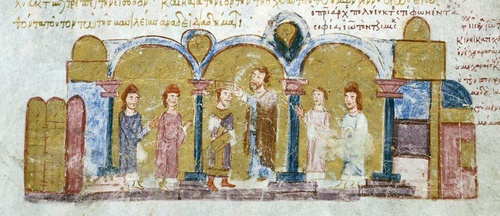


In 972, John I had declared he had conquered the Bulgarian Empire up north making it a Byzantine Theme while the Bulgarian tsar Boris II and his brother Roman were brought to Constantinople as captives and paraded at John I’s triumphal procession, although Boris II was allowed to live in Constantinople as the Bulgarian tsar in exile, while Roman was castrated to make sure their bloodline- the bloodline of Krum- died out. Although John I thought he had conquered all of Bulgaria, the northern and western portions of the Bulgarian Empire (today’s Western Bulgaria, Romania, Serbia, and Macedonia) was not fully put under Byzantine rule, and here over the years a resistance would grow to restore to the Bulgarian Empire led by the aristocratic Cometopuli clan which was of Byzantine Greek and Armenian origins. After thinking he had conquered all of Bulgaria, John I returned to where Nikephoros II failed, which was in foreign policy with the Holy Roman emperor Otto I and so in 972, John I did what Nikephoros II failed, which was to give Otto a Byzantine bride and the person John chose for Otto I’s son Otto II like in real history was his young niece from the Skleros clan- his late wife’s family- also named Theophano who later on in 972 travelled all the way to Germany and married the young Otto II, thus settling peace between Byzantium and the new Holy Roman Empire of Germany and Italy.
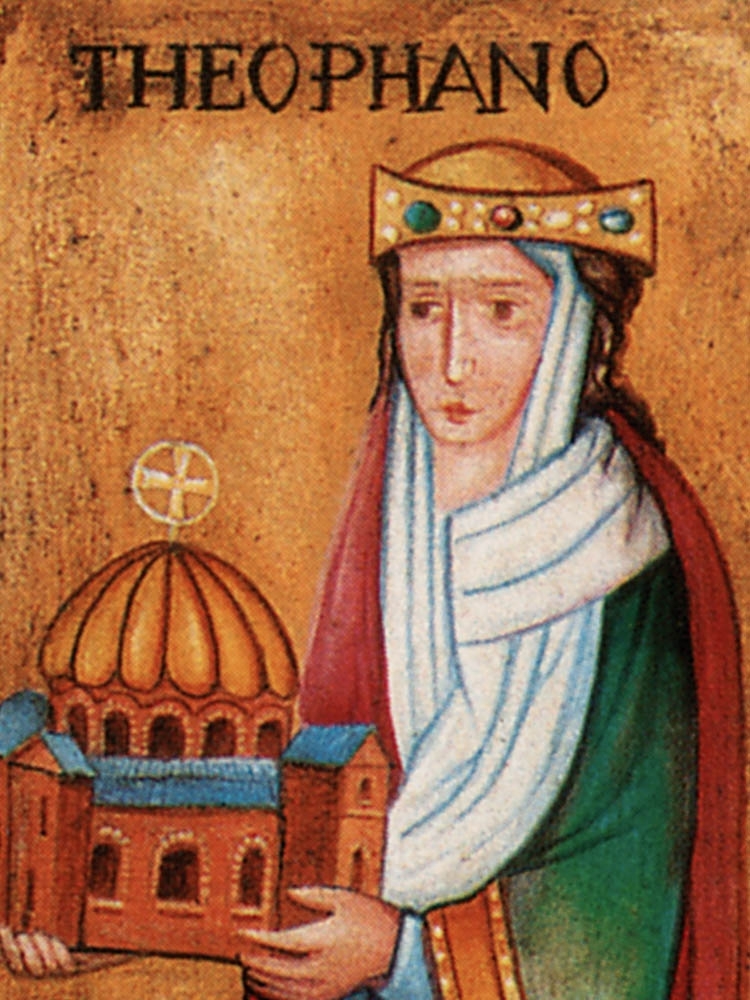
The threat of Otto I to Byzantium’s imperial power would then be over in 973 when Otto I died while his son the new Holy Roman emperor Otto II would not be as much of a threat to Byzantium as his father was and in fact with his marriage to Theophano, the Holy Roman Empire would even adopt some Byzantine cultural practices including the use of the fork for eating, which the Franks at first laughed at and were even scandalized by. Now with the threat of Sviatoslav over, a third of Bulgaria captured, and the issue with the Holy Roman Empire settled, John I returned to finishing off his uncle’s eastern campaigns which was now easier for the Byzantines following the death of Sayf al-Dawla back in 967 which weakened these Islamic Arab states, although despite these states in the Middle East including the Abbasid Caliphate of Baghdad weakened, a new Islamic power had been arising which was that of the Fatimid Caliphate which were believers of Shia Islam, the other sect of Islam which believed their ruling caliph should be a descendant of the prophet Muhammad, and in 969 the Fatimids had already conquered Egypt making it their base where they would start posing a threat to the Byzantines.

John I later in 972 marched into Mesopotamia once again although not for long as he returned to Constantinople leaving his general Melias to be in charge while John continued his uncle’s reforms of limiting the power of the landed aristocracy and giving more power to the small farmers. In 975, John I returned to leading the army himself and this time deep into Syria which the Byzantines could now achieve after the reconquest of Antioch and in one swift campaign, John and his forces were able to do what the Byzantine forces did not in over 300 years which was in recapturing the Syrian cities of Emesa and Damascus which the latter was the capital of the old Arab Umayyad Caliphate that died out in 750, and following this John I was able to reach as far south as Lebanon recapturing the cities of Baalbek, Tripoli, Sidon, Byblos, and Beirut, before reaching the Sea of Galilee recapturing Tiberias and Nazareth for the Byzantines, though his campaigns would end right here before being actually able to retake the ultimate prize of Jerusalem that had not been under Byzantine hands since it fell to the Arabs in 637. John I had then returned to Constantinople in January of 976 where he suddenly died in which most sources blamed the eunuch Basil Lekapenos for poisoning him, and in this story’s case it would be true as John had confiscated some of Basil’s ill-gotten lands and wealth, and in revenge Basil poisoned him. Now in real history with John I dead in 976 at the age of 50, Romanos II and Theophano’s eldest son Basil II was already 18 here therefore being of legal age to rule alone in which he did although still under the influence of his grand-uncle Basil Lekapenos, while Theophano had returned to the palace sometime here. In this story’s case, since there is no Theophano and therefore no Basil II, and John I too despite being married to Romanos II’s twin sister Zoe would not have any children with her as he also chose to barely stay with his wife similar to Nikephoros II, and so here in this story before John I died, he wrote his will proclaiming that his brother-in-law Bardas Skleros was to succeed him as emperor as they had family ties, and following John’s death Bardas immediately came to power without any challenge.



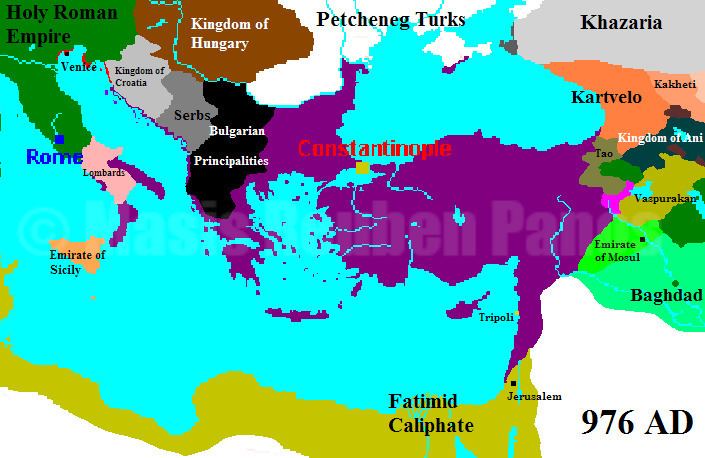
In this story’s case with Bardas Skleros as the new Byzantine emperor, some things that did happen in real history whereas Basil II finally succeeded John I would happen, but a lot would be different too. What would be the same here in the reign of Bardas Skleros was that like in reality, the Bulgarian brothers Boris II and Roman, who happened to be great-grandsons of Romanos I Lekapenos- through his granddaughter Maria’s marriage to their father Tsar Peter I if you remember- would escape captivity in Constantinople in 977 and make their way into the still independent 2/3 of the Bulgarian Empire, although like in real history Boris II here would get killed by his own Bulgarian troops mistaking him for an enemy, though Roman like in reality would survive after proving his identity.

Although back in the Bulgarian Empire, Roman would not really rule himself as he had been turned into a eunuch and at the same time during their absence, the new ruling dynasty of the Cometopuli rose up in resistance to the Byzantine conquest, and though Roman would only be a figurehead ruler as he was from the dynasty of Krum that dated back to 803, the real power over Bulgaria was at the hands of Samuil, the youngest of the Cometopuli brothers and a military genius. Now in real history, it would take another 40 years for Byzantium under Basil II to fully annex the Bulgarian Empire into Byzantium as Basil II had to deal with civil wars and usurpers in Byzantium itself such as Bardas Skleros who in 976 after Basil II came to power declared himself emperor in opposition to the legitimate emperor Basil II but more so to the power behind Basil II which was Basil Lekapenos who was still powerful. In real history, Bardas Skleros rebelled after Basil Lekapenos fired him from his position as the supreme commander of the eastern forces while also releasing the rebel general Bardas Phokas from his imprisonment in Chios to strike against Skleros, although Skleros in real history had a stronger position as he was able to confirm an alliance with the small time Armenian, Georgian, and even Islamic rulers along Byzantium’s border, and true enough Skleros defeated Phokas’ forces that were loyal to the emperor Basil II in two battles, but in the third one Skleros was defeated in which his soldiers even believed him to be dead after he lost in personal combat to Phokas.
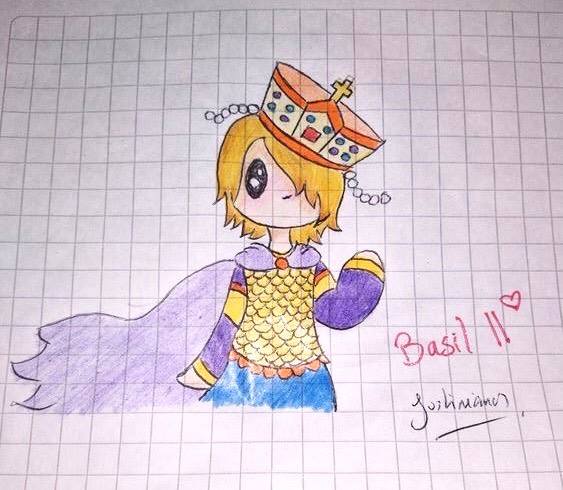
Skleros however had escaped to Baghdad to seek refuge there with the Abbasid Caliph where he would plot an invasion of Byzantium all while the emperor Basil II here had grown up and had shown that he did not want to be a weak ruler or puppet to his grand-uncle Basil Lekapenos anymore, and so in 985 he accused Basil Lekapenos for conspiring with the rebels and then fired and banished him for good, and in 986 Basil II himself led the army against Bulgaria but was defeated at the Battle of Trajan’s Gate by Samuil’s forces due to Basil II’s inexperience. This defeat made Basil II have a lifetime grudge against Bulgaria making it his ultimate goal to conquer it for good, though this defeat made Bardas Phokas lose faith in the emperor and turn against him that in 987 he called Bardas Skleros back from Baghdad to join forces with him against Basil II.

In real history, Basil II made an ultimate alliance with the new Prince of the Kievan Rus’ Vladimir I, the son of Sviatoslav in 988 which provided Byzantium military aid with over 6,000 Varangian (Rus and Scandinavian) warriors to join in the imperial service as the elite bodyguard force of the emperor, in exchange for Vladimir to convert to Christianity, and also part of the deal was to marry Basil II’s sister Anna who was such a great prize to marry for being a Byzantine princess as twice when offered a marriage, she refused it. With the help of these large sized and fierce Varangian warriors now in the imperial service as the legendary Varangian Guard, Basil II was able to defeat the rebellion of Bardas Phokas in 989 wherein Phokas here fell off his horse due to a seizure and died, thus ending his rebellion. Although the rebellion of Bardas Phokas the Younger ended, Bardas Skleros now an old man succeeded Phokas as the leader of the rebellion against Basil II, but eventually the cause of the rebellion had been weakened and in 991 Skleros surrendered to Basil II without a fight and died peacefully just days later.

The full conquest of Bulgaria in reality however would only take place 2 decades after Basil II put down all opposition against him, as Basil had to conclude peace with the Islamic powers including the rising Fatimid Caliphate in order to launch a full-scale invasion of Bulgaria without distractions while over in Bulgaria, Roman died in 997 and without any heirs was succeeded by Samuil as the full tsar. The Byzantine conquest of Bulgaria in real history would then only be completed in 1014 when Basil II won a decisive victory over Samuil’s forces at the Battle of Kleidion and by 1018, all of the Bulgarian Empire was conquered, thus Byzantium having all of the Balkans would be at its greatest extent of territory in almost 400 years. Now in this story’s case on the other hand without Basil II ruling and beginning out badly due to his inexperience in military matters, Bardas Skleros having more military experience despite being not a very competent planner as the Byzantine historian Michael Psellos (1017-1078) said, he would act much quicker in subduing all opposition against him and finishing off the Bulgarian threat as compared to Basil II in real history. First of all, Bardas Skleros soon after coming into power in 976 here would execute Basil Lekapenos on charges of poisoning John I Tzimiskes, although like in real history Bardas Phokas the Younger too would actually be released from Chios by Basil Lekapenos before Lekapenos would be executed, and back in action Phokas would launch a massive rebellion against Skleros, although Skleros would do the same here as he did in real history by allying with the Armenians, Georgians, and Islamic powers against Phokas. For this story, I would just say that Skleros as the legitimate emperor chosen by John I to succeed him would eventually defeat Phokas the same way he did in real history after winning two battles, and as Skleros would have more support from the Byzantine senate and the aristocracy, Phokas in this story would be defeated in 979 wherein Skleros would kill him in single combat. Being a more capable military commander, Skleros unlike Basil II in real history would therefore not ask for a military alliance with the Kievan Rus’ prince Vladimir I in exchange for Vladimir to convert himself and his people to Orthodox Christianity, therefore there would be no Varangian Guard in the Byzantine army to assist Skleros in conquering Bulgaria, although for the next chapter of this series, the Varangians would play a big role- SPOILER ALERT! Skleros in this story instead would lead the Bulgarian campaign himself beginning 980 and unlike Basil II in real history who would take 3 more decades to conquer Bulgaria, Skleros here would take around only 7 years as Bulgaria was already weak here unlike in real history where they were able to regain strength after defeating the Byzantines in 986. Here, Skleros would instead win a number of victories and would penetrate deep into the Bulgarian heartland which is now the Central Balkans, and by 987 would capture the Bulgarian’s capital of Ohrid. In this story, Samuil himself leading his forces would be slain in battle by Skleros’ men in 987 while Roman not being actively leading the empire would end up captured and executed by Skleros, thus before 990 the Bulgarian state that had troubled Byzantium for over 300 years since 681 would be wiped off the map and all of the Balkans south of the Danube would be under Byzantine rule again after 4 centuries, thus Byzantium before the turn of the 11th century would become a superpower respected and feared by all around them. As for Bardas Skleros, his date of death in this story’s case is unknown but he would be the one to establish the new Skleros Dynasty, and by having sons it would live on to ensure a powerful and highly influential Byzantium. Now, it is only in the long-term where you could see how the empress Theophano not being around would have an impact in Byzantine history and this was not only because her son Basil II would not be around as even without Basil II who did achieve the ultimate goal in eventually conquering Bulgaria and becoming known as “the Bulgar-Slayer”, the Byzantines would still conquer Bulgaria anyway, in fact even much earlier, but more so because of her daughter Anna’s marriage to the Kievan Rus’ prince Vladimir I.

Now this marriage between Anna and Vladimir was a very crucial one as not only did it give military support to Byzantium, but this began the mass conversion of the Kievan Rus’ state that would eventually be Russia, Ukraine, and Belarus to Christianity, and Anna who being Theophano’s daughter was the one that made this happen, therefore this was Theophano’s major role in history. Although even without Vladimir’s marriage to Anna, the Rus’ may still convert to Orthodox Christianity as true enough Vladimir had been searching around for world religions and when given the choice between Islam, Judaism, Catholic Christianity, and Orthodox Christianity, he chose Orthodoxy as he heard from his ambassadors about the riches of Constantinople and the impressiveness of Orthodoxy’s main cathedral of the Hagia Sophia, therefore he chose Orthodoxy believing it was the religion of the powerful, which means even without marrying Anna, Vladimir may still convert his state to the religion of the Byzantines, therefore becoming a Byzantine ally. Not to mention, Theophano was also vital for being the mother of Constantine VIII, the brother and co-emperor of Basil II who would continue the dynasty through his children that would rule the empire until 1056 in real history. Either way, with or without Theophano around, Byzantium after conquering Bulgaria would again be a world power like it was under Justinian I in the 6th century both militarily and culturally, except not as powerful as it was under Justinian I, as then it had the whole Mediterranean, but here by the end of the 10th century by having all of the Balkans, all of Asia Minor, and all the way south to the Levant as well as to Southern Italy in the west, the Byzantine Empire would be a major power respected and feared by all, and by conquering all of Bulgaria, other powers would dare not bother to mess with Byzantium or they would suffer the same fate as Bulgaria and be wiped off the map.
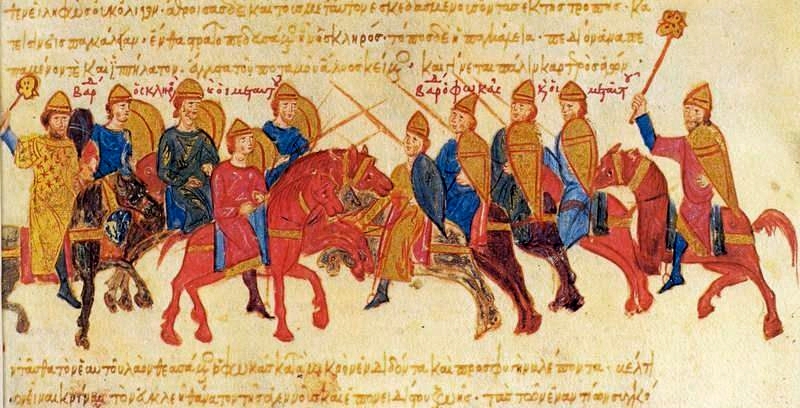



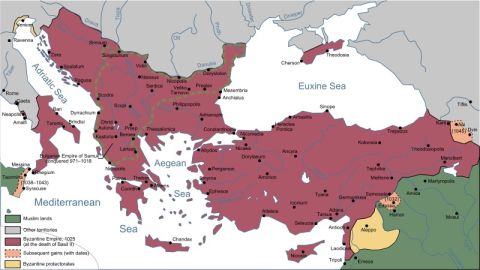
Watch this to learn more about Emperor Basil II (Kings and Generals).
Our story will now end here where the eventful action-packed roller coaster of the 10th century ends whereas in this story’s case Byzantium had gone a long way from an empire on the verge of extinction threatened on all sides to its apogee as a medieval superpower respected and feared by all around it. In the last 3 chapters of this series set between the 7th and 9th centuries, Byzantium went through a rough time of constant invasions from the Arabs in the east or the Bulgarians in the north, political instability, and a lot more including the destruction of icons or Iconoclasm, thus giving the Byzantine Empire and its society a dystopian setting, and at the end, nothing may have seemed to work to reverse all the setbacks and misfortunes the Byzantines had been facing, but at the end, this whole Byzantine Dark Ages did not go on forever, and little did the Byzantine people or their rulers know their empire would once again have a revival. Of course, the revival of the Byzantine Empire in cultural and military power known as the Byzantine Renaissance did not all happen in an instant, it in fact took some time, good leadership, the right reforms, diplomacy, some luck to achieve it, and even a bit of borrowed foreign influences such as the sophisticated intellectual culture the Byzantines borrowed from the Arab Abbasid Caliphate in the 9th century. It also did not just take some years, decades, or a century, it did in fact take 2 centuries for the Byzantines to consolidate their position as a military and cultural power, and this why the 9th century played significantly in this chapter when it was supposed to be exclusively for the 10th– as this series focuses on one century per chapter- as you cannot tell the story of the 10th century better known as the military and cultural revival century without telling about the origins of this revival which took place in the 9th century. On the other hand, this revival or renaissance of the Byzantine Empire which happened gradually over so many years was not something one person was responsible for doing, but rather the work of many people and their efforts to put it together. For this Byzantine Renaissance to be possible we have to thank the people mentioned in this story like Emperor Theophilos in the 9th century for adopting Arab influences and using state money to promote Byzantine sophisticated culture, Empress Theodora for putting an end to Iconoclasm once and for all in 843 which thus brought a sense of unity to the empire’s identity, Patriarch Photios for using the spread of Orthodoxy to secure alliances with people beyond the empire, Emperor Basil I despite his humble origins and lack education for finally having the guts to expand the empire east, Leo VI and his son Constantine VII for showing that emperors were not only powerful as military leaders but as sophisticated and learned scholars that could prove Byzantium is also superior in culture, Romanos I Lekapenos for putting the empire’s new military might into action and making reforms that would benefit not just the aristocracy, Nikephoros II Phokas despite his failure in diplomacy and political skills for showing that Byzantium was no longer an empire that fought to defend itself but could fight to conquer lands far beyond their borders, and lastly John I Tzimiskes for also showing that the Byzantine army was now an undefeatable war machine. Now the person removed from this story which was Empress Theophano, wife of Emperor Romanos II and Nikephoros II afterwards happens to be not very vital at all in the Byzantine Renaissance, but if you look closely she does have a role and this was to add to the complexity and scheming side of Byzantium for her part in being involved in both her husbands’ and father-in-law’s deaths, whether it may or may not be real, but either way her part shows some more color and drama to complete the story of the Byzantine Renaissance, thus making Byzantium more “byzantine” meaning complex. After all, this story set in the 10th century just shows how “byzantine” Byzantium was, but on the other had with all these power struggles and schemes, this also still shows that the traditions of the ancient Roman Republic still lives on even if Rome has been long gone and replaced as Byzantium. Anyway, even without Theophano, the period of the Byzantine Renaissance from the 9th to 10th centuries is still ever more colorful especially with all the murder plots, legitimacy issues, marriage scandals, scheming eunuchs, military rebellions, superior weapons and war tactics, diplomatic solutions, and the obscure but interesting Byzantine court ceremonies and practices all mentioned in this story. In addition, I also chose to label the dynasty ruling in the 10th century where Leo VI, Constantine VII, and Romanos II were part of as the Amorian Dynasty from 820 continued going with the historical speculation of Leo VI being Michael III’s son to add some more intriguing element to the colorful story of the Byzantine Renaissance, though in the end it still would not matter whether it was under the Amorian or Macedonian Dynasties when the Byzantine Renaissance happened, because all that would matter at the end was how great or colorful these Byzantine emperors were and not what dynasty they belonged to, and true enough the people that proved the strength of Byzantium in this time like Romanos I, Nikephoros II, and John I were not from the ruling dynasty but had only married into it. The process to achieve the complete Byzantine Renaissance at the end of the 10th century thus was rather a tricky one that involved a lot of blood and dishonesty, but the end result was very rewarding for Byzantium as after 3 centuries of being in the Dark fighting for its survival while also being insecure in their imperial position with the rise of a new empire in the west being that of the Franks, Byzantium would become the military power that had been able to strike back against the Arabs after 3 centuries of having to defend its borders against them, the power that dominated Eastern Europe culturally and spiritually by being the one that influenced most of the Eastern European powers like the Bulgarian Empire and the Kievan Rus by spreading Orthodox Christianity to them as well introducing to them an alphabet that would still be used up to this day, and lastly being the cultural superpower that was able to win over the rising Holy Roman Empire, and rather than feeling threatened by the rise of them as Byzantium was in 800 with Charlemagne’s coronation, Byzantium by the end of the 10th century was able to even influence them in imperial court culture.

Now in real history, it would be in 1018 when Emperor Basil II becoming known as “the Bulgar-Slayer” conquered the entire Bulgarian Empire when Byzantium would be at its greatest territorial extent again since 4 centuries earlier before the rise of the Arabs, and therefore a power respected and feared by all around them, but again as I mentioned earlier it did not really need Basil II to achieve this as any other competent military emperor in which this era had many of, in this story’s case being Bardas Skleros instead of Basil II would also achieve this. Anyway, this has been an extremely long chapter and I would say that it could have even been longer if I went into so much detail in describing each of the lead characters’ stories, but since this story spanned a longer amount of time than the other chapters in this series did and had so many interesting lead characters, it was only right for me to give each of these lead characters the equal amount of attention, therefore writing this story in something more of a fast-tracked documentary in style which just goes with almost everything really being what they were in reality except for a few twists here and there, and only at the very end do things become really different without Emperor Basil II who is in fact Byzantium’s longest reigning emperor. In the next chapter of this Byzantine Alternate History series, this Byzantine Golden Age continues at the beginning of the 11th century and following the conquest of Bulgaria in 1018 by Basil II, the Byzantine Empire will for once enjoy a time of peace and stability, but not for long as again the “cold war” situation with the west becomes worse and in the east, a new and unexpected enemy will rise and replace the Arabs, and this is when we say goodbye to the Arabs as Byzantium’s traditional enemy, and say hello to the Turks who will threaten Byzantium in the east, while we will also meet another new enemy being the Normans in the west, and the year 1071 will be the beginning of Byzantium’s permanent decline when they suffer an ultimate defeat to the Turks of the new Seljuk Empire at the Battle of Manzikert, but the next chapter will explore an alternate history scenario of what if the Byzantines won this battle, and how different history would be because of this. Well, this is all for chapter VII of Byzantine Alternate History, this is Powee Celdran, the Byzantine Time Traveller… thank you for your time!
Next Story: Byzantine Alternate History Chapter VIII- 11th Century





6 thoughts on “Byzantine Alternate History Chapter VII- A Retelling of the Bizarre Byzantine Renaissance and the Macedonian (Amorian) Dynasty”